


















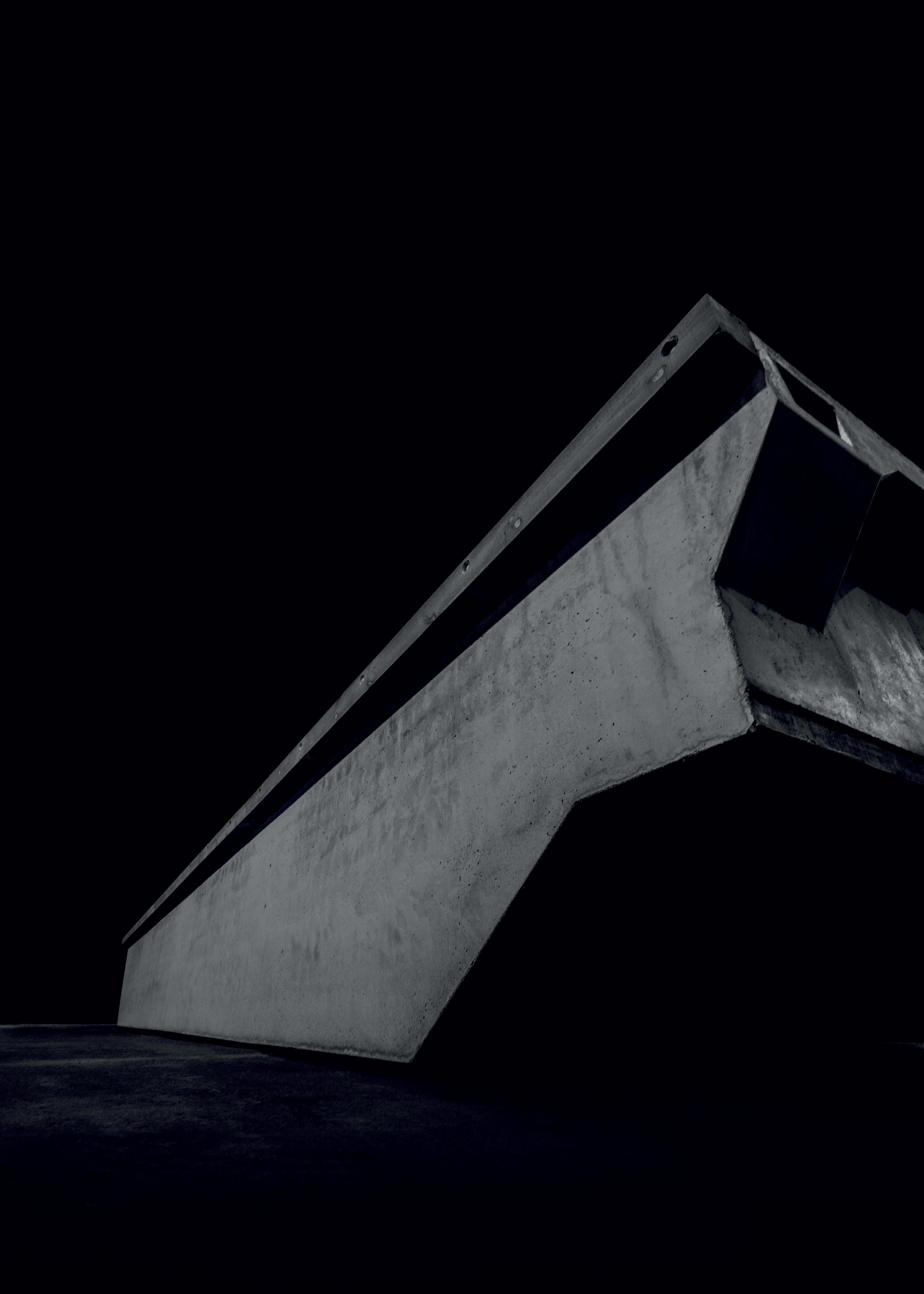
As our product range has evolved, it now has many applications. Together with our clients, we have the luxury of choosing the right pontoon, in the right materials, for the right job. By developing the heavy-duty end of our portfolio to always be a step stronger, we’ve also become experts in floating breakwaters, able to incorporate the strongest of building blocks when designing and engineering a marina that will withstand the test of time. Marinetek.net
HEAD OFFICE MAILING ADDRESS & SUBSCRIPTION ENQUIRIES
Loud & Clear Publishing Ltd,
School Farm, School Road, Terrington St. John, Cambridgeshire PE14 7SJ, UK
Editor
Carol Fulford
T: +44 (0) 1945 881018
E: carolfulford@marinaworld.co.uk
Deputy Editor
Charlotte Niemiec T: +44 (0) 1945 881018
E:charlotteniemiec@marinaworld.co.uk
Advertisement/Commercial Director
Julia Hallam
T: +44 (0) 1621 855 890
E: juliahallam@marinaworld.co.uk
Administration Manager
Corinna Francis T: +44 (0) 1621 855 890
E: corinnafrancis@marinaworld.co.uk
Finance Manager
Magdalena Charman T: +44 (0) 1403 733678
E: accounts@marinaworld.co.uk
Advertisement Production
Nick Hing T: +44 (0) 1323 490384 E: adstudio@marinaworld.co.uk
NORTH AMERICAN OFFICE
Sales Director Americas
Philippe Critot PO Box 29759, Los Angeles, CA 90029-0759, USA
T: +1 323 660 5459 F: +1 323 660 6030
E: pcritot@marinaworld.com
FRENCH OFFICE
Publisher’s Representative Catherine Métais T: +33 6 60 17 75 81 E: catherinemetais@marinaworld.com
ITALIAN OFFICE
Advertisement Representative
Ediconsult Internazionale srl
piazza Fontane Marose 3, 16123 Genoa, Italy
T: +39 010 583 684 F: +39 010 566 578
E: genova@ediconsult.com
ASIA PACIFIC OFFICE
Publisher’s Representative Suzanna Kovacevic T: +61 438 22 46 09
E: suzanna@marinaworld.com

Marina World (ISSN 1471-5856) is published bi-monthly by Loud & Clear Publishing Ltd, School Farm, School Road, Terrington St. John, Cambridgeshire PE14 7SJ, United Kingdom.
The 2020 US annual subscription price is $160. Airfreight and mailing in the USA by agent named WN Shipping USA, 156-15 146th Avenue, 2nd Floor, Jamaica, NY 11434, USA.
Periodicals postage paid in Jamaica NY 11434.
US Postmaster: Please send address changes to MARINA WORLD, WN Shipping USA, 156-15, 146th Avenue, 2nd Floor, Jamaica, NY 11434, USA.
Subscription records are maintained at Loud & Clear Publishing Ltd, School Farm, School Road, Terrington St. John, Cambridgeshire PE14 7SJ, United Kingdom. Air Business Ltd is acting as our mailing agent.
Marina World is available on subscription at the following cost:
1 year (6 issues) - £80.00 Sterling ($160)
2 years (12 issues) - £140.00 Sterling ($280)
No part of this publication may be reproduced without the prior permission of Loud & Clear Publishing Ltd, the copyright owners. Upon application, permission may be freely granted to copy abstracts of articles on condition that a full reference to the source is given.
Printed in the UK by Stephens & George
© 2020 Loud & Clear Publishing Ltd
Views expressed by individual contributors in this issue are not necessarily those of Loud & Clear Publishing Ltd. Equally, the inclusion of advertisements in this magazine does not constitute endorsement of the companies, products and services concerned by Loud & Clear Publishing Ltd. The publisher reserves the right to refuse advertising.
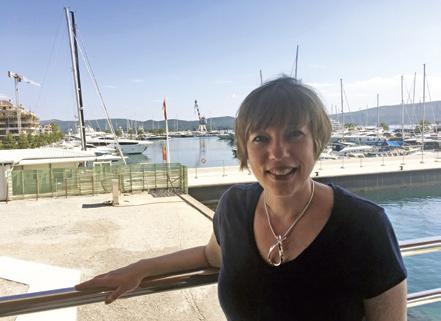
Our world has changed. Every country continues to weave its own way through the COVID-19 pandemic that has caused such pain and grief, upturned our priorities, and run amok with our livelihoods and economies.
Boating and the impact on boating facilities continues to vary wildly on a regional not just national basis, and policy change tends to be swift. As this issue of Marina World goes live, the bulk of marinas are either open for business or are expecting to open before the end of the month. There will, however, continue to be restrictions regarding social spaces that will impact on revenues and every marina’s social and destination appeal. None of us knows how matters will progress if serious subsequent outbreaks of the virus occur.
As of early June, many marinas in the USA that were officially closed are cautiously opening up; marinas on the west coast of Canada that were never closed are preparing for a busy summer season; boating is back in England; Sweden, which never imposed a full lockdown, expects boating to resume as the summer progresses; and restrictions have been lifted in countries like Finland, Germany, Greece and Portugal*. In northern Italy where the virus hit hard and early, marinas are now open and, in New Zealand, which was swift to impose lockdown measures, opening up social spaces is ahead of the global curve.
Fortunes are not, however, necessarily linked directly to the virus. In Croatia, for example, where COVID-19 had only minimal impact, the knock-on effect of a depressed charter market is likely to cause serious economic difficulty as it represents a very high percentage of boating activity.
But are we looking at short term loss and long term gain? Some economists argue that a recession can make economies more productive in the long term. Although, sadly, some good businesses fail during the process, many of the most efficient survive and new companies are also formed with precise goals to meet new needs. The Austrian political economist Joseph Schumpeter called this ‘creative destruction’.
I believe the marina industry is in a strong position when it comes to creativity. This virus is most probably here to haunt us and boating offers a bubble of social distancing – in the open air. Current boat owners will want to capitalise on their assets and spend more time afloat and at the marina. Charter may dip now but perhaps has a bigger future than ever before as a ‘safe’ and ‘unconstrained’ way to take a holiday. We should build on our boat club concepts and, when circumstances allow, work harder than ever to woo new boaters with ‘cost’ as a critical factor. If we market boating participation as ‘affordable’ as well as ‘safe’, people who may well of necessity be adopting a thriftier approach to their leisure spend could come aboard and become part of our outdoors-based community for life.
We are absorbing change: hugs and kisses on hold; bumping elbows instead of shaking hands; signing off with ‘stay safe’ instead of ‘best regards’. And if we are creative with change we can turn the ‘new normal’ to our advantage, encouraging more people than ever before to enjoy being on and near the water.
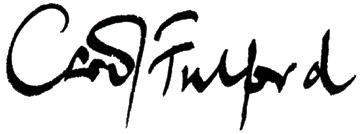
Carol Fulford Editor
* International Council of Marine Industry Association (ICOMIA) Coronavirus Update


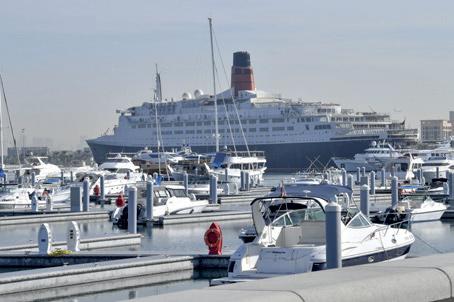


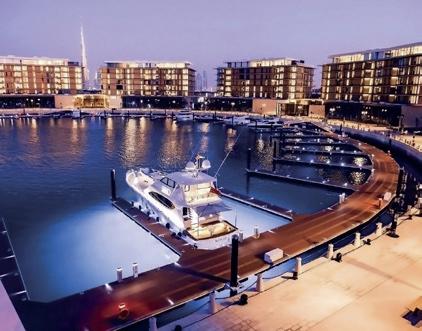





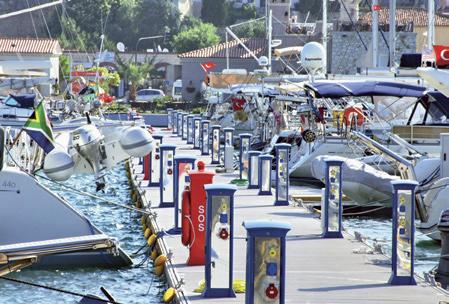
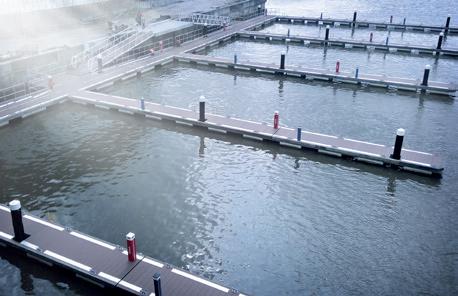



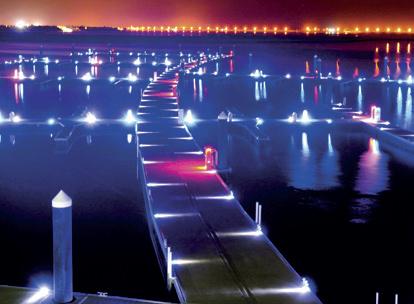

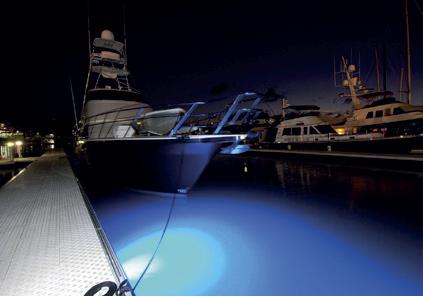
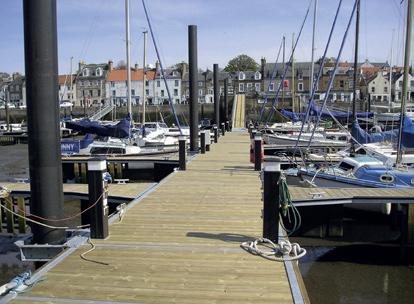

UK: Island Global Yachting (IGY Marinas) has been awarded a contract to operate, market and brand the 185-berth St Katharine Docks Marina (SKD Marina) in London, England. The facility is owned by property funds managed by Blackstone, one of the world’s leading investment firms.
IGY CEO Thomas Mukamal welcomes the boost to the IGY portfolio. “IGY is honoured to have been selected to manage and flag the St Katharine Docks Marina,” he said. “This is a thrilling opportunity for IGY to showcase our industryleading marina operations and global marketing platform for which IGY has become well known.”
SKD is the only marina in central
London and is located 40nm up the River Thames. It is adjacent to the historic Tower of London and close to many of the city’s most famous tourist attractions. The asset was recently renovated by Blackstone and has evolved into a thriving waterside community, featuring a mix of commercial, residential, retail, food and beverage amenities that surround the marina.
USA: Organisers of the International BoatBuilders’ Exhibition and Conference (IBEX) are optimistic the show will open as planned on Tuesday 29th September 2020.
The show organisers report that they are closely monitoring Florida’s ‘Three Phases of Re-Opening Guidelines’ and the state’s progress, as well as working with the Tampa Convention Center and Visit Tampa Bay to develop health and safety protocols to protect exhibitors, sponsors and visitors.
“We are optimistic that by September the state of Florida will be open for large events to take place and that public confidence will have been restored and IBEX will open on schedule,” said IBEX show director Anne Dunbar. “We will continue to monitor announcements by local government officials and the guidelines
of the CDC. During the past 30 IBEX shows we have weathered three new host cities, several hurricane threats, one great recession, and now together we will manage the coronavirus challenges.”
“If, with an abundance of caution and complete focus on the health and safety of our exhibitors, sponsors and visitors, we are required to alter the format of IBEX, we will make an announcement accordingly. It is our hope that IBEX will spark much needed business for the marine industry and be the beginning of a strong recovery season for us all,” she added. www.ibexshow.com
USA: The St Joe Company plans to construct a dry boat storage facility at Port St Joe Marina in Port St Joe, Florida. The marina, which is owned by St Joe and sits alongside St Joseph’s Bay with quick access to the Gulf of Mexico and the Intracoastal Waterway, was damaged by Hurricane Michael in October 2018.
Plans call for the new drystack to be approximately 63,200ft² (5,870m²) and have 252 dry boat slips. The largest will be designed to accommodate boats of up to 45ft (14m) in length.
“As we were planning this project, it was important that we not only rebuild what was there previously, but create a space that the people of Port St Joe and the boating community could be proud of,” explained Patrick Murphy, senior vice president of operations for St Joe. “We are thrilled to be through the planning
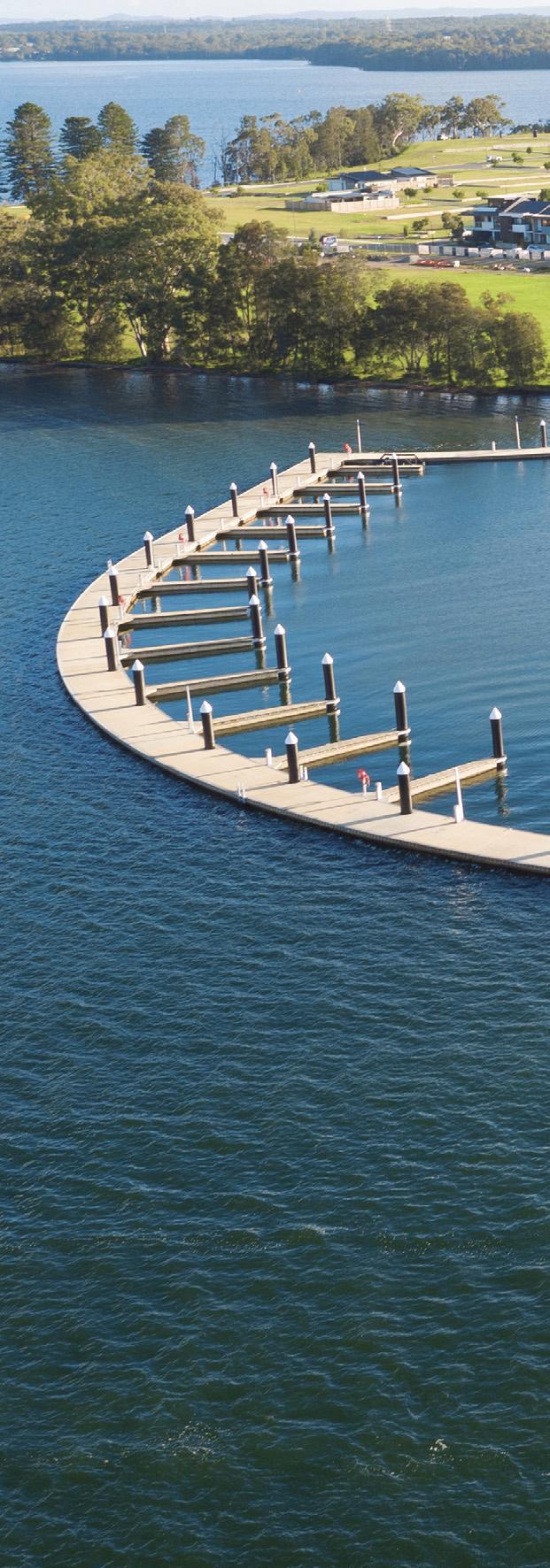
and permitting phase of this project and ready to kick off construction.”
Planning and permitting is underway for additional phases of the marina with plans to include around 48 wet slips, a ship’s store and other amenities. “Boating is central to the lifestyle in Port St Joe for so many,” said Port St Joe mayor, Rex Buzzett. “The marina serves as such an important gathering spot for our residents and visitors. Getting it closer to opening is something that we have been looking forward to.”
We understand the water. We have the products and the knowhow to move away from old fashioned methods like piles, chain, or cables.
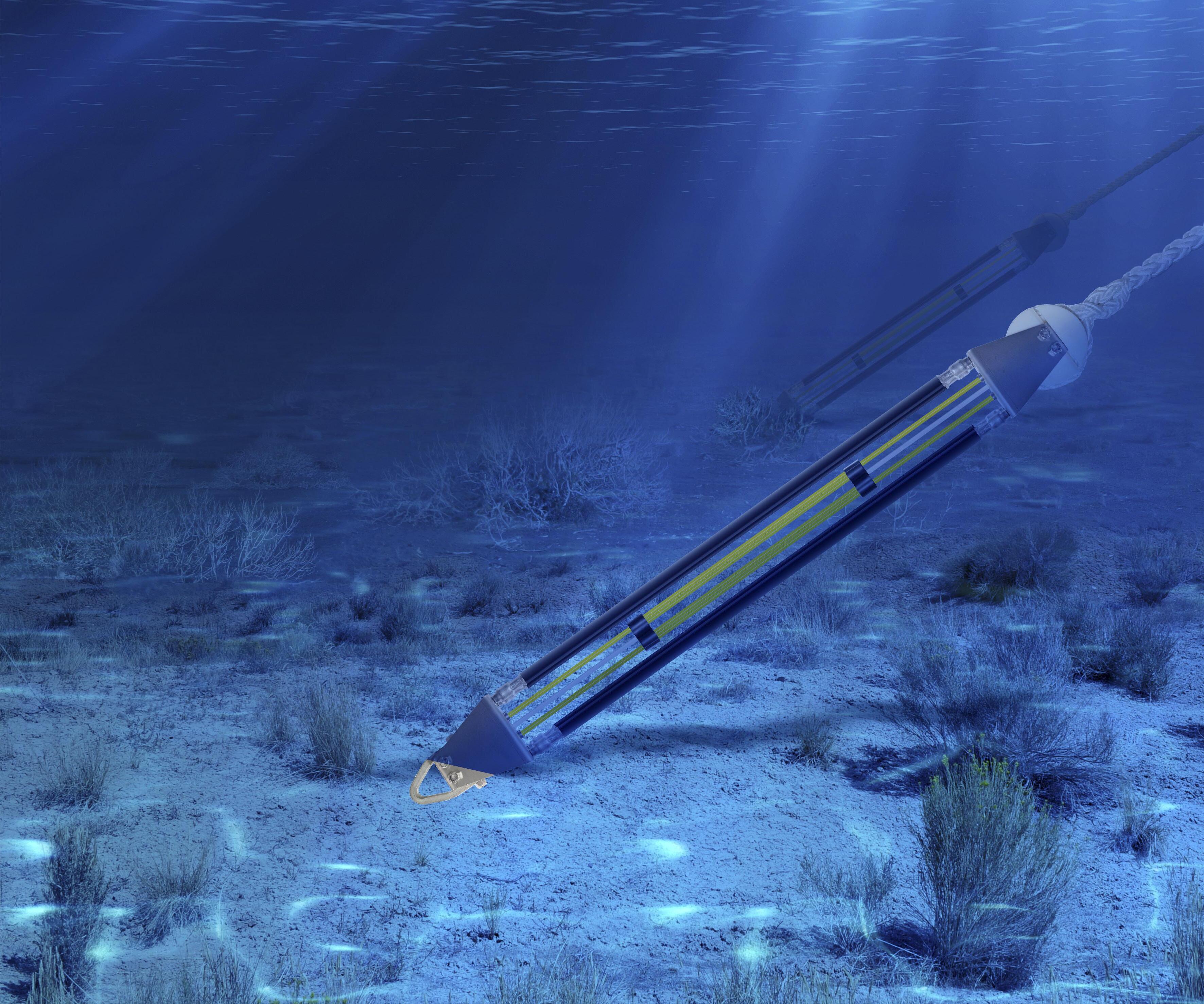
applications like marinas, wave-attenuators, buoys,
Contact our team at accomodate for the depth.
SEAFLEX SWE +46 90 16 06 50
SEAFLEX US +1 (310) 548-9100
back to provide constant stability.
Sustainable materials that ensure
from a company that cares.
UAE: Due to the uncertainties and challenges posed by the COVID-19 pandemic, the International Council of Marine Industries Association (ICOMIA) and P&O Marinas have agreed to postpone the next ICOMIA World Marinas Conference (IWMC) to October 2021.
The 2021 event will have the highest levels of safety standards in place and will adopt the original (2020) main theme of “marinas empowering tourism and economies”. It will focus on planned topics such as regulatory frameworks and barriers, best investment practices, changing the public perception of a marina, new technology, as well as climate change and environmental sustainability.
Considering the worldwide
implications posed by COVID-19 on human life, speakers and attendees will have the opportunity to broaden topics and discussions to include the impact the pandemic has had on the nautical sector.
ICOMIA and P&O are currently working on the possibility of also hosting an online event at the end of this year.
More information will be available in coming weeks.
USA: The Association of Marina Industries (AMI) is inviting suggestions for breakout and workshop topics relevant to the operations and management of marinas and yards for the next AMI Conference & Expo (formerly IMBC).
The event is scheduled for 2nd-4th February 2021 in Daytona Beach, Florida. The deadline for proposals is 1st July 2020.
“The health and safety of our attendees, exhibitors, partners and team are top priority,” says AMI chair, Chris Petty. “With that in mind, we fully
expect the AMI Conference & Expo to occur, despite current conditions related to the COVID-19 crisis. We are taking safety precautions for all AMI events and we continue to position ourselves to pivot as this unpredictable pandemic unfolds.”
www.marinaassociation.org
GLOBAL: PIANC’s Recreational Navigation Commission (Rec-Com) and ICOMIA’s International Marinas Group (IMG) invite owners, operators and designers to submit marina project entries for the 2020 Marina Excellence Design Jack Nichol Award (MEDA).
The award, which is the most prestigious international accolade to recognise excellence in design of marinas and recreational navigation infrastructure, is administered by PIANC RecCom.
Eligible marinas must have been built or rebuilt within the last 15 years

and have been operational for at least two years. Functionality, aesthetics and environmental sustainability all play a part in the evaluation criteria.
The submission deadline is 3rd October 2020.
For further information, e:reccom@ pianc.org or pianc.reccom@gmail.com
USA: Southern Marina Holdings, LLC has purchased three premium Florida marina facilities from Aqua Marine Partners. The addition of Hi-Lift Marina in Aventura, Hidden Harbour in Pompano Beach and Palm Harbour in Cape Haze brings the growing Southern Marinas portfolio to ten properties.
All three marinas have special attributes. Hi Lift has nearby access from the Baker’s Haulover Inlet and features full-service dry storage operations, a new boat showroom, boat club and Yacht brokerage. Hidden Harbour is the newest and most prestigious drystack in Pompano Beach and has fast and easy access to the Atlantic. It will soon have a vibrant, new neighbouring community of apartments, restaurants and retail, currently under development by Aqua Marina Partners CEO Andy Sturner.
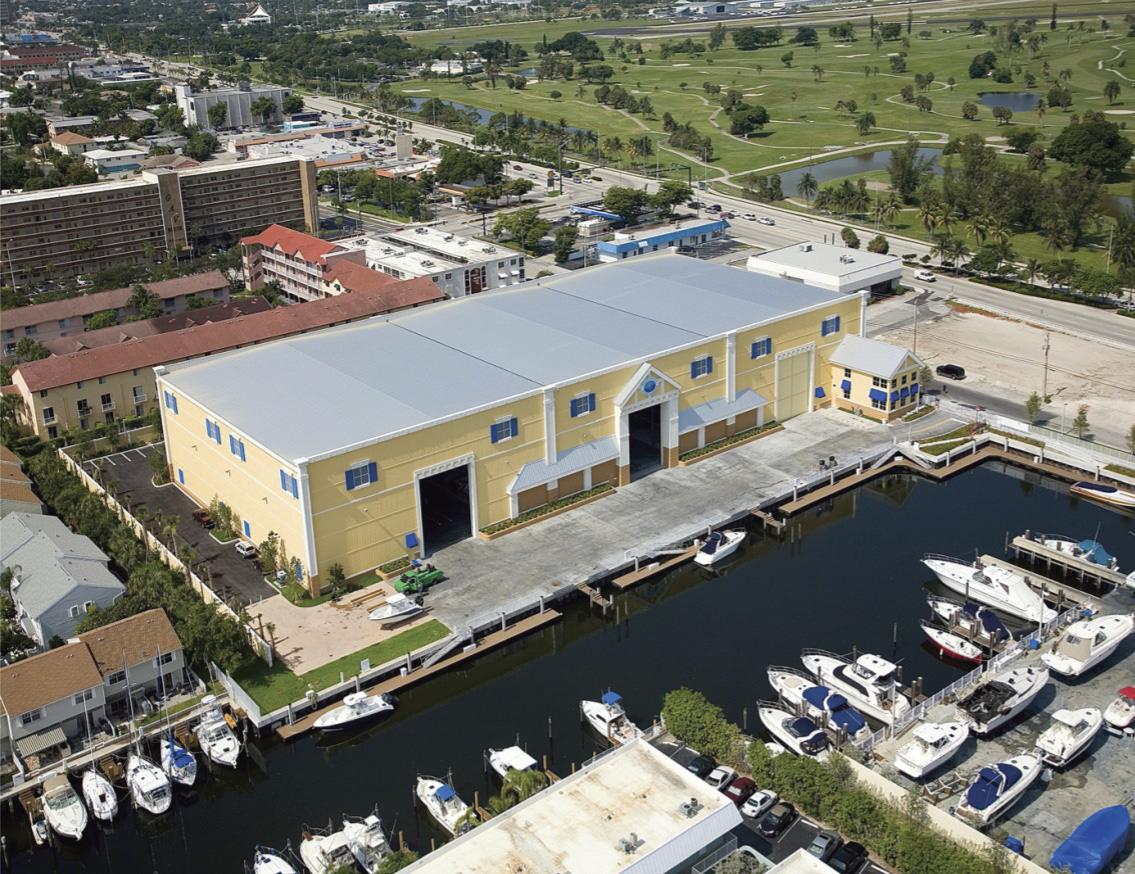
Palm Harbour is a boutique-style resort marina near Boca Grande Pass – home to the world’s best tarpon fishing. With a combination of drystack and wet slips, it can accommodate boats up to 65ft (20m).
Andrew Gendron, principal and chief investment officer with Southern Marinas, said the company was excited to have secured the marinas. “Our overall goal is to continue to expand the Southern Marinas brand through the purchase of key locations. Our team
is always on the lookout for new and exciting opportunities like this one from Aqua Marine.”
While the marinas are currently open and running as normal, Southern’s management team will continue to monitor all government updates on the COVID-19 pandemic. The marinas will be implementing the protocols outlined by these agencies with the primary goal of providing a safe environment for boaters and team members at their locations.
GLOBAL: SF Marina has commenced operations at new manufacturing facilities in Malaysia and Thailand. This is in addition to expanding its production sites in Sweden, the USA and New Zealand.
The addition of the Malaysia and Thailand facilities strengthens SF Marina’s commitment to the Asian region. Located in the Kuala Lumpur and Bangkok regions respectively, they are scaled to meet the current demand for floating concrete structures within the area.
In Sweden, at the company’s Wallhamn manufacturing facility, SF added a sixth precast production bed and built a new concrete plant in 2019. This year, it acquired an adjacent building to accommodate the expanding demand for its products. These steps provide the means to deliver increasingly larger items such
as 10m (33ft) wide x 3m (10ft) high breakwaters and a floating hotel structure measuring 22m (72ft) wide x 63m (207ft) long.
The factory expansion of the North American division, SF Marina USA, added a second precast production line for increased capacity. It also reconfigured its logistics to accommodate the delivery of larger structures via barge. Located in Norfolk, Virginia, it matches the delivery levels of SF Marina’s other primary plant in Dubai, UAE.
In New Zealand, SF is constructing a second production facility to meet growing demand. This expands the
company’s presence in the country by as much as 300%. The location is expected to begin operations this summer.
“SF Marina has expanded its production capacity worldwide to keep pace with global demand,” said Michael Sigvardsson, SF Marina System CEO. “But that’s just half of the equation. We’re also growing our technology and working on exciting new products to help marinas weather the storms for the next 100 years.”
SF Marina pioneered the floating concrete pontoon in the 1920s. It has additional production facilities in Egypt, Greece, Saudi Arabia, Spain and Turkey.
AUSTRALIA: The Marina Industries Association (MIA) is putting a lot of energy into ensuring its next conference and trade exhibition in 2021 will be an important milestone for the marina industry recovering from COVID-19.
MIA president Andrew Chapman said with the dates, location and overall structure now set, the Marinas21 Committee is working hard to ensure the conference and the exhibition agenda aligns with industry needs.
“As we commence the long haul out of COVID-19 we will be providing a slightly different offering,” he noted. “The move to on-line communications is being accelerated and health and hygiene will remain an important issue. The dire tourism downturn is having a huge impact on some of our members and we need to strengthen our focus on tourism and our cooperation and coordination with the mainstream tourism industry.”
The Marinas21 International Conference and Trade Exhibition will be
held 24th-25th May 2021 at the Marriott on the Gold Coast. In 2019 there were 350 participants from 11 countries in attendance. The timing for the event has again been set so as to follow on from the Sanctuary Cove International Boat Show.
MIA Marinas21 Committee chairman, Mike Harvey, said it is important the planning process is aligned with the latest international, national and state forecasts and plans arising from the pandemic. “There are already many more variables in the planning of this event. We are heartened however by Australia and New Zealand’s progress in flattening the curve and the steps being laid out to get the marina industries back to full strength.”
UK: Local and visiting leisure craft to Stornoway Harbour on the Isle of Lewis in the Outer Hebrides will be able to moor up at a new 76-berth marina in 2021.
Inland and Coastal Marina Systems (ICMS) is installing its standard marina walkway and finger pontoons as part of Stornoway Port Authority’s 2017 masterplan. The GRP mini-mesh decked pontoons will provide muchneeded additional marina berths, all with excellent anti-slip properties.
“Being in the Hebrides has its
logistical issues when it comes to installation but we always find a solution,” explains ICMS project manager Brian Curley. “Assembling the pontoons offsite really helps time-wise and reduces the amount of specialist machinery needed in situ.”

“This exciting project will also incorporate a new slipway and boat hoist, enabling the marina to offer boatyard services to visitors and port users,” he continues. “We are delighted to be involved in such a prominent project in Scotland, which will be enjoyed by locals, sailors from abroad and the wider community long into the future.”
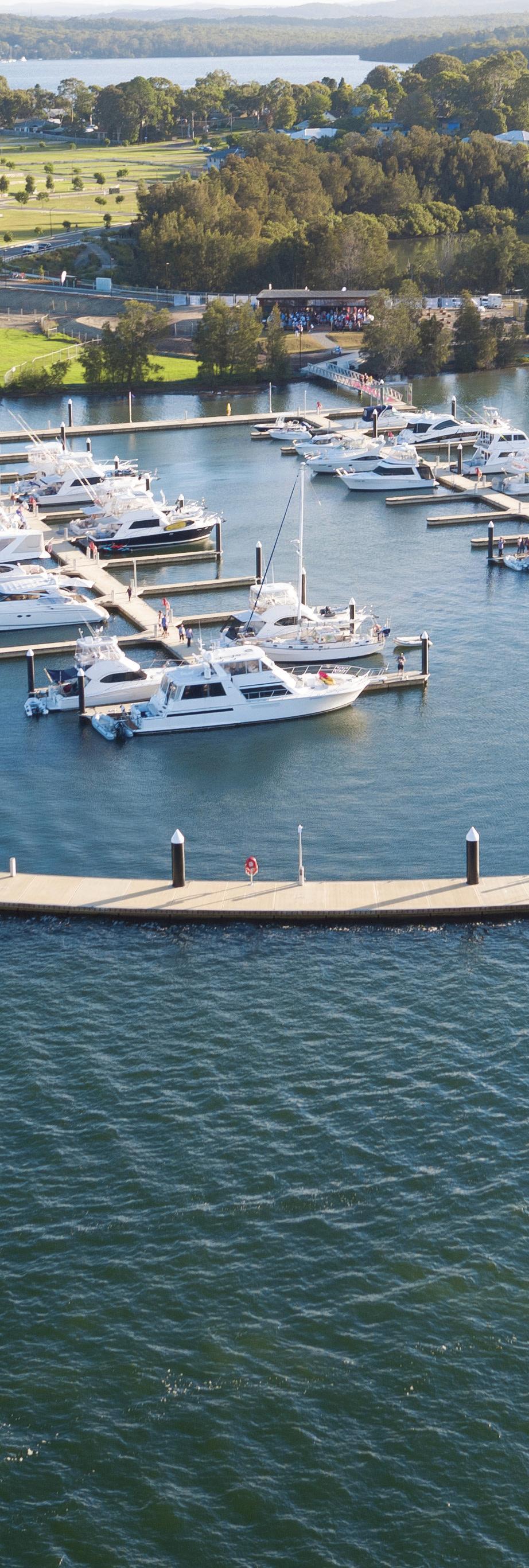
La Valletta Loano Hammamet Stora Palau
Fiskardo Aqaba Port Gogek Khiran
Castellammare di Stabia Lefkas Tripoli
Venezia Spalato Maratona Salerno Piskera La
Maddalena Gouvia Muggia Maratea Gedda
Capo d’Orlando Tremezzo Doha Tivat Trani
Lixouri Procida Al Fintas Carrara Brissago
Genova Rodi Dammam Sistiana Locarno
Cagliari Atene Lacco Ameno Palermo
Manfredonia Novi Vinodolski Montecarlo
Viareggio Bari Alassio Farasan
Budva Ravenna Portorose Bari
Villasimius Taranto Biograd Cala di Volpe Bari
Jesolo Savona Lisbona Portovenere Novigrad
Rab Bisceglie Aiaccio La Spezia Portoferraio
Lustiça Trieste Montecarlo Santa Manza Riva del
Garda Castiglioncello Kastela Al Faw Portofino
S. Margherita Ligure Volme Methoni Livorno
Haquel Napoli Marsaxlokk Jesolo Aci Trezza
Taranto Mgarr S. Teresa di Gallura Grado
Rovigno Chioggia Vibo Valenza Mitilene
Imperia Como Agios Kosmas Monfalcone

ITALY: As Italy begins to contemplate life after COVID19, Walcon Marine’s latest project in the country will be a magnet for visitors.
The new marina is located in a stunning location at Castelletto Ticino to the south of Lake Maggiore, one of the largest and most beautiful of the famous Italian lakes in the north of the country. It has been built as part of the development of a contemporary, stylish new lakeside headquarters complex designed by Piuarch for Techbau, a major Italian construction and civil engineering company, and sits directly in front of the building.
Walcon’s Italian partner Walcon Marine Italia (operating as the Sistema Walcon brand) was responsible for the supply of the marina, which has been engineered
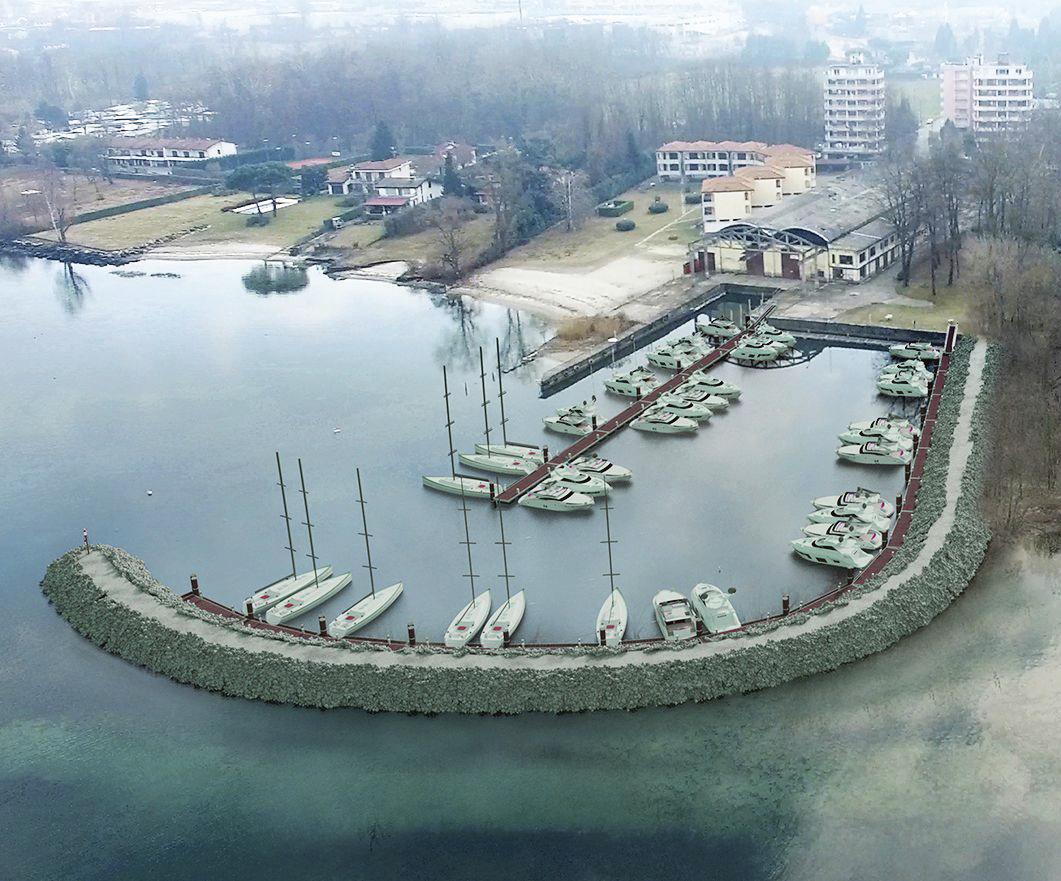
by Walcon to make full use of the lines of an existing curving breakwater that protects the location from swell and wash. The mooring facilities comprise a 190m (620ft) walkway that runs along the inside of the breakwater and provides stern-to mooring for around 40 boats up to 12m (39ft) in length, and a second straight 68m (223ft) walkway for stern-to mooring on both sides for a similar number of boats. This pier projects out into the harbour.
BALI: Benoa Marina, the first ‘international standard’ marina in Indonesia, opened in January. The facility was built by Pelindo Property Investments (PPI Marina), a subsidiary of government harbour company Pelindo.
The marina has been built using Antares aluminium pontoons (a Walcon Marine Italia variant of Walcon’s System 2000 range), polyethylene floats and Novowood WPC decking in an attractive copper-brown colour. Access to each walkway is via two 10m x 2m (33ft x 7ft) access bridges with aluminium handrails.
The marina is managed by CM Nautica and is open to the general public.
“The new marina has space for 3 x 90m [10 x 295ft] vessels in alongside positions and non-potable water can be supplied,” explained Thomas Taatjes of Asia Pacific Superyachts in Bali. “Shore power is via genset rental and we (APS) have a genset we can use for our clients and also water treatment facilities to make the dock water potable,” he added.

“The floating pontoons are top quality and easily accessed by ramps, making provisioning and spare part deliveries simple and convenient. The lines are secured using the pilings which are spaced at 10m [33ft] and have a diameter of 90cm [35in], so straps and shackles are required. Transport can be arranged from a variety of sources,” he continued.
Connected to the airport by a flyover, it is a fast pick up and drop off at the boat for guests and the perfect starting point for cruising once Indonesia is open to arrivals. On down-time, all the hotspots of Bali are within reach and guests and crew will enjoy everything on offer inside and outside the marina.
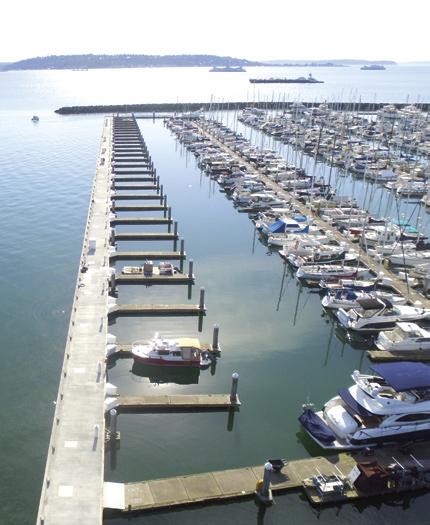
USA: Elliott Bay Marina in Seattle, Washington – the largest private marina on the west coast of the USA – has replaced its 1,000ft (305m) long breakwater. Canadian company International Marine Floatation Systems (IMFS) designed and built the new structure.
Ordered to replace a concrete POD type system with a timber wave fence underwater structure, the new floating concrete breakwater will require no maintenance below the waterline. It incorporates existing 38ft (12m) finger slips on one side and accommodates superyachts of up to 300ft (90m) on the outer edge.
Built by IMFS in the company’s Delta yard in British Columbia, the attenuator has seven structural sections. Each has been designed to maximise depth but also follow the ground contour condition of the site as it slopes from shoreline to deeper water. To achieve this, design depths vary from 6-10ft (2-3m). The sections are connected with IMFS rubber block connection pockets which allow for the rubber blocks and 2.5in (6.3cm) swage cable to be replaced without interrupting electrical and water cables.
IMFS worked with a team from Amo Construction, who removed the old system and installed the new breakwater on 17 existing mooring piles. Concrete fingers were removed and reconnected. There was little room for error as all components had to fit back precisely.
USA: Significant enhancements have been completed by Westrec Marinas at Sunrise Harbor Marina in Fort Lauderdale, Florida. The marina is located on the Intracoastal Waterway in the heart of the city’s bustling yachting community.
Work undertaken comprised dredging the marina basin to a depth of 11ft (3.3m) to give access to larger boats with deeper drafts throughout the entire water space; substantially remodelling the fitness centre and Casbah Spa; upgrading the marina office; installing a new security system, which operates all doors and elevators, and controls garage access; and enhancing Wi-Fi so that it reaches the entire marina as a streamable high-speed service.
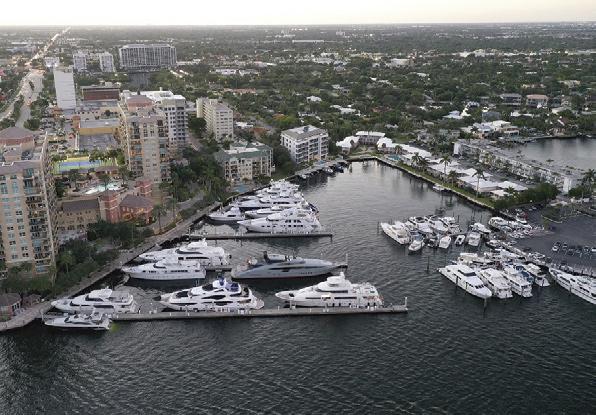
“Sunrise Harbor enjoys a sterling reputation as a prestigious yachting facility,” says marina manager Brad St Coeur CMM. “Of course, earning and maintaining a good reputation require constant analysis and action to exceed expectations. The Sunrise Harbor team is pleased to announce these considerable
improvements to the most critical aspects of operating a premier marina.” Care was also taken with a green approach. “As a Clean Marina designated by the State of Florida, we ensure that our work while upgrading Sunrise Harbor has met the obligations we have toward ensuring that environmental responsibility is integral to our marina operation,” he adds.
USA: A new D Dock at Cottonwood Creek Marina on Lake Louisville just north of Dallas Fort Worth has been completed by Meeco Sullivan.
It is the seventh expansion in 18 years that the company has handled at this marina for the Miller family, which also owns and operates two other facilities in Texas: Anchor Bay Marina and Collin Park Marina.
Cottonwood Creek’s relationship with Meeco Sullivan began in 2002 when it designed, built and installed a 152slip galvanised steel dock system. It has subsequently installed six further docks in various sizes with super span roofing, encapsulated foam and aggregate decking, a service/fuel dock with ship’s store and a 600ft (183m) wave attenuator. The newest expansion on D Dock included adding twelve 32ft (10m) covered slips.


USA: Safe Harbor Marinas boosted its portfolio with the purchase of three additional marinas via Colliers International in the first quarter of the year. It now has nearly 100 facilities.
First to join the network was Sunset Bay Marina (above), a full-service marina near the city of Boston, Massachusetts. The 2 acre (0.8ha) family-owned property on Boston’s desirable South Shore includes 161 wet slips, a 250-seat restaurant and event facility, on-site service and repair and winter storage.
“The Folsoms purchased the marina a little over ten years ago and rebuilt the property to bring it up to modern standards,” said Colliers International managing director Andrew Cantor.
“They created a wonderful asset with significant cash flow that was very desirable to investors and marina companies as potential purchasers. At the same time, Safe Harbor is in growth mode and this acquisition helps them expand their portfolio in the region.”
The second purchase covered two marinas: Mears Point and Great Oak Landing on Chesapeake Bay near Annapolis, Maryland. Mears Point Marina has 540 wet slips and two restaurants and sits within a 42-acre (17ha) site, which includes permission to build 211 multifamily units and a
commercial retail/office building.
“Mears Point Marina represents a truly unique opportunity,” Cantor emphasised. “It’s very rare to find a property with $1 million of in-place net operating income annually that has approvals and utilities in place to develop what would be the area’s first resort-style marina community.”
Great Oak Landing (below) has nearly 74 acres (30ha), 360 wet slips, a 28-room lodge and two restaurants.
The Colliers team marketed the two properties separately. Interest was expressed by a variety of prospective buyers and offers were received from 11 groups.
Safe Harbor now owns seven marinas on Chesapeake Bay.

MIDDLE EAST & EUROPE: Italian company Ingemar has signed two new exclusive licence agreements to further develop business opportunities in the Middle East.
Khimji Ramdas LLC (KR) will now manufacture and market Ingemar products in Oman. Ingemar will supply special components and technical assistance for production. When the factory site is prepared and a local team is finalised, the first reinforced concrete pontoons, measuring 35 x 6m (115 x 20ft) will be manufactured for a fishing fleet facility in the port of Duqum.
The agreement with KR LLC closely follows a contract signed with Overseas AST of Dubai, one of the most important industrial groups in the Emirates. Reinforced concrete modules for the new Marina Bay in Dubai Harbour are already being cast. Megayachts up to 60m (197ft) long will be moored directly to the maxi floating pontoons and even bigger yachts up to 120m (390ft) will use special fingers and anchor with buoys and a mooring blocks system.
Although there is significant focus for the company on increasing market presence in the Middle East, Ingemar continues, as usual, to complete projects in the Mediterranean and Caribbean.
Recent installations in Italy include Marina di Carrara, Porto Cala del Forte and Cala Balbiano on the island of Sardinia; floating pontoon systems have been supplied for Skala Sikia, Vougliagmeni and Marina Zea in Greece; and second and third phases have been completed for Lustica Bay Marina in Montenegro.
Despite uncertainties in various markets, the Ingemar Group enjoyed a turnover of over €10 million in 2019. This represented a slight growth on 2018’s figures. An important share of investment was devoted to R&D activities, to the study and design of new floating products and to the search for materials and innovative technical solutions for their assembly, storage and handling.
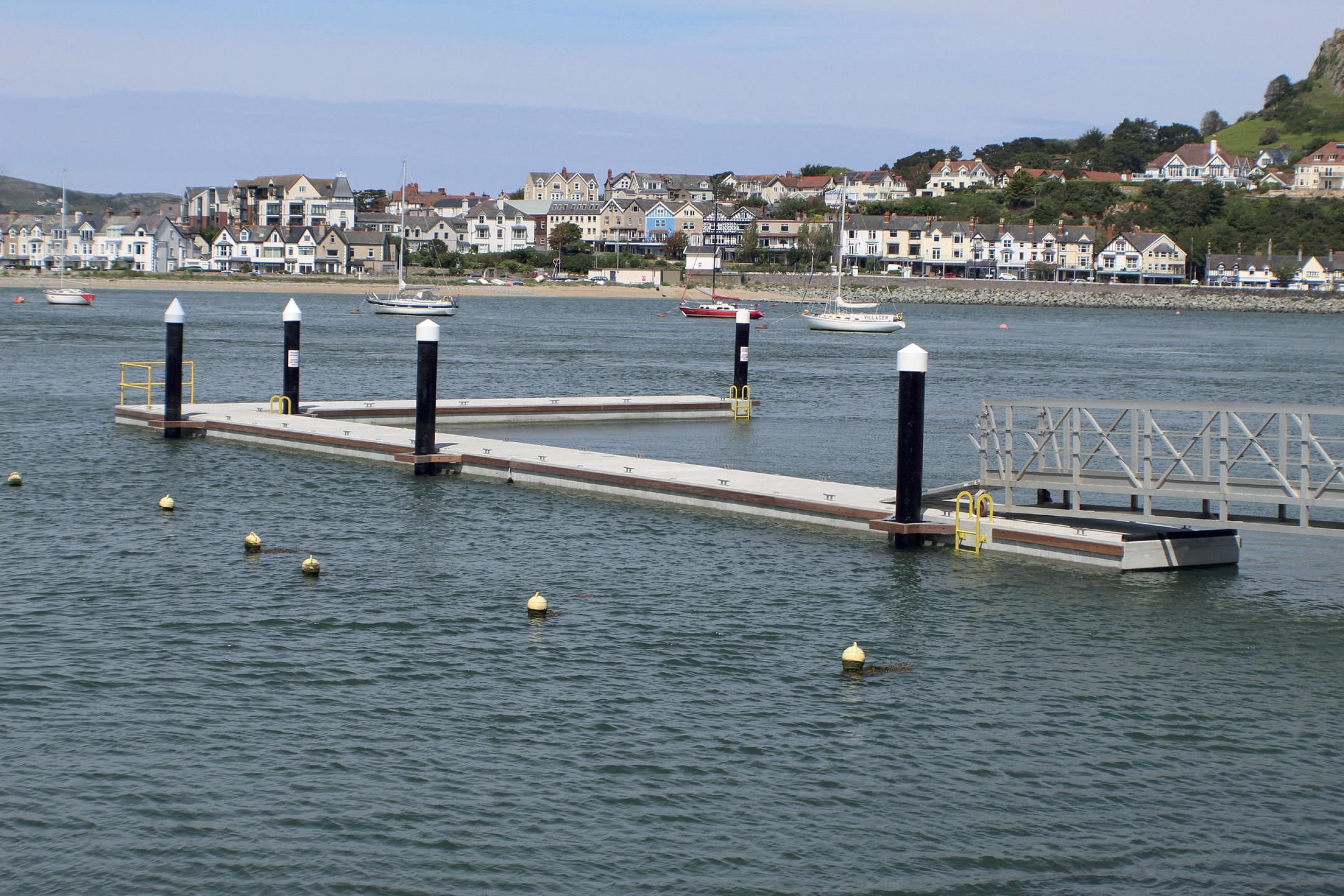
SETTING THE STANDARDS OF EXCELLENCE
Wherever the site, whatever the size we have the bespoke marina berthing and protection solution. The photograph shows a recent project at Conwy Marina, Wales. Let us design and build your next project.
Banagher, Ireland (Head Office): +353 579153963
Lossiemouth, Scotland (Sales Office): +44 1343 813233
Southampton, England (Sales Office): +44 239 4002797
Email: sales@inlandandcoastal.com Website: www.inlandandcoastal.com
















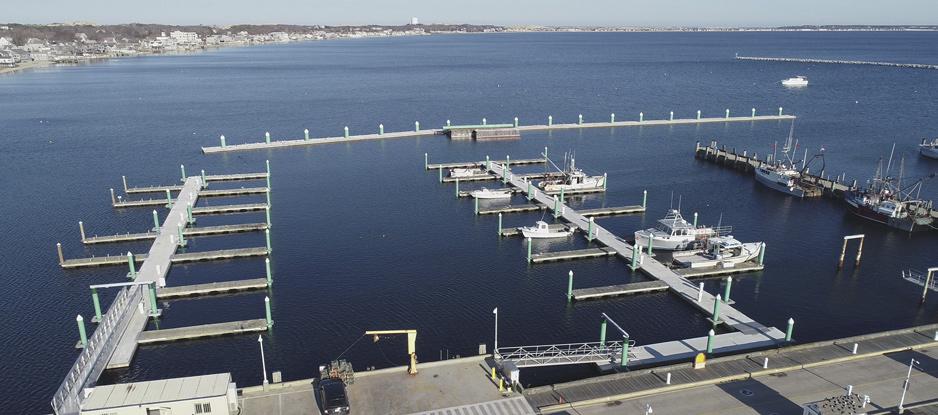
USA: The Marina at MacMillan Pier in Provincetown, Massachusetts has been revamped with a new system supplied by SF Marina USA. It had been unprotected from the elements for years and was beyond repair.
The project called for nine SF400 Series heavily reinforced floating concrete breakwaters to protect the inner marina. These are specially designed to absorb and distribute stress during storms. Installed by lead contractor ACK Marine & General Contracting, the 590ft (180m) system is held in place with 18 steel piles.
Nine SF1030 Series 3m (10ft) wide concrete pontoons of various sizes were used to rebuild the 249ft (76m) north and 351ft (107m) south docks. Provincetown reused its timber fingers
that attach to the docks’ embedded stainless steel T-tracks. Conduits and pipes for electricity and water are internal and make for a clean appearance and low maintenance. The completed structure supports vessels up to 46ft (14m) at around 50 slips.
Located on the tip of Cape Cod, the natural deepwater harbour of Provincetown is where the Mayflower first set anchor in 1620. MacMillan Pier supports a mix of recreational and commercial traffic, including a ferry terminal and whale-watching operations.
UK: Walcon Marine has completed a comprehensive reconfiguration of the mooring facilities at the popular and picturesque town quay in Lymington, Hampshire.
The quay serves both leisure boaters and fishermen, and Lymington Harbour Commissioners had concluded that an upgrade was required to meet the demand for more visitor walk-ashore berths.
The project took place between November 2019 and February 2020 and involved a series of smaller jobs as various existing moorings were moved and replaced and new ones added. Topping the list was the task to more than double the number of walk-ashore
berths from 19 to 46 while at the same time continuing to offer a choice between visitor walk-ashore berths, with power and water, and lower cost river moorings.
All pontoon infrastructure was replaced with Walcon System 21 pontoons to match the new walkashore facilities. The pontoons for the fishing fleet have been fitted out to a commercial standard with rubber D-fenders, GRP mesh decking and internal pile guides.
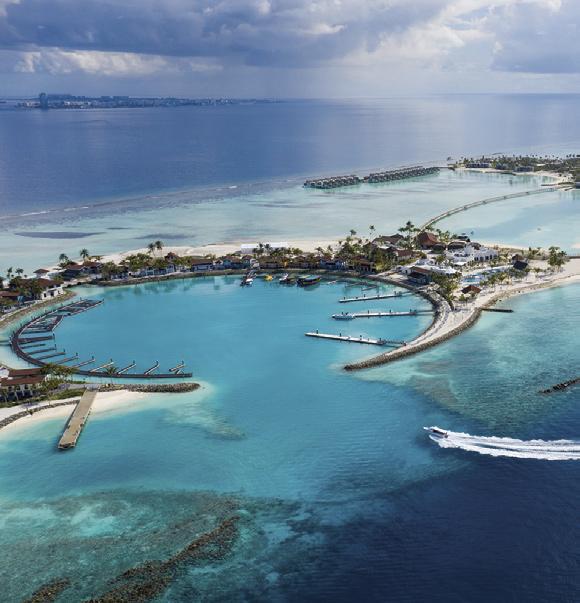
MALDIVES: The Crossroads Yacht Marina, located a 15 minute fast boat ride from capital city Malé, has now opened. The facility, outlined in Marina World November/December 2018, forms part of an integrated leisure and lifestyle hub and is the first of its kind in the country.
Catering for 30 vessels of 10 to 60m (33 to 197ft), it has fullservice back-up, crew facilities and concierge offerings. Onsite superyacht agency Asia Pacific Superyachts Maldives (APS) provides all paperwork, provisioning, services and itineraries needed for superyachts to enjoy their stay and maximise cruising potential.
As of the end of June, lockdown restrictions are expected to ease and commercial and private flights will be allowed. A further boost to tourism potential was confirmed in April when fees to enter the Maldives were substantially reduced, making it a viable stopover for all yachts crossing the Indian Ocean.
From paper importers to internationally renowned marine equipment suppliers, the Lindley group of companies (Grupo Lindley) has climbed high. The company celebrated its 90th anniversary in April.
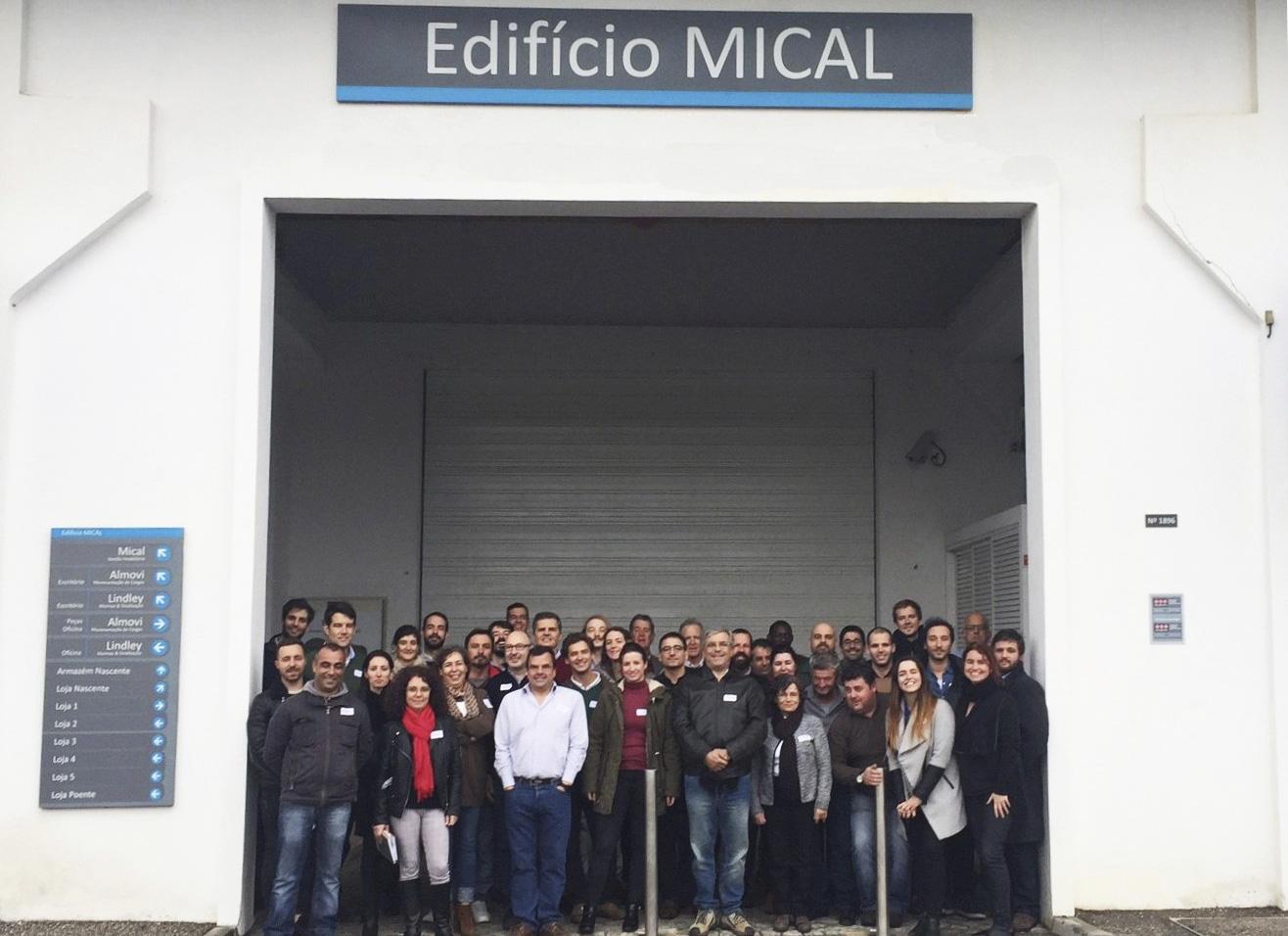
The company’s origins date back to 1930, when Rudolf Ahlers and Antonio Lindley – with £400 in their pockets –established Ahlers Lindley in Lisbon, Portugal as an English paper importer and distributor. Despite Ahlers’ death in 1933, the company grew successfully over the next two decades and acquired Tuella Tin Mines in the north of Portugal.
The company developed several other mining interests in the pre-war years in support of the allied war effort, by supplying raw materials from neutral Portugal, particularly tin and tungsten.
After the Second World War, trading activity again diversified to include machinery, metals and chemical raw materials. In 1956, Ahlers Lindley began supplying harbour equipment; it supplied two steam cranes to the Portuguese naval base, Arsenal do Alfeite – one of which still exists today.
During the 1960s, the mines were closed or sold off and the business returned to concentrating on importing high quality paper, along with machinery and metals, chemical raw materials and plastics.
In 1966, the second generation
Lindleys took over management from Lindley’s widow and a period of rapid expansion followed, resulting in the building and purchase of premises in Cacém and Porto. In 1981, the group purchased its current headquarters, Edifício Mical, in Cascais. The site, established in 1951, had previously been a large mining and crushing plant belonging to Mical, Mecanica Industrial de Cascais. The addition of Mical to
the group pushed the total number of employees to more than 200.
In response to the recession of the early 1980s, the group reorganised and divided into several companies that allowed them to specialise in their respective markets. By the 1990s the group comprised: Almovi, a supplier of mechanical handling equipment and hydraulic platforms; Almec, supplying industrial compressed air and sandblasting equipment; Alchema, supplying industrial chemicals and plastics; Florestal, focused on forestry and wood processing equipment; Alma, providing platform and scaffolding hire; and Lindley, supplying floating equipment for marinas and harbours.
This period, as the third Lindley generation joined the business, also saw growth. Firstly in the mechanical handling area through Almovi, which distributed major brands such as Grove and Demag cranes, Simon platforms and Marine Travelift. Secondly, through Lindley, with its own brands in marinas and marine aids to navigation.
From 2000 onwards, the business began to consolidate, largely in the marine business area. Almovi strengthened its position as a supplier of harbour and industrial handling equipment, while expanding its
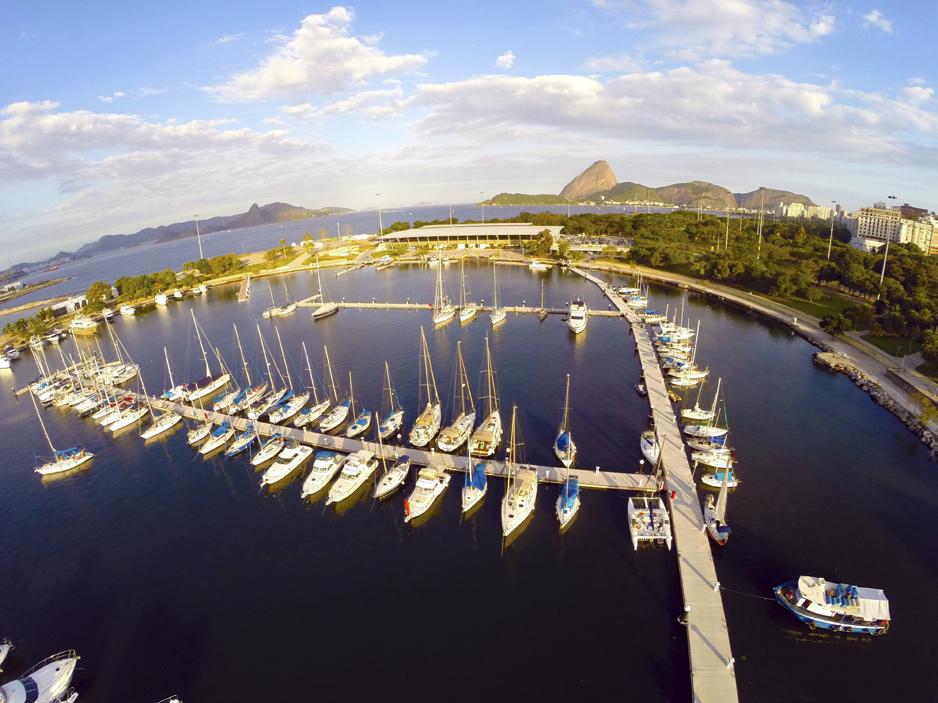

maintenance and service facilities. Lindley developed its own designs and products for marinas, while Mical manufactured for both companies.
In 2004, the company took its first steps into foreign trade by establishing Almarin, in Barcelona, to distribute marine navigation aids in Spain. Seven years later, as the financial crisis hit southern Europe, Almarin and Lindley pivoted to start operations in South America, where Almarin won a contract to supply and install navigation buoys
for the Colombian Navy.
Meanwhile Lindley, after supplying its first marina contracts in Brazil and taking on further significant contracts, established a subsidiary in Rio de Janeiro in 2015: Lindley BR. This led to a major contract to reorganise, supply and install Marina da Gloria in Rio for the Olympic Games in 2016. At the same time, the group invested in Salt Technologies, a start-up specialised in marine structure calculations and high-resolution digital content. Salt
independent and bespoke services to clients worldwide
Lindley specialises in the installation of gangways and pier installations for mooring various types of vessel. This facility was built in Tavira on the Algarve coast, Portugal.
Technologies subsequently developed ‘Nephos’, an advanced online platform for calculating jack-up offshore structures.
Today, the Lindley group owners are supported by a team of over 50 professionals, among them industryleading experts.
The Marina & Yard Pavilion is a specialised pavilion at the METSTRADE Show; the world’s largest marine equipment trade show. The pavilion is the first port of call for marina professionals from around the world. With around 70 exhibitors, it’s the world’s largest trade exhibition for the marina & yard industry.
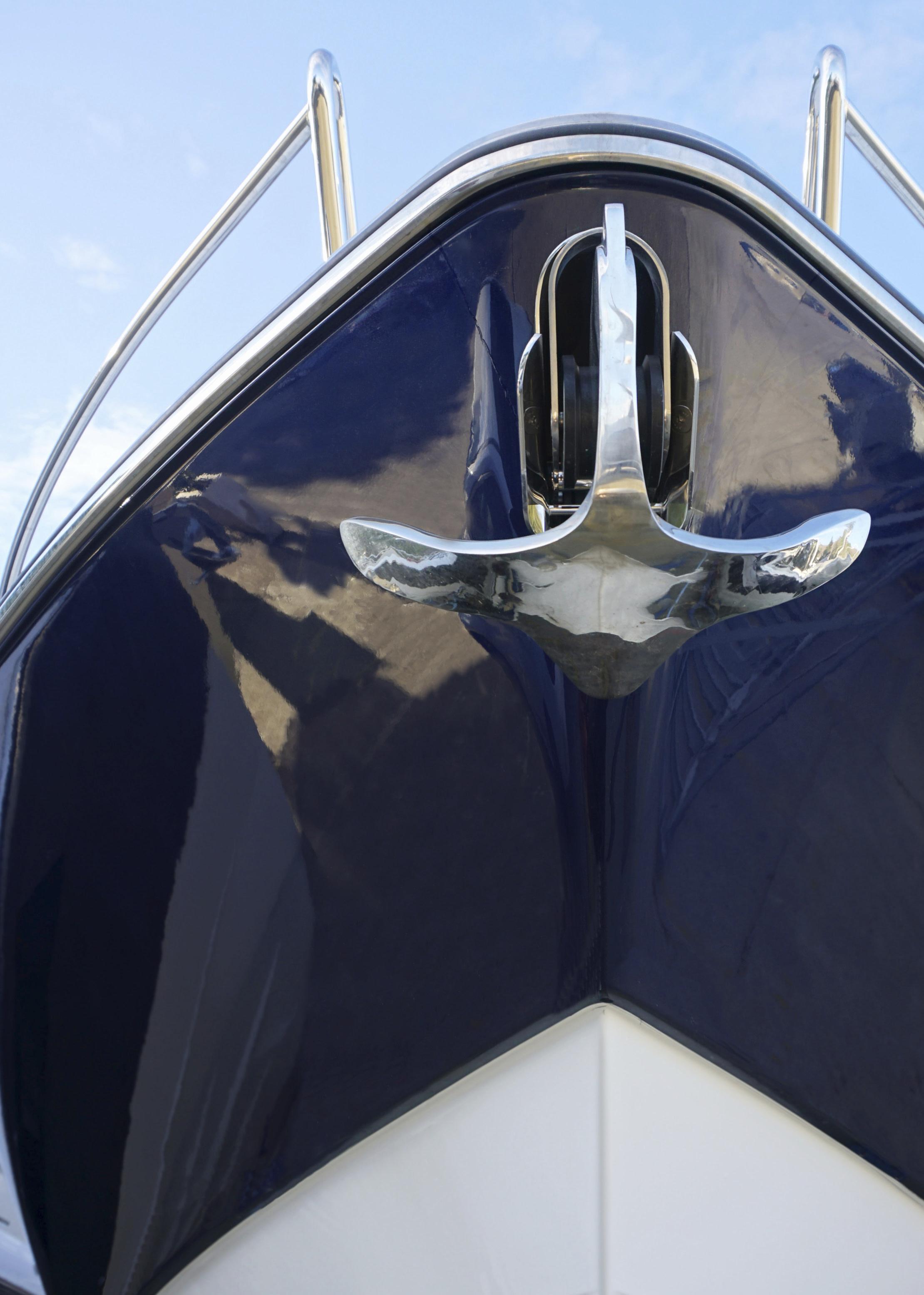
17 - 18 - 19
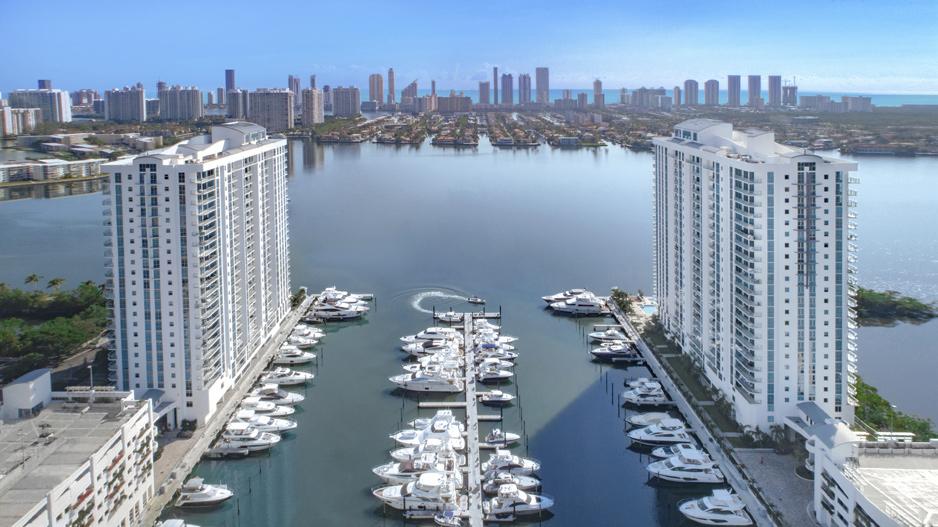
Managing marinas as the coronavirus threat increased called for new initiatives and special measures. Although core action in terms of hygiene and social distancing was universal, marina groups devised their own specific action plans.
US Marina Group: Jim Bronstien
Lockdown: Our marinas in Florida were ‘shut down’ for a period of time but, in reality, they remained open as boats were still accessible by owners, crew and vendors. Fuel operations were also restricted but only for a few weeks. Our marina in Panama was technically shut down as well. Boat movements on the water were restricted and are just opening back up [14th May].
Panama had a stronger stay at home order that limited men to go out for essentials like food on Monday, Wednesday and Friday and women on Tuesday, Thursday and Saturday and no one out on Sunday. We reduced our staff to 50% pay and work.
Opening: Boating activities have increased as one of the few opportunities for leisure activities. Our boat club business grew in activity levels the day boating was again allowed. There was lots of pent up demand to boat and get out of the house. Boating also got a lot of unintended press – mostly good, some not as good, but it gave an increased
Croatia has experienced a lower impact from COVID-19 than many other European countries. Customers are using their boats at D-Marin Borik with sensible measures in place.
awareness of how you can socially distance yourself and be safe.
D-Marin network:
Dean Smith
Lockdown: The restrictions imposed by the different governments affecting our marinas were very similar and social distancing and hygiene standards were imposed in each facility. The marinas remained open for enquiries and administration but were closed to customers visiting and using their boats.
Owners were still able to access their boats at Marina Palms in Aventura, Florida, despite the general coronavirus ‘shut down’.
Our management approach was common across the countries in that the health and safety of the staff and customers was our highest priority. The teams worked split shifts and all of the safe systems of work were reviewed. For those clients who were far away from their vessels, we made sure that they could request service providers who could look after their boat in their absence.
Opening: As soon as the lockdown rules were eased boat owners immediately started to arrive to spend some time on their boats, undertaking maintenance or simply sailing. Everyone is aware how important it is to be responsible and cautious in order to stay safe. New social distancing and hygiene plans were put in place and the customers were happy to follow them given that it allowed them to get back on the water.
F3 Marina: Dani Mill
Lockdown: The marina we manage in Panama City, Panama has been closed since the government put severe restrictions on their citizens [as at 26th May]. The marinas we manage in Florida were open and the effects on our customers and staff were more immediate. We worked as an entire company to ensure our staff were safe and comfortable providing our worldclass service to our customers.
Our Great Lakes area marinas did not allow customers in the marina office

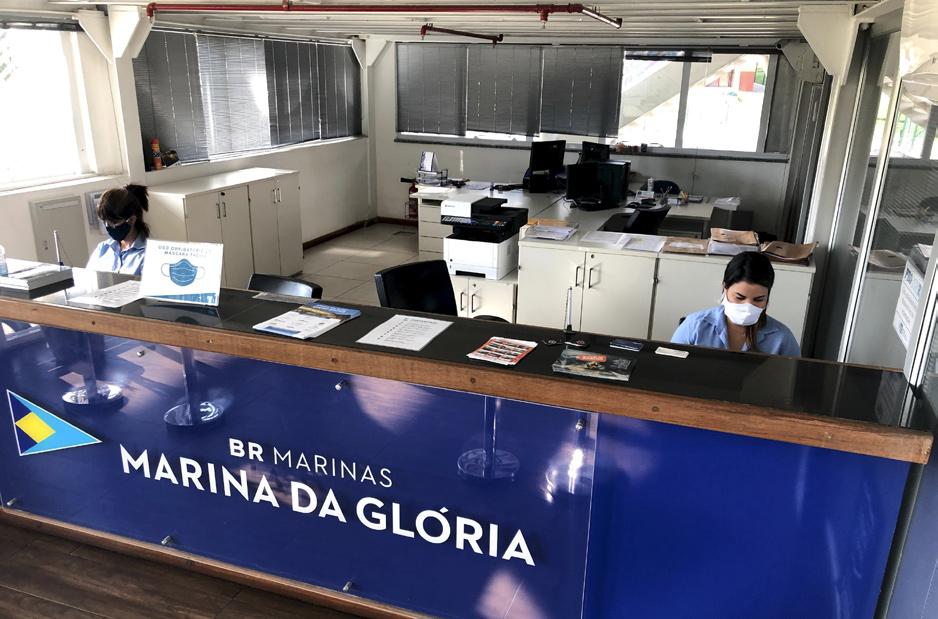
during the beginning of the pandemic and did transactions via phone, email or window service. These marinas were able to open on time, with restrictions, due to being located in areas where marinas were considered an essential business.
Opening: With the exception of our boater population that is at a higher risk of contracting COVID-19, many boaters used their boats more as they had time off of work and chose their boat as their ‘shelter in place’ location. The predominant customer mood was accepting and appreciative of the steps our team took to allow them to safely use their boat and facility.
BR Marinas:
Gabriela Lobato Marins
Lockdown: We have marinas in five different cities in Brazil and local governments acted differently. All, however, prohibited any kind of tourism so charter companies have been unable to work since 16th March. Our administrative staff have been working from home since this date and all employees over the age of 60 were also sent home.
We were open in Rio, Buzios and Agra dos Reis until 25th May but the mayor of Agra dos Reis declared a 15day lockdown until 8th June. This affects the drystack; clients with wet slips can still use their boats.
We started lots of WhatsApp, Instagram, Facebook and email campaigns and also offered free
Restrictions in place in Panama reduced operations at US Marina Group’s Buenaventura Marina.
education (ten lessons from a boating licence course), tips on what to watch while at home and a fundraiser called Good Wind where we raised 112,00 reals enabling us to buy 32 tons of food to help those in need in surrounding communities.
Opening: Our clients are still using their boats but use masks for themselves and their crew and don’t bring guests aboard etc. We’ve seen a decrease of up to 55% in boat use at our marinas and do not know when or if we will have a 2020 Rio Boat Show.
C&N Marinas:
Management team
Lockdown: As soon as the first case of COVID-19 was reported on the island of Malta on 7th March, Grand Harbour Marina suspended all social events and switched staff onto a shift work base

pattern to comply with health authority requirements.
Likewise, within a few days following the outbreak of the pandemic in Turkey, all the commercial areas in Cesme Marine were closed to adhere to government guidelines. We quickly initiated a skeleton workforce within the marina to ensure the safety and security of our berth holders’ boats. All our employees who could work from home started to work from home, some continue to do so [as at 21st May].
Grenada, Carriacou and Petite Martinique did an amazing job in containing the spread of the disease. From the start, Port Louis Marina fully supported the health protocol and government regulations to ensure the safety of employees, customers and community. Port Louis Marina was a key partner in successfully implementing the yacht entry protocol.
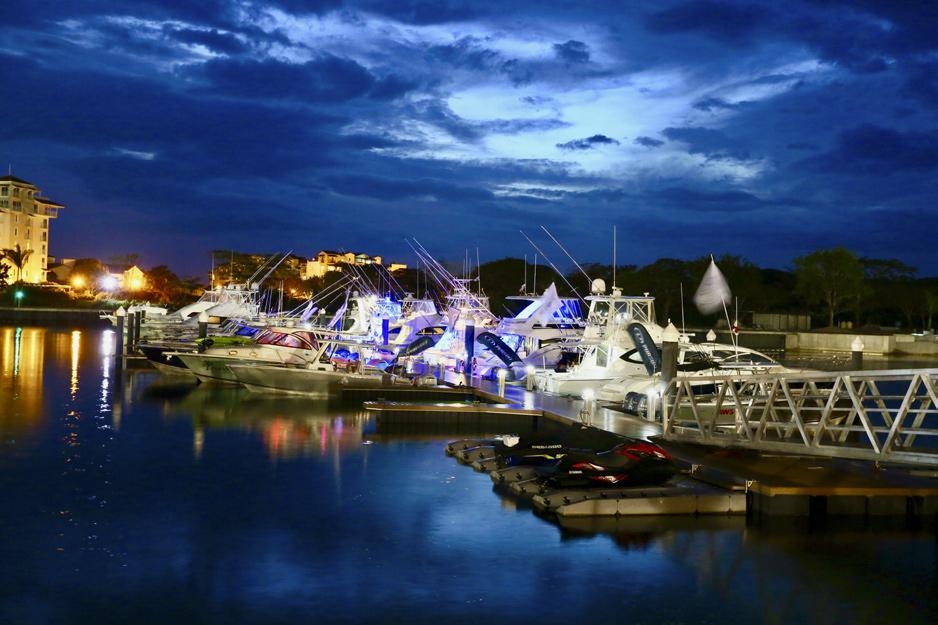
F3 Marina fully expects its Florida facilities, such as Halifax Harbor Marina in Daytona Beach, to enjoy a good summer season.
Opening: Grand Harbour Marina managed to stay open 24/7 throughout, with berthing masters available around the clock carrying out regular dock walks. The marina also took the initiative to create a virtual crew programme specifically tailored to the crew not able to leave their vessels or with limited movement around the marina. Virtual yoga and personal training classes are still being provided as well as chat forums to allow crew to socialise virtually and stay active and healthy.
As at 21st May travel and cruise restrictions have not been removed in large cities such as Istanbul and Izmir where quarantine is valid. There has been an increasing demand from boat owners to spend curfews on board, but this is not yet possible as quarantine practice has not been lifted in large cities. We have customers who spend time on their boats depending on the marina. The mood is currently cautious considering the prohibitions. However, the demand will increase when the quarantine ban is lifted.
Port Louis Marina is now open and the safety of Grenada and its people remains our top priority. We continue to ensure best practice and measures are continuously assessed. We are actively taking bookings for the hurricane season.
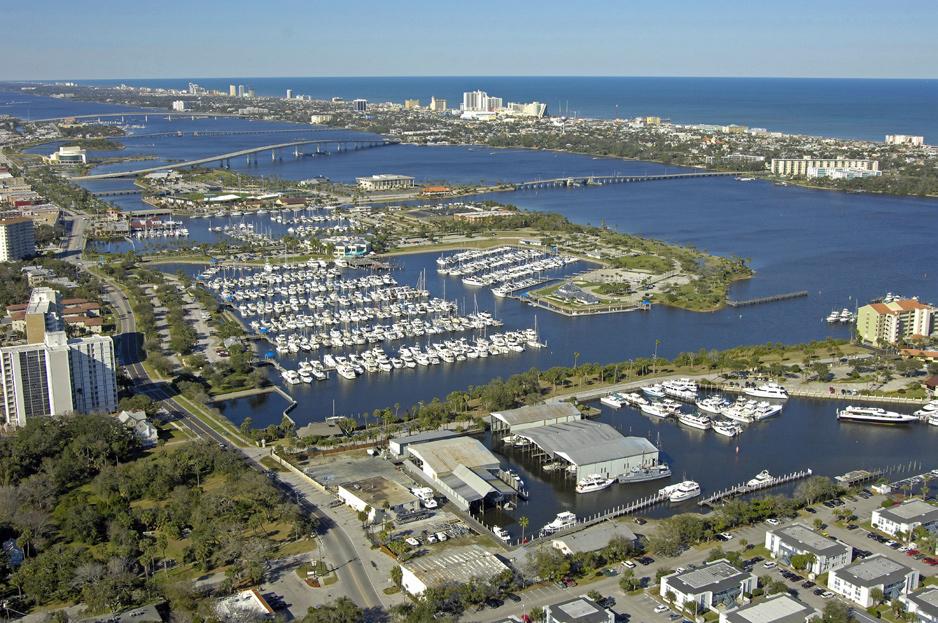
What’s to come as the threat of COVID-19 reduces?
“Marinas should still prosper as an ‘escape’ from the house. People will make shorter trips on boats so as to stay closer to home without fear of being caught away in a foreign country. There will be more boat use this summer as people want to make up for lost leisure time, and increased cleaning of boats. When fall and winter come, we will probably be somewhat back to ‘normal’ for marina business unless economic struggles cause marina rates and slip demand to drop.”
Jim Bronstein
“If we have learned something, it’s that, as a business, we have to be
D-Marin is responding swiftly to change and operating with caution at all of its marinas including its Croatian ‘flagship’ D-Marin Mandalina.

agile and responsive. We can’t predict everything but we can train our teams to be ready for anything. It might be that some things are simply impossible to predict. We are yet to see the true scope of the economic consequences. If our customers will use their boats less frequently or whether international travel will restart in the same way. Until there is a vaccine, D-Marin will be ready to adapt and help our customers as much as we possibly can.” Dean Smith
“There may be a slowdown of transient business as boaters get comfortable with going to new locations with possible increased positive cases. We expect our marinas to continue to be popular summer hangouts in the Great Lakes area and for our Florida marinas to be great places to visit and enjoy.” Dani Mill
“What we know is that when this is all over everybody will run to their boats and sail, see the sea and breathe. And we will see an opportunity to attract new customers to our small boating market who will be able to enjoy our vast and beautiful coastline. We are preparing a campaign to promote brokerage, charter and local businesses. It is time to join forces.”
Gabriela Lobato Marins
“Once the travel ban eases, we are certain the industry will flourish in full force to compensate for time lost out on the water. The yachting community, as a whole, has come together as a strong entity during these times from all industry perspectives. This, in turn, will have a positive impact on the yachting industry.” C&N Marinas
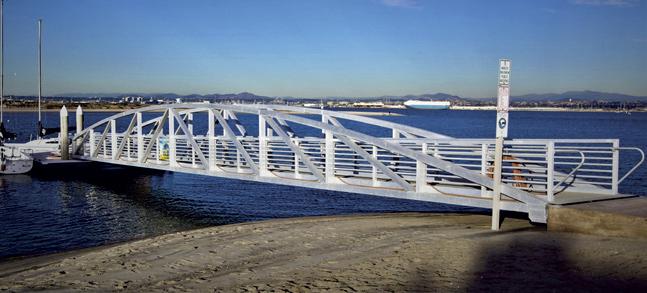

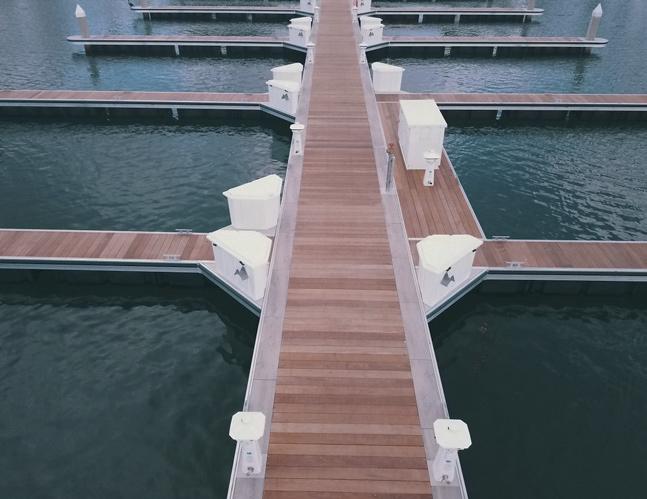
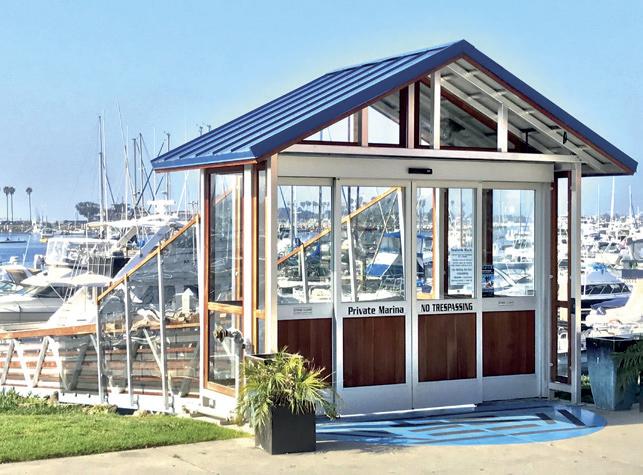
www.bluewaterdocks.com info@bluewaterdocks.com
West Coast: San Diego, CA 619.499.2007
Pacific: Oahu, HI 808.237.4504 East Coast: St Petersburg, FL 727.209.7110


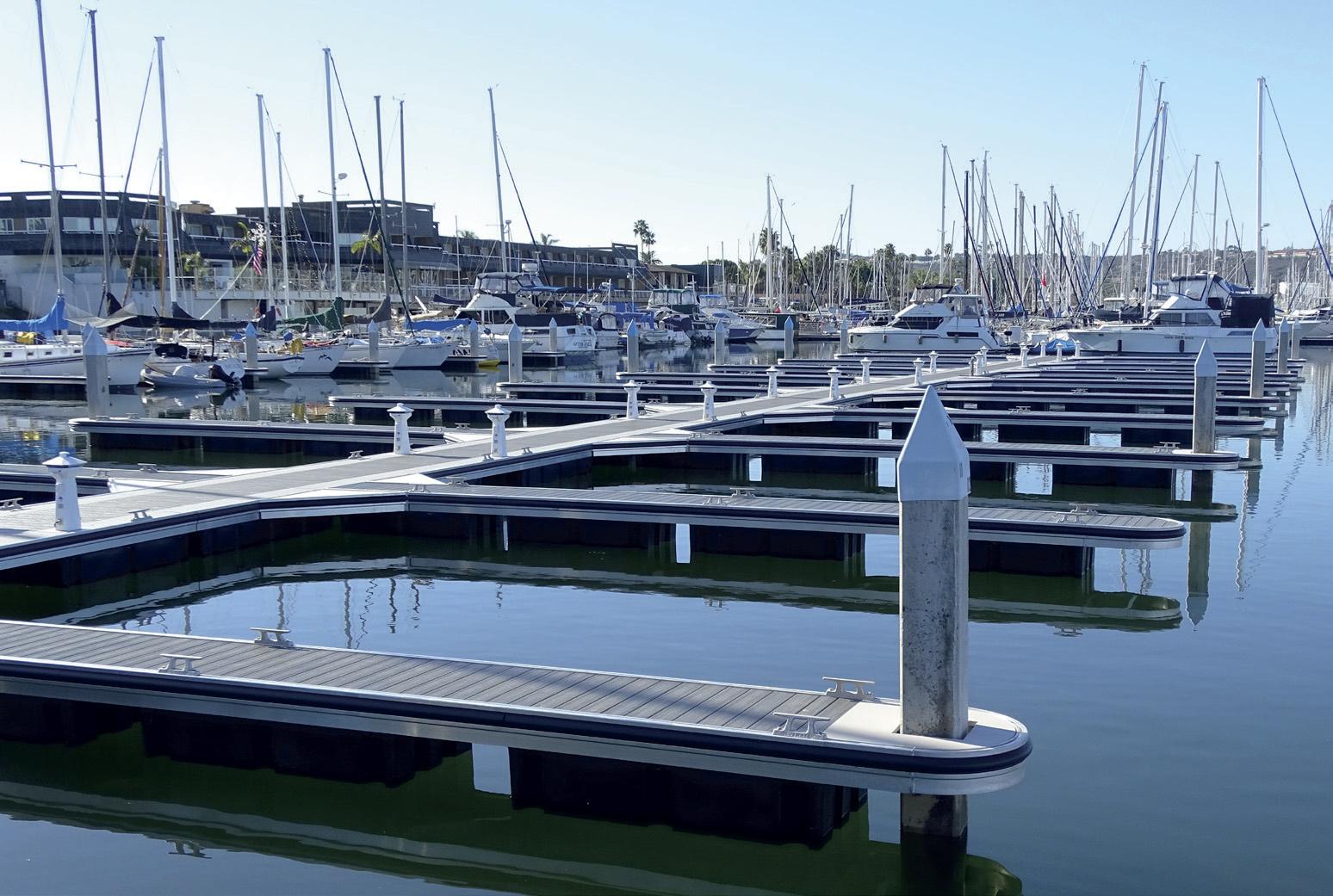
For over two decades, Bluewater has been the industry leader in aluminum floating docks, fixed piers, gangways and marina access control gates. Our structurally engineered designs allow for the most versatile configurations and decking options, superior utility accessibility, ease of installation and the lowest maintenance docks on the market. Contact our team today for a customized consultation and quote for your next marina project!

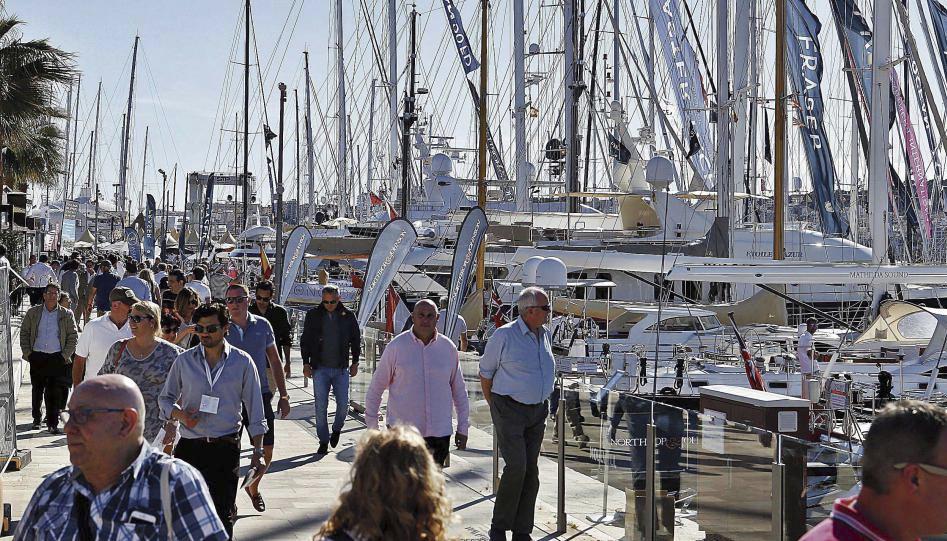
How is the marina industry going to handle going back to business after this scary, almost science-fiction COVID-19 medical and social experience? Oscar Siches shares his thoughts
Most of us live in countries that have already started to ease strong confinement measures, and an educated guess that many people will be able to use their boats with minimal restrictions by mid-June is not at all daring. Most governments forget about the singularities of marine recreational activities and place the whole group of users under “maritime” or “transport” or, at best, “fishing”. This confirms the need for us to create a strong relationship with the state administration. If we inform them it will help ensure the continuity of our sport without big hiccups.
Many associations big and small are issuing guidelines for yacht harbour behaviour on and after the re-opening of facilities. Invariably, 80% of the papers enumerate procedures for personal cleaning, social distancing, mask wearing, glove availability, i.e. information that everybody has listened to over the past weeks, when TV and social media saturated us to exhaustion with such messages. There’s no merit in repeating all of this information.
Some organisations went a step further and created a protocol for the use of the facilities. They organised way-in and way-out paths, time slots for
bathroom and shower use, circulation on piers and pontoons and right of way in gangways; procedures that are easy to understand and follow. Booking offices helped by sending out crew/passenger lists and ETAs ahead of schedule, and outlining procedures for check-in and check-out for charter boats, all of which helped to reduce the risk of catching the disease. And one very important thing has not changed. Once you embark on a boat and cast off, the oceans are yours, and the limits are the ones you set between the boat and the universe.
There is, however, another very important thing, which I feel is missing in all the ‘guidance’: the human element.
The people who have received an extra blow by losing family or friends, losing their jobs, their income, the stability they’ve gained after years of doing their best in life. People like this are also
part of the marina industry. They are self-employed mechanics, sail repair craftsmen, electricians, metal workers, chefs and waiters in marina restaurants.
With the recent relaxation of isolation rules and partial opening of many marinas and yacht harbours, the guidelines for user behaviour developed by various associations in many countries and especially those put forward by the International Council of Marine Industry Associations (ICOMIA) are being put into practice. But there is scant attention given to the small service companies trying to keep their employees but facing very low demand as users are encouraged to go directly to their boats, and when coming back, to move boat-to-car nonstop. We should not view them as new pariahs and lock them away in an emotional safe where everything unpleasant or inconvenient is stored until it fades away. They are part of the industry. They are less lucky than us (of course we are suffering too) but they should not be forgotten or abandoned.
The nautical industry in general and the yacht harbour/marina industry in particular share something very specific: we are bound by the sea, its freedom and its dangers. A marine engine technician will share tacitly with a dockhand or a yacht owner more feeling of belonging to things nautical than a vacuum-cleaner assembler will share with a home owner, or a factory car wheel fitter to a car dealer.
That’s why I cannot understand that we are leaving people of our own to be left on their own during and after these extremely demanding times. Such behaviour does not belong to the nautical spirit. Of course, a human being’s instinctive reaction is to save him/herself first, followed by taking care of closest members (family). Thereafter,
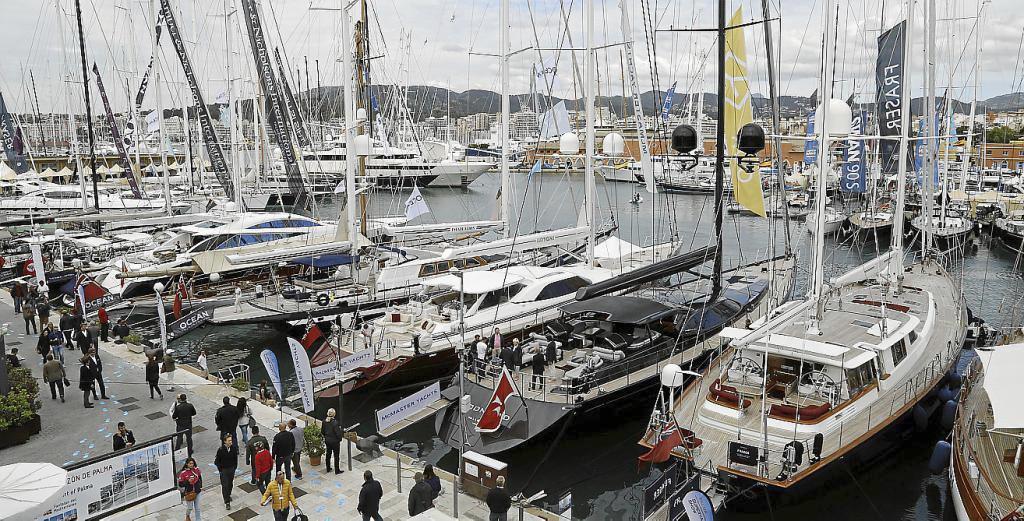
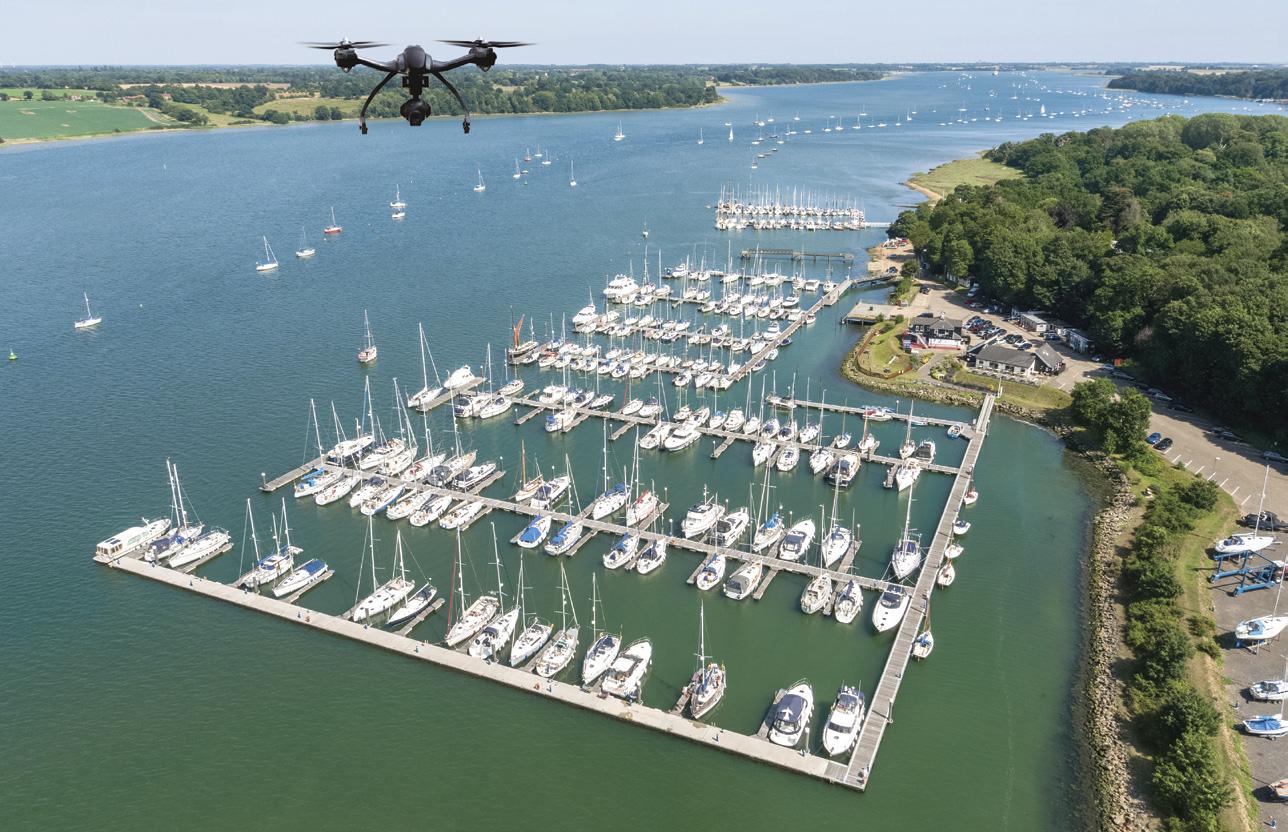
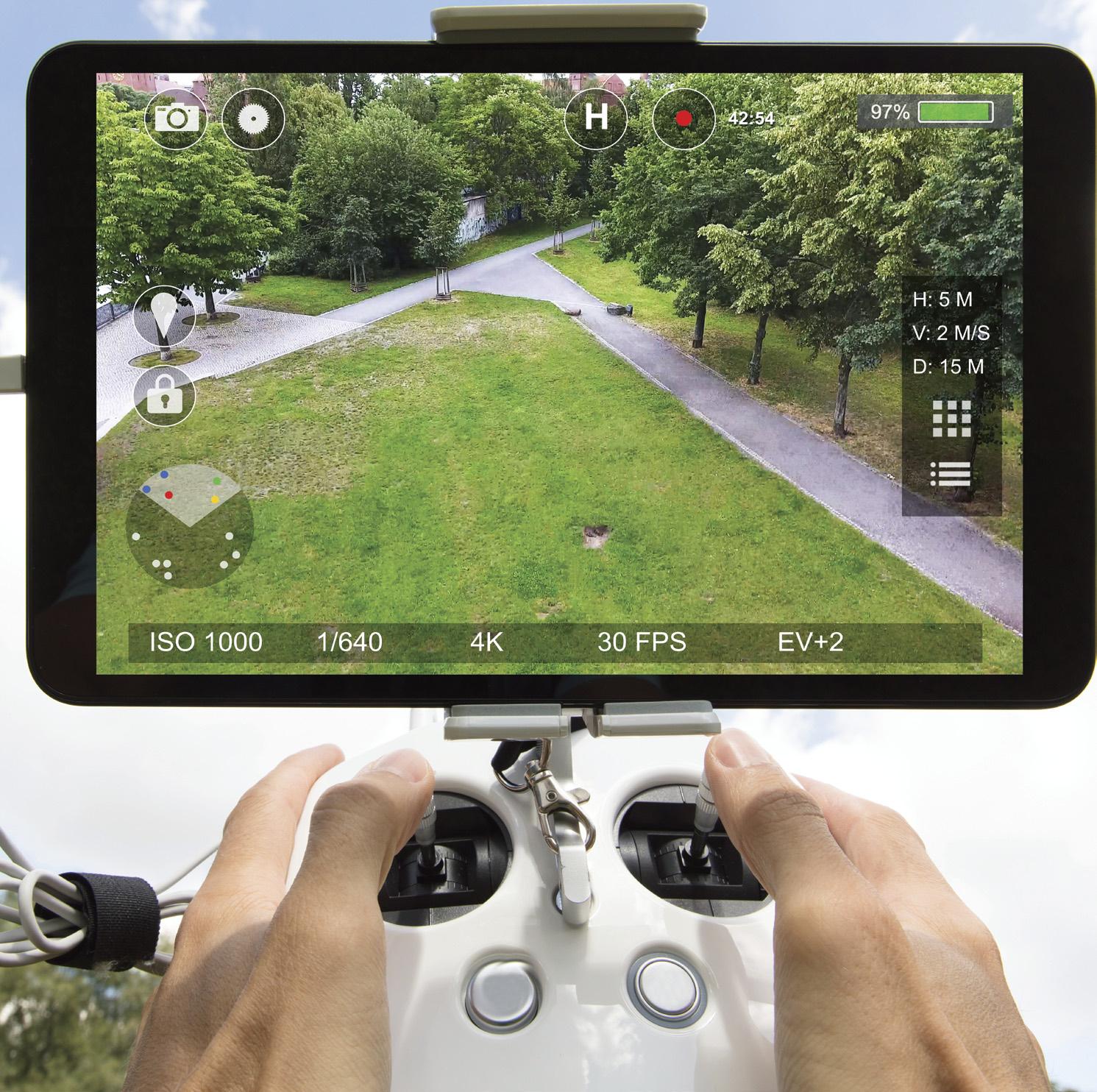



our priorities go to the social groups we belong to: nationality, job, associations and affinities.
And this is where I have the impression that the marina industry is not reacting as the closely bonded guild it should be. For some years we have said that the marina industry needs more communication, more cooperation and coordination to be able to lobby with more chance of success and to build a database enabling us to study trends, boat mooring/storing spaces and seasonal occupation. Some progress has been done on the matter, mainly with the help of the Marina Industries Association (MIA) of Australia and the ICOMIA Marinas Group. But it seems that the industry has not appreciated the impact of this year’s pandemic. We are not speaking about shifting bookings and occupation or price variation. While the confinement is in place, a marina’s day to day is a future situation to be guessed, a sudden shock to be dealt with as soon as boat users start to go boating again. This boating will not be as it was before: it will be gradual, slow and very demanding on management decisions as to how to regulate toilet and shower use etc. There will be no more packed restaurants at the weekend, not even a busy bar to comment on the catch of the day, the weather, the neighbour’s new boat or the latest electronic gadget.
Marinas as social communities, a concept that has been fought for for many years, will disappear for some time. The notion of “grouping is dangerous” will prevail. For how long? At least as long as the world’s governments do not consider countries free of the virus threat, free air travel is allowed again, and what is much more important, people do not feel afraid of being exposed to the virus. For that matter, media news has not helped at all by adopting a strong catastrophic tone. The skipper will always want to go boating, but many family and friends will consider that it is too soon to attempt to do it. And with crippled services at the marina, the fun will be considerably less.
We are saturated with the message of the numbers of people sick, of deaths, and of hygiene and social distancing, which is part of governmental protocols to relax confinement rules, yet everybody pays attention and is aware of it. What hurts

me is not seeing a single message reminding people that boating is a sport that automatically fulfils the rules of distancing (if you are less than two metres from a person on another boat you’d better call the insurance: you are in trouble), that is usually enjoyed with family or friends, that a boat is very easily sanitised. I also miss the organising help for all those in the marina community who are going through hard times. Raising money via charities is valid but solidarity is a horizontal concept that generates mutual respect. Here are some thoughts:
• If boat owners are not able to buy fuel – invite them on your boat
• Give restaurants extra terrace place at no charge to match their capacity while fulfilling social distancing
• Small companies are the ones facing the worst financial trouble: rent and wages. They will have to downsize to try to survive. Self-employed single person services are the next. If the marina bar or restaurant is operating at a fraction of capacity, they could offer cheap meals to marina workers, own and external.
• Service companies and individuals can organise small group events: training on simple subjects like fishing, engine and outboard maintenance, cooking onboard, occupations that the users value and are simple, and keep the companies
As never seen before? Port of Palma in the middle of the day during the coronavirus lockdown belonged exclusively to its yachts.
and service people in contact with the client.
By doing things like this, various opportunities will come up for vulnerable groups and, although it may not translate into immediate job increase, it will help people psychologically by making them feel less abandoned, and still part of the marina community. The one value for the users will be health safety, and they will agree to change their habits and respect new ones.
Of course the ideas and examples given here are not from the coretraditional procedures we knew and followed up to January 2020, but the priority is, at least for the next five to ten years, to make the users as well as the whole industry feel comfortable. Everybody in the industry knows that without environmentally controlled waters, there is no industry. Neither is any industry without people, and this is now the weak link. The way forward is something to be done by all parties, if we want to succeed. This awful situation has marked us indelibly. Let’s hope the lesson is learned and a bright future lies ahead of us.
Oscar Siches runs Marina Matters, a consultancy based in Mallorca, Spain. E: oscar@siches.com
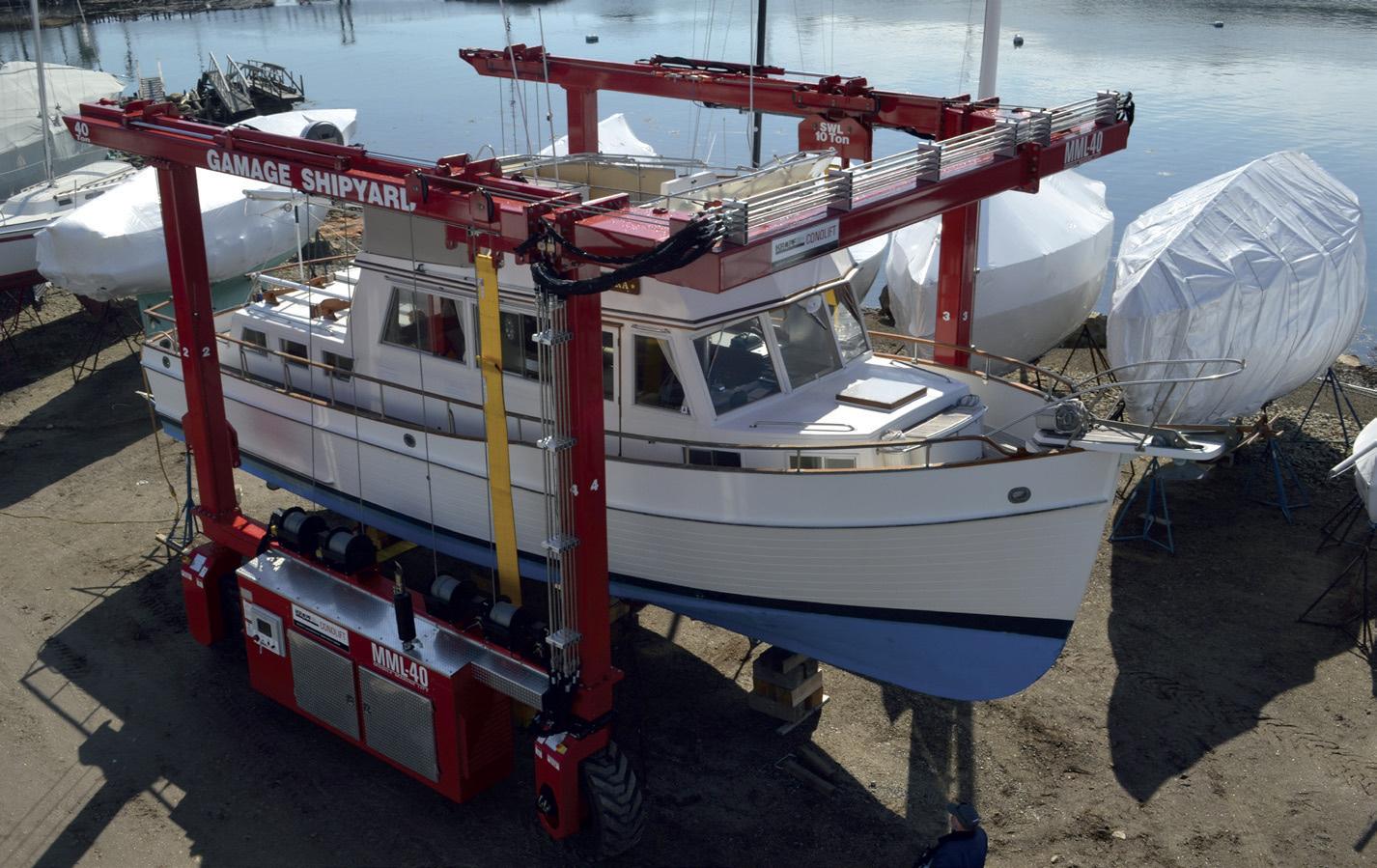


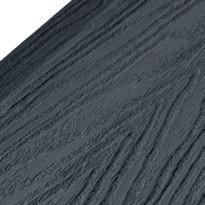

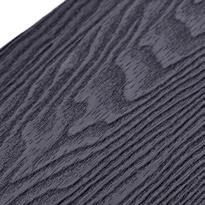
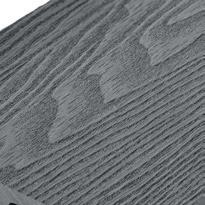
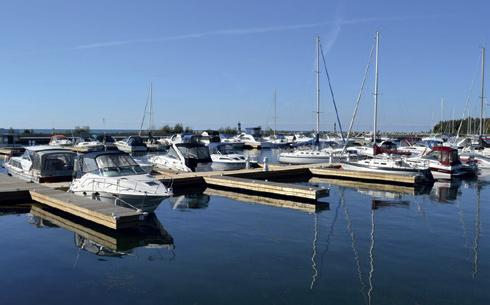
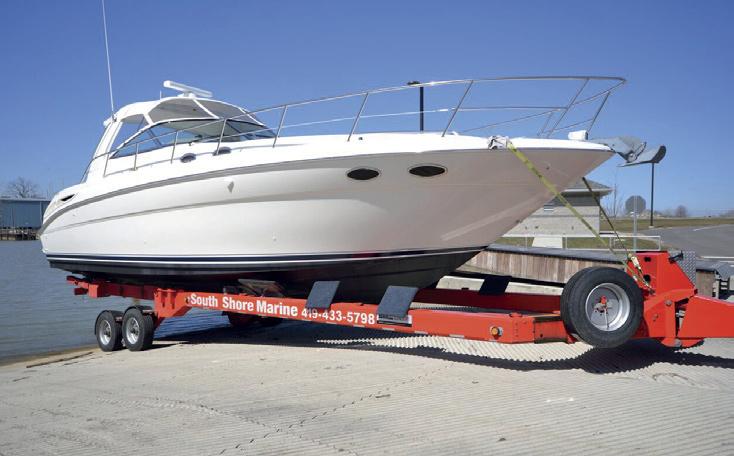



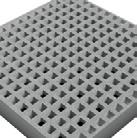

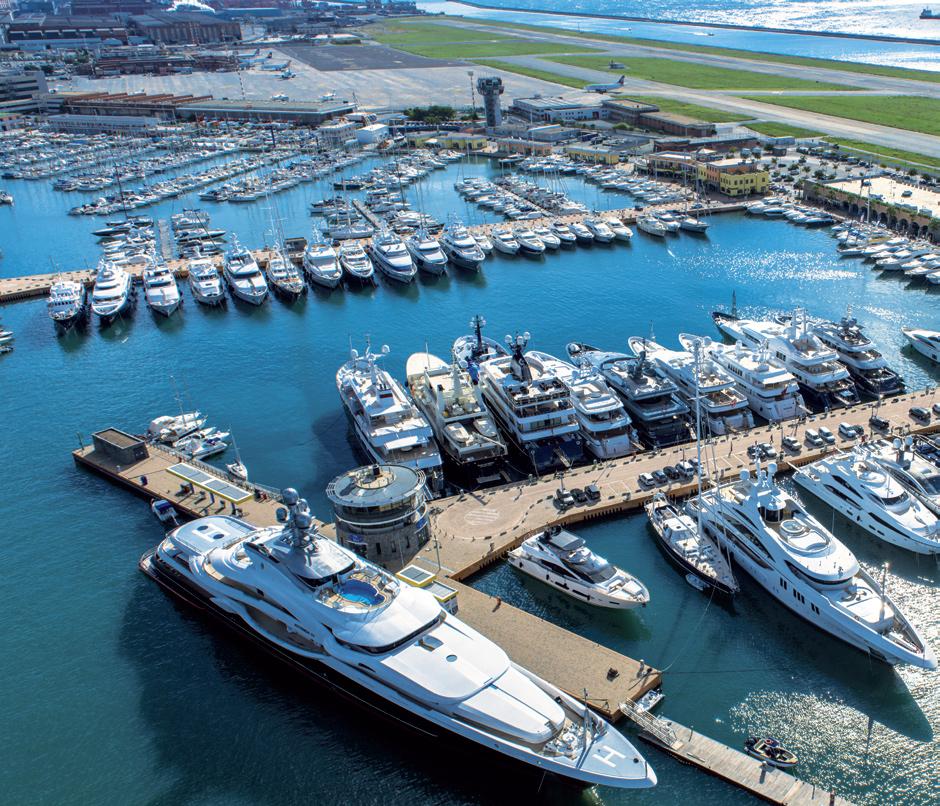
As Italians, our aim is to have a happy country, far from coronavirus and its stresses, that is open for boaters to explore 8,000km (5,000mi) of stunning coastline. Will our dreams come true? It’s all about ‘if’. Donatella Zucca reports
If the curve of the epidemic makes it possible; if no serious mistakes are made; if good luck prevails, Italy will continue to offer up its coastline, its marinas and moorings in the heart of the Mediterranean.
To drive the reopening, we need to breathe extra life into the nautical economy to supplement the helping hand it’s already received from ordinary people, entrepreneurs, and big names in luxury goods and in the megayacht sector where Italy is a world leader and where there are strong links with tourist ports. These harbours never completely closed, even during time of total lockdown, as the government recognised the need to protect the port heritage, ensure continuity of fishing as part of the food supply chain and support the role of the maritime police in the pandemic emergency.
Irrespective of this, the country has moved with great caution in gradually reopening tourist ports – to prevent the dream from becoming a nightmare.
The RINA Naval Register stepped up to the task by devising the Biosafety Trust Certification; the first management system certification aimed at the
Marina di Genova in Liguria is starting to open services to customers.
new normal after COVID-19: how the yachting sector can get ready?” to discuss the future impact on the industry and the challenges facing professionals.
Stakeholders included regional authorities, associations, port networks and marinas but the playing field was far from level. Regions are subject to limits set out by Prime Ministerial Decree, which allow for businesses to diversify from the rules in order to specifically balance economics and health. For example, there is virtually no coronavirus impact in Umbria, Sardinia, Basilicata and Calabria. In Sicily, Abruzzo and Molise fewer than ten cases have been reported. Softer rules are thus being applied although governors of Sicily and, in particular, Sardinia are thinking about asking for a document that confirms negative virus symptoms for people coming from Lombardy and other areas in the north where there is/has been a higher infection rate. The government doesn’t, however, favour the request.
“Contagion differs from region to region,” confirms Alfredo Malcarne, president of Assonautica Italiana. As of 3rd June, there have been different rules for different territories. “The problem only affects some areas of Italy [and restrictions would have different results]. Here in Puglia, for example, lockdown would mean dying of hunger more than of COVID.”
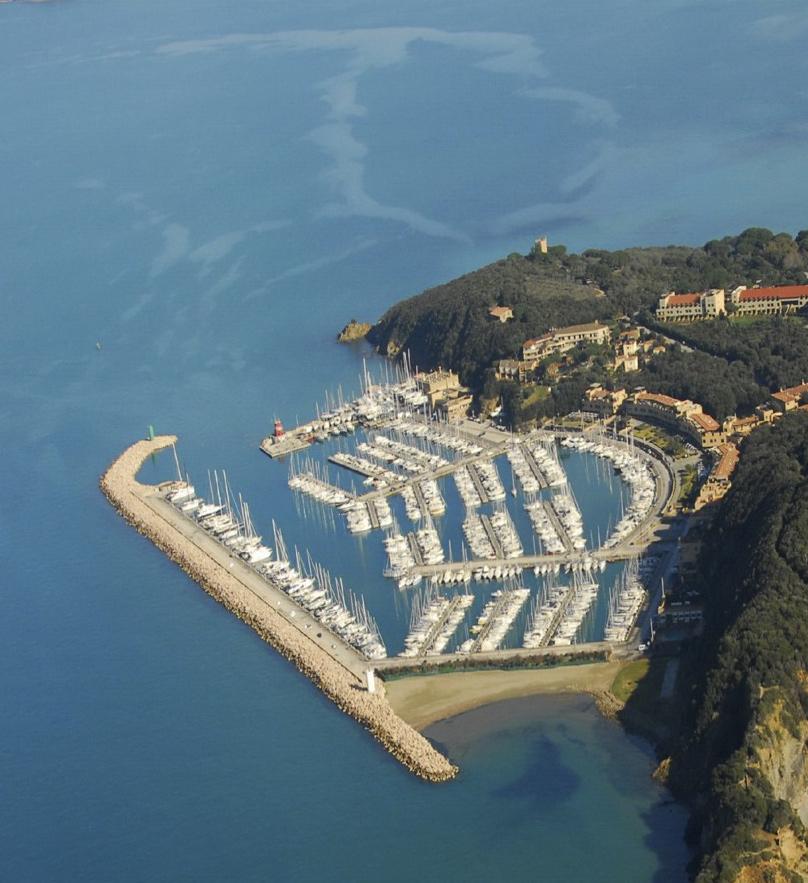
Since March, Assonautica Italiana’s free of charge legal department has responded to thousands of emails and provided useful help and suggestions. Furthermore, as Antonio Bufalari, member of Assonautica Italiana Technical Scientific Committee and Legal Counsel of the Marinedi Group, explains: “With the standards of the prime minister as a baseline, trade associations have acted on their own initiative to tailor appropriate action to port activities.”
Matteo Italo Ratti, president of the Marine Consortium of Tuscany and CEO and director of Marina de Medici, adds: “The risk is to fall into areas of contradiction, as happened in Campania. The problem of opening and closing is linked to the overlapping of multiple activities.”

Roberto Perocchio, president of Assomarinas, clarifies the protocol: “A tourist port is an interface between the land and the boat. A boat is an island and contact opportunities are minimal especially if used by one single family.” But boats are closely watched. “There are many patrols at sea by the Capitanerie di Porto, Carabinieri, Guardia di Finanze especially in Naples where the regional rules have been very severe out of fear that the population density in the Gulf could act as a detonator. All marinas report maximum attention from the maritime authorities and highly aware customers.”
In Campania, city mayors, the regional Task Force, ASL and health companies are preparing a safety plan for the Amalfi coast, which has been barely touched by the virus. Over 2,100 swabs had been taken as this article was prepared (end of May).
On 19th May Confindustria Nautica confirmed that the Italian Government intended to reopen all borders between Italy and other European countries on 3rd June. All movements are to be limited by state regulations or relate to specific territories provided they adequately meet the level of epidemiological risk and are in line with the restrictions of EU legislation and international obligations. There will be no mandatory 14 day quarantine period.
The Ministry of Infrastructure and Transport (MIT) has decreed that all
tourist ports must display information signs in Italian and English outlining the precautions that must be taken on site, e.g. use of personal protective equipment when in common areas and complying with a 1m (3ft) social spacing rule.
Marinas must install sanitiser dispensers on every pier, limit boat movements and ban gatherings on the quays. The ability for any boat to move between different regions or countries is conditioned by national, regional and union regulations of the movement of people. As the marina is seen as an ‘economic activity’, in the event of a serious lack of respect for standards, activity can be suspended if the rules are violated.
Boat owners must follow the same rules on a boat as they do at home. Any symptoms of fever, respiratory infection etc. must be reported to the regional health authorities. The same rules apply for rental boats, which must be sanitised internally and externally
(living spaces) after every use, even if only for a few hours. The boat must have supplies of sanitising products and have information signs in multiple languages outlining hygiene measures.
If a boat is chartered with a crew, the skipper must provide everyone with appropriate protective provisions and ensure crew quarters are periodically sanitised. The crew must always wear protective gear when mooring up, leaving a berth, bunkering and during towing phases with marine vehicles. Everyone must have regular tests for COVID-19 and temperatures must be taken daily. Guests must respect social distancing.
Where we are now
Italy has over 740 marinas and mooring areas, which are generally of good quality. All have basic anti-COVID rules, often improved by their own initiatives.
With the exception of Piedmont and Lombardy, where the majority of Italian megayacht owners live, maxi yachts are scattered around the Italian coast – especially in the south and on the islands where there is little or no sign of the virus.
Liguria was among the first to impose restrictive measures and is now reopening in a regulated manner. It also has a very special goodwill initiative called “And it will be a good wind!” This was developed at Marina degli Aregai to give intensive care and therapy personnel working in the COVID-19 emergency a time-off experience on board a boat.
Marina di Loano (Savona) is, meanwhile, following a rigorous safety protocol and Giorgio Casareto, director of Marina di Varazze speaks of attention to detail while also looking forward to a summer season of
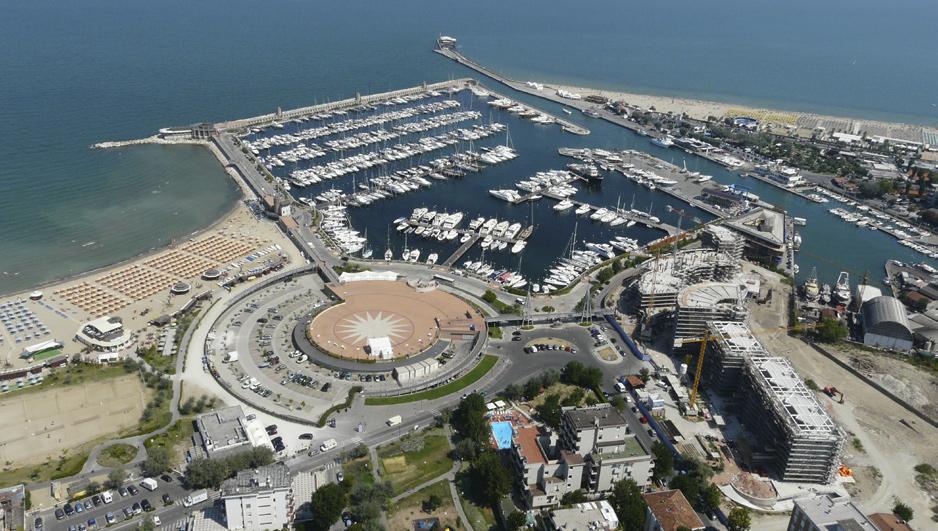

Represented in over 40 countries www.
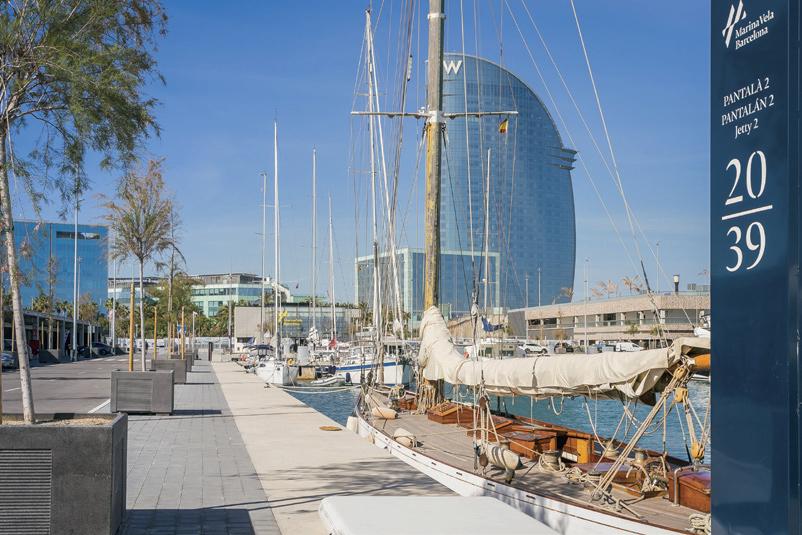
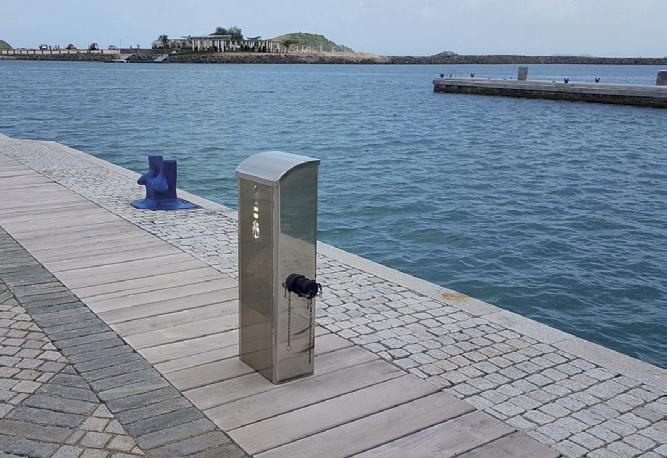

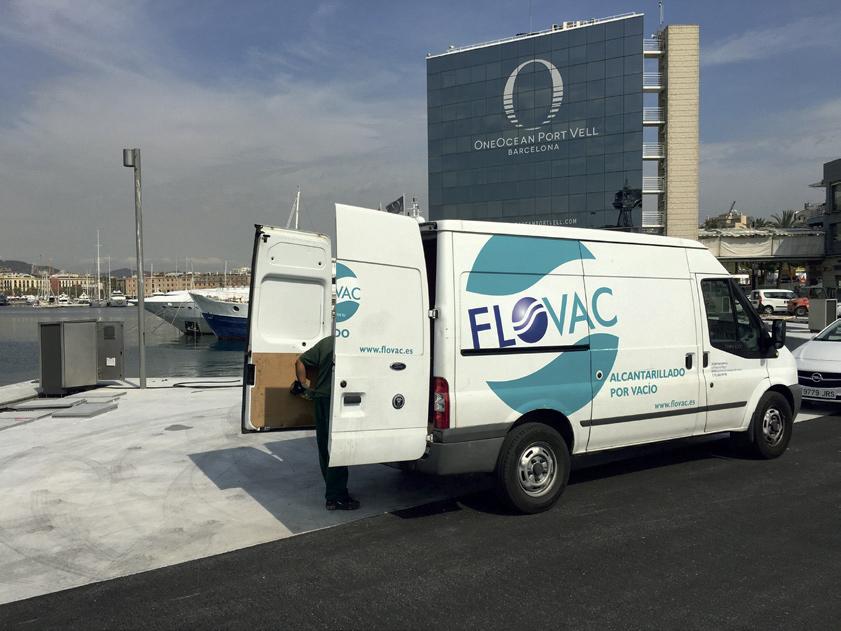
Takingthe toGreenapproach the VacuumproblemBlackwater seweragesystems are ideal for use in marinas Theandportsofanysize.
fromFlovacsystemcancapturesewageandbilgewater Noboatsandallfacilitiesaroundthemarinacomplex. Validateselectricalpowerrequiredatdockside
No risk of water contamination
MARPOL certi cation
Suitableforboatsanddocksofanysize EaseDiscreet,smalldiameterpipework of installation No odour

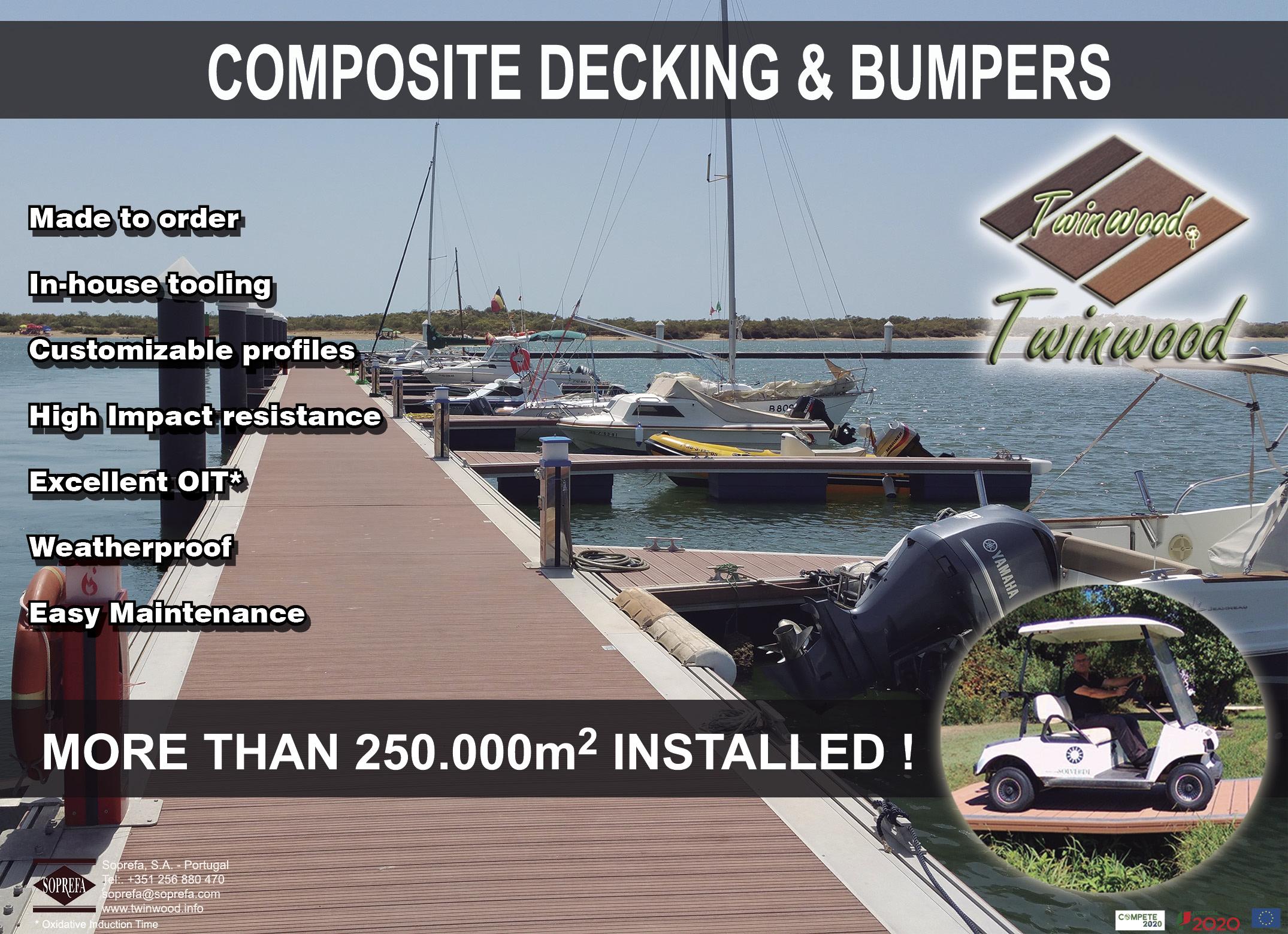
unprecedented length. “We’ve activated every measure to guarantee safety and assistance to boat owners, visitors and workers,” he says. “We have access protocols to the marina – a regulation aimed at limiting gatherings in common areas – and a daily sanitisation plan. We are working with our franchisees to evaluate the best way for bars and restaurants to give good service despite the restrictions. As the picture becomes clearer, we will look at the feasibility of our entertainment initiatives.”
In Tuscany, Marina Cala de Medici made a unique stand. “We were the first to produce the ‘Banchina Sicura’ (safe dock),” explains CEO and director Matteo Italo Ratti. The dock area is around 5% of the mooring space, is secured by a gate and is used as a transit holding area. “When boats arrive it’s a problem as when mooring up those on board have contact with the marina staff,” he says. “At the quay we have trained, fully equipped and protected personnel and nurses for health procedures for those coming from other regions or from overseas. Once all is checked, the boat can progress to its berth.” The Tuscan

Operators at Marina di Varazze in Liguria have implemented a full range of sanitising measures and social distancing initiatives and are thinking through potential longer term ways to open more social spaces.
Marine Consortium has extended the Banchina Sicura for charter at its ports (2,500 berths of 5 – 100m/16 – 330ft).
The aim to keep Tuscany safe throughout is to be admired especially as its safe location is a lure to boaters, and marinas - such as Marina di Punta Ala - are surrounded by valuable
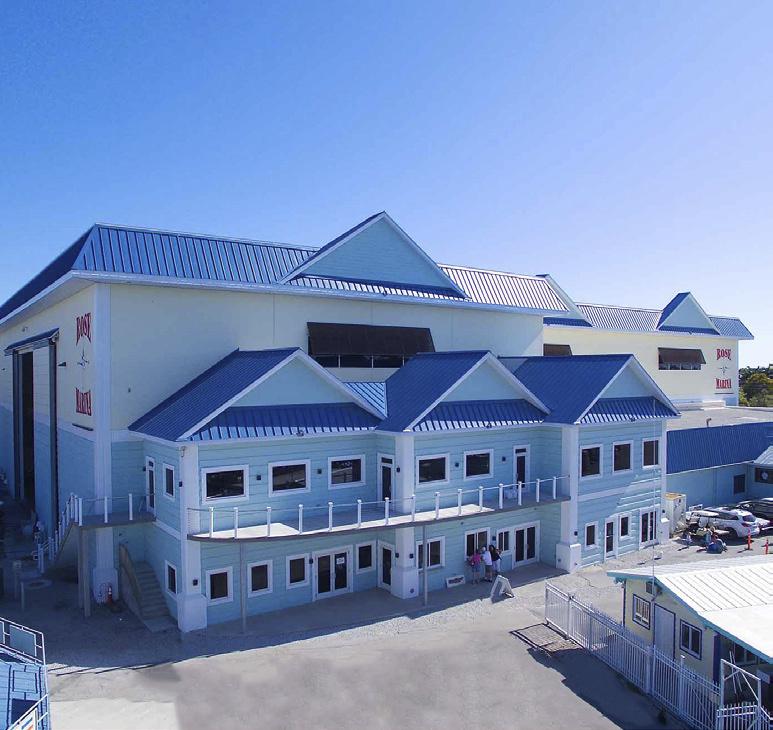

natural assets. “Reservations exceed expectations and suggest a greater summer turn-out than in previous years,” says Marco Corti, director of Marina di Punta Ala. “In the first partial restart weekends, our Tuscan customers arrived, and now we are ready to receive boaters from other regions,” he adds.


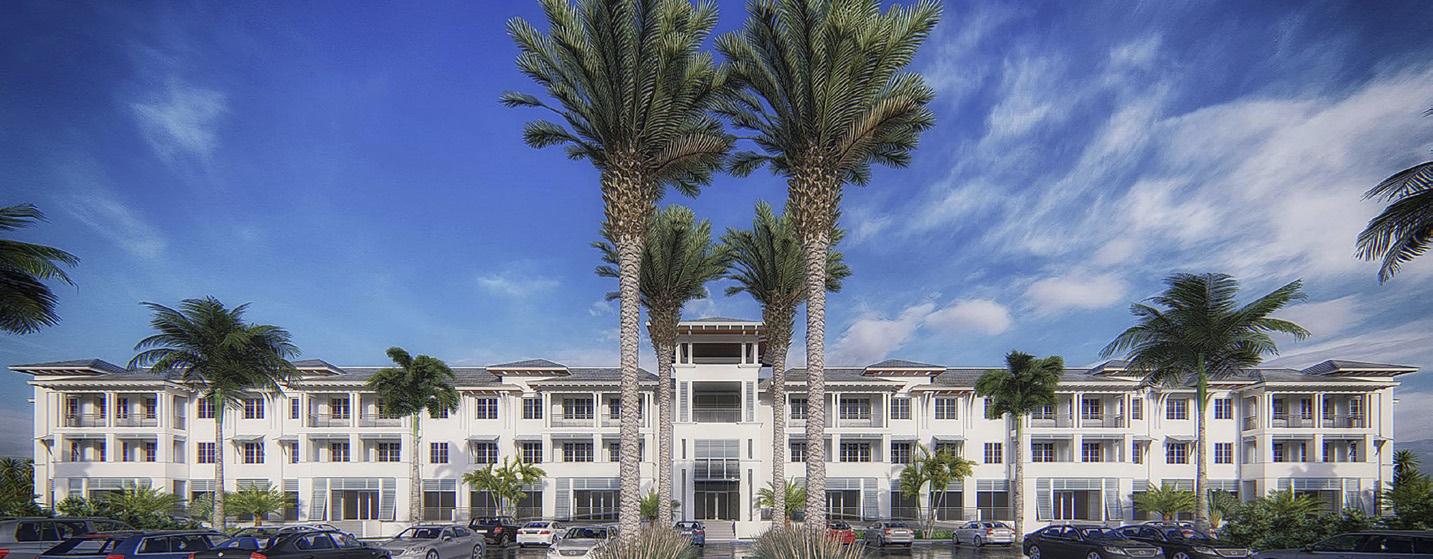
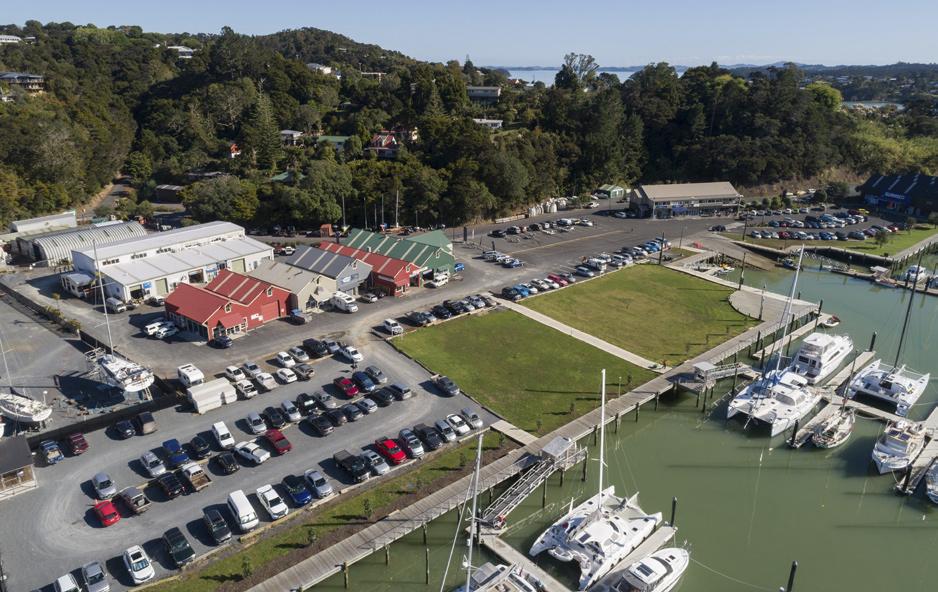
Yachting and maritime pastimes have a history of thriving in times of hardship. Many of New Zealand’s yacht clubs and sailing classes came out of the depression and post-WW2 years. They were founded in the days where there were fewer travel and lifestyle opportunities and, for this same reason, the marine and marina industries in New Zealand could be part of the country’s economic recovery today.
On the eve of the move to the relative freedom of Level 2 [12th May], and even after seven weeks of strict lockdown, there is a lot of reason for optimism for the marine and marina industries, say operators of the country’s marinas at a meeting of the New Zealand Marina Operators Association (NZMOA) Executive.
“Right now we are focused on measures to eliminate COVID, to get out of lockdown as quickly as possible,” says Andrew Welsh, general manager at Wellington’s Chaffers Marina. “We all need to play the game to get out of it quickly.”
Assuming that New Zealand’s lockdown is successful, what will the ‘new normal’ look like for the marina industry and those it supports, including its customers, commercial tenants, marine suppliers, marina contractors and its staff?
Andrew Wilkes is owner-operator of the stainless steel engineering firm Dixon Manufacturing. He has noticed that while no marina related projects have been cancelled (some have been postponed) there is a pulling back on
other projects that has put strain on small-medium sized businesses like his. This includes some cancelled boat builds and the cancellation of the annual Hutchwilco Boat Show in May.
Wilkes says it’s too early to tell what the industry will look like, but he expects we will have a clearer picture in the next two months.
Generally, however, Wilkes – even as a business owner – sees reason to be positive. For one thing, many New Zealanders who cannot travel overseas will have more opportunity to use their boats, and with that they will need to maintain, upgrade and provision them, spending money with New Zealand businesses in the process. The reduced price of fuel is helpful to those who own powerboats too.
This is also the mindset of Tom Warren, director of Heron Construction, which specialises in building marinas all around the country.
Left: Port Opua, Bay of Islands Marina, is located in a stunning natural environment where boating is a very popular pastime. Below: Picton, one of the Marlborough Sounds Marinas, is a busy boating hub.
Warren also sits on the board of New Zealand Marine.
“People will still enjoy getting out on the ocean, it is part of the New Zealand psyche. I believe the marine sector will be vibrant,” he notes.
Two months ago, many of New Zealand’s marinas had redevelopment or expansion projects planned or underway, to accommodate more boats, commercial buildings, and to improve environmental outcomes.
While Warren foresees slow down in some waterfront infrastructure projects - the Marlborough region, for example, is now rethinking some of its programmes - he confirms there is a long term shortage of marina berths in the country and demand remains high.
Marina consultant Phil Wardale is on the cusp of starting two new waterfront projects with support from the government’s Provincial Growth Fund. He concedes there are unknowns. “We are now going into one of the biggest recessions the world has seen. We know it’s there but we won’t feel it for a little while,” he observes. “There are people who were doing well who now don’t have businesses. As an industry, we need to ensure that we choose to support New Zealand businesses and New Zealand people however we can, and that our projects are designed to do this.”
Chris Galbraith is general manager of Far North Holdings and chair of NZMOA. From his position in the Bay of Islands, he believes that despite stresses in the economy, the industry is fortunate to have a passionate group of New Zealanders who love boating. “Even in a depression or recession, we can get out on our boats,” he says, “and spend money on them.”
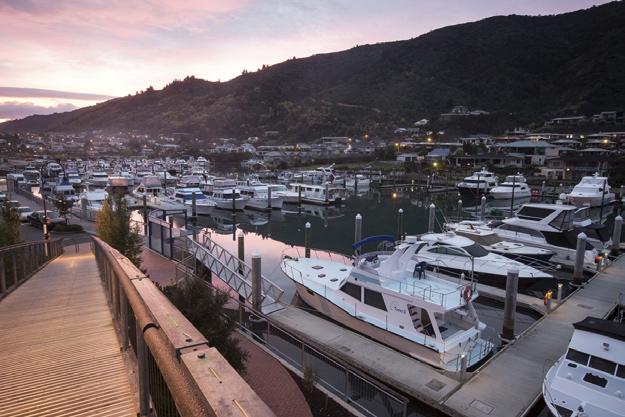
Accommodating nearly 2,000 boats, Westhaven Marina in central Auckland is a focal point of the capital.
By nature, boating is also the ideal pastime for isolating from a virus. You can isolate with your ‘bubble’ on your own vessel, and with blessing to go ahead in early 2021, the 36th America’s Cup will be another boost.
Galbraith asserts that the marina industry is in a position to support other maritime industries and it should do so. “There will be challenges but we are here to keep going and to keep the dream alive,” he concludes.
A survey of the New Zealand marina industry, analysed as this issue of Marina World was being finalised, shows the industry emerged from lockdown in a strong, confident position.
Members of the NZMOA were asked to indicate how their metrics or perceptions had changed as a result of COVID-19.
75% of respondents say their confidence in the industry for the
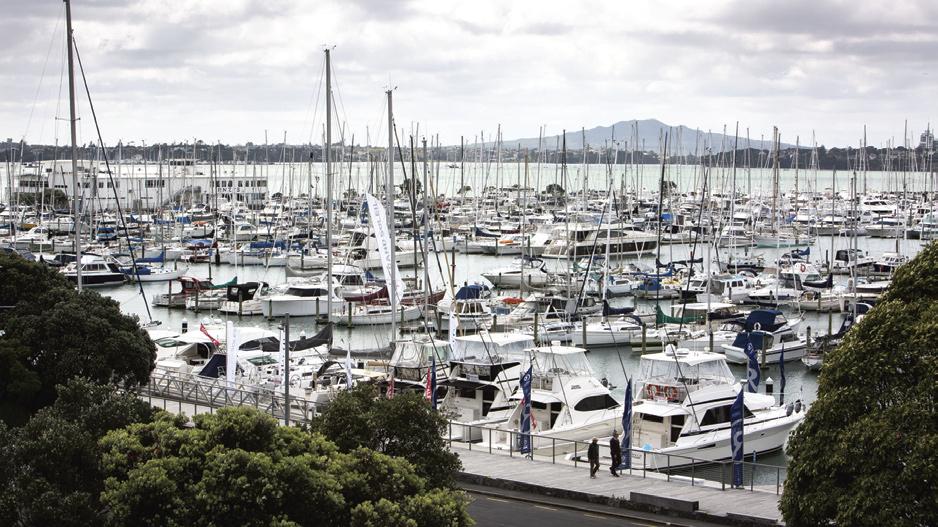
next six months has improved, and 81% believe that as a result of the pandemic, marina projects, including extensions, refurbishments and improvements, will continue as planned. 68% of these believe that there will be more projects planned as a result of lockdown, possibly as part of economic stimulus packages from government and councils. 19% believe marina projects will slow down as a result of the pandemic.
Generally, operations report that use of their boat ramp and marina facilities has increased: 50% report use of marina facilities is up, and 44% report use of boat ramp facilities is up. 25% report a decrease in use of marina facilities. The survey was completed at the end of May when weather conditions were favourable for boating. Most operations report that customers are continuing to pay their invoices as usual.
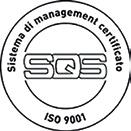


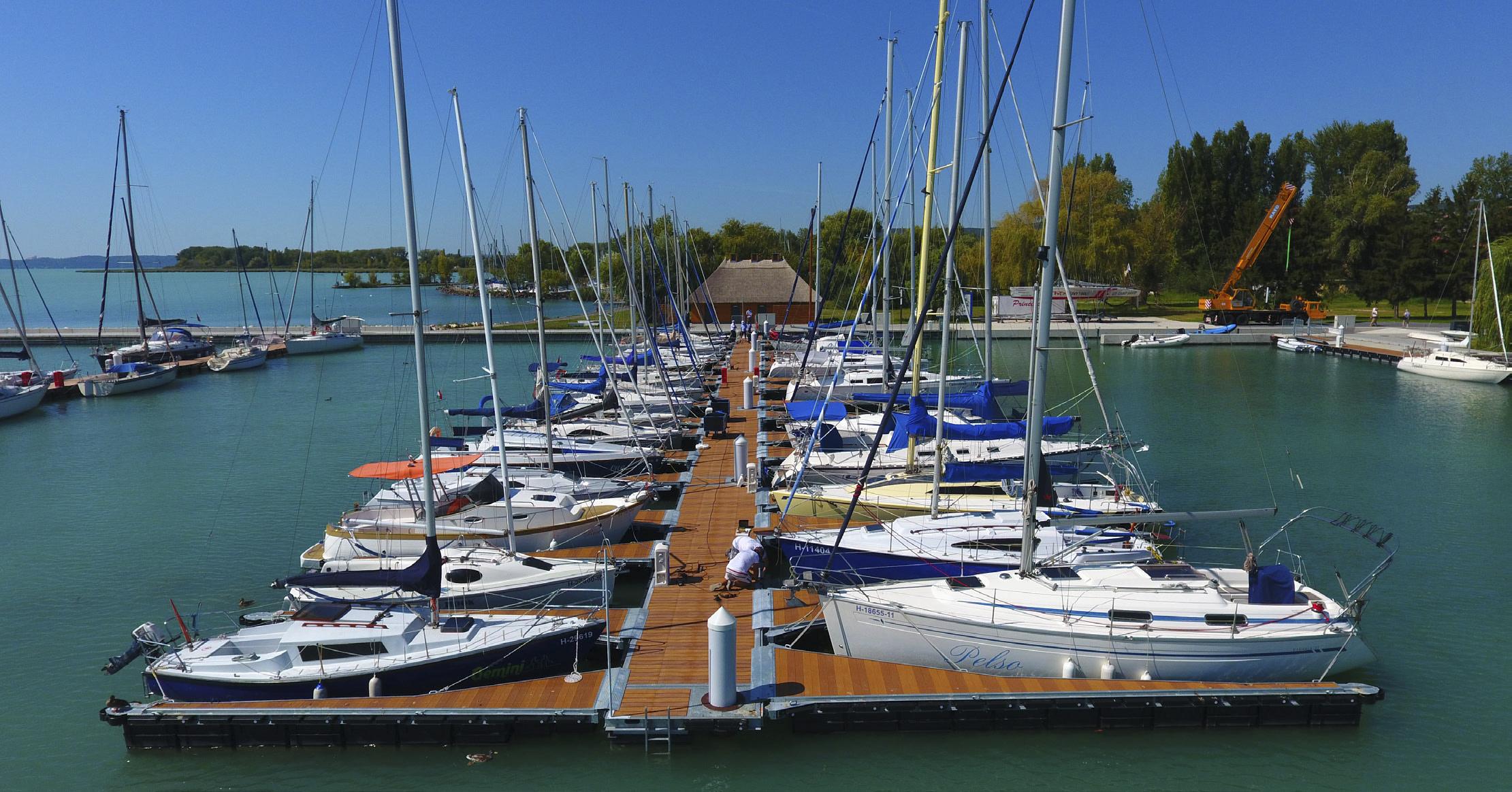

In the midst of a global pandemic, technology promises to be the glue that holds us all together. The marina industry – historically lagging behind other industries in this area – must adapt to the ‘new normal’ and take advantage of the slew of products on offer. Iaian Archibald, co-founder and CEO of Swell Advantage Ltd, looks at the options.
As from May, we started to see some jurisdictions around the world flirt with re-opening parts of society, but we don’t really know how this will play out in the coming months and years. The good news is that access to boating and the opening of marinas, at least on a limited basis, has been considered an essential service in some regions –and for most of those where it hasn’t, boating will be one of the first activities to be allowed.
Regardless of the level of restrictions in your area, we’re all struggling with how to adapt personally and professionally to this new reality. Increasingly, we’re relying on technology. Individuals, organisations and whole industries are getting a crash course on technologies that they had been avoiding, or were not interested in previously. It’s been surprising how well and quickly we’re all adapting to digital tools and new ways of doing things.
Austin Bleier, CEO of San Diego-
based marina hardware manufacturer MarineSync, neatly sums up the current situation: “I think this pandemic has been a reality check for practically everyone. I think it’s safe to say that all businesses will forever change how they service their client accounts and conduct day-to-day operations. It’s hard to imagine taking this seriously, until it actually happened.”
The marina industry has been a technology laggard compared to a lot of industries. There are a number of valid reasons for this, and a few maybe not so valid, but the real question is, how do we move forward?
Mike Melillo, co-founder and CEO of the company behind brands like Marinas.com and Dockwa, believes “technology will play an important role in empowering marina operators to simultaneously provide great customer service, limit face-to-face interaction with and among boaters, and keep both themselves and their time protected.
When marinas open back up, not only will there be new socialdistancing policies to implement and become comfortable with, there will be a backlog of tasks (launching boats, work orders, etc.) to work through. The best tech will keep boaters and marina employees delightfully distant, and save marina operators time as they focus their energy on the more physical aspects of their business.”
For organisations in any industry there are three types of digital tools replacing the physical office. Internal workflow and communication tools, document management and video conferencing. For day-to-day collaboration Slack has become the default tool replacing internal emails and in-person conversations. Google Drive with Google Docs has become a popular tool for organising, storing and collaborating on documents. Our marina software company Swell Advantage has been using Slack and Google Drive/Docs since they were founded. It’s now hard to imagine not using them.
For external sales demos and internal meetings, Zoom has become popular. Other options include Google Meet and Microsoft Teams. Loom is a great way to create personalised sales videos and some salespeople are using apps like FaceTime to give virtual tours of high-ticket items like boats. These tools are generally supported by product/ project management tools (generic or industry specific), customer relationship management (CRM) software and/or enterprise software systems like the marina management software many of us are used to.
Modern software tools are usually developed to do one set of tasks and connect with other systems that handle other tasks. We’ve seen some legacy software systems for marinas start to develop partnerships and APIs (how digital systems exchange information and coordinate tasks). Dockmaster, one of the highest rated legacy systems on the market, has partnered with drystack software Boat Cloud to handle drystack management and we’ve seen others connect to products like TaskRabbit. At Swell, we’ve partnered with Square POS. We decided not to build our own point of sale (POS), or white-label a generic POS with limited functionality. More importantly, the

partnership enables our customers to take advantage of Square’s advanced security features, reporting, payanywhere handheld systems, online payments, retail software, hospitality software and HR features.
A problem with a lot of the systems used throughout the industry is they are older systems, which follow the ineffectual ‘one solution for all tasks’ paradigm. They tend to be closed systems hosted on-site, with access only available in the office and have a limited ability to exchange information with outside systems like accounting software. Some established players like Scribble are completely redeveloping their technology to provide modern functionality (Marina Go). And newer companies like ours and Molo are entering the market with cloud native solutions built around application programming interfaces (APIs).
Physical contact
Marina and boat club customer service has traditionally been high touch. Both managers and older generations of boaters are accustomed to filling out paper applications in the office, dropping off a cheque and sealing the deal with a handshake. These face-toface interactions provided opportunities to build relationships, make boaters feel well cared for and expand the marina’s brand. A well-run marina is defined by its cohesive boater community and staff who know the boater’s boat and how they use it.
The problem many in the industry are now facing is how to manage facilities and boaters when “high touch” has taken on a less positive
meaning? Marina customer service can generally be put into three baskets: transactions – mostly the exchange of money and documents; services – like boat maintenance or an onsite deli; and community – which includes events, races and general day-to-day interactions.
Transactional customer service is probably top of mind for most marinas right now. Stopping into the office with a paper cheque is no longer encouraged, nor is putting a cheque in the mail. Onsite POS systems that do not have a tap option are now obsolete as they are a key vector for disease transmission and should be one of the first technologies any business replaces. Most modern marina management systems should have the ability for boaters to pay online directly in the system with a boater facing tool or through e-mailed invoices. Accounting software systems like Xero and Quickbooks often have invoicing with online payment options if you don’t want to commit to a full management system. E-transfers are also an easy option available to most people.
Much of the resistance to alternative payment methods comes from older operators and boaters but we might all be surprised by how far older generations have come using online systems these past few months. Let’s face it, it’s a pain to learn new things and trust processes that are different from the ones we grew up with, especially when it comes to money.
Document management, including signing berthing agreements and collecting things like insurance papers, is a lot easier these days. Some systems like Swell have document management with e-signatures built into their products. Alternatively, there are a number of digital signature providers such as DocuSign, and then there’s the even easier PDF. PDFs now have a signature feature that enables a person to digitally sign the document, or they can print, sign, scan and send the document back. Recently, transient boater platforms, like Snag-A-Slip and Dockwa here in North America, have emerged to handle these tasks for transient boaters with the extra benefit of having numerous marinas for boaters to choose from.
Marina services are tough because it depends on the nature of the service. Boat maintenance and refit are pretty straightforward. Invoicing and service requests probably won’t change that much. Things like restaurants and retail will open when, and how, local
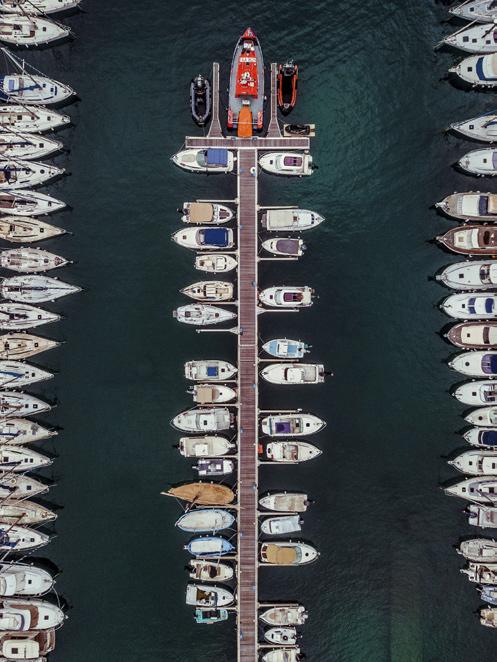
governments dictate. Drystack specific systems like Boat Cloud and Speedy Dock are focused on online scheduling tools for launch and haul-out.
Managing and maintaining a community is going to be a challenge for a lot of marinas and clubs. Activating and using social media has become more important, as are digital newsletters. At the very least,
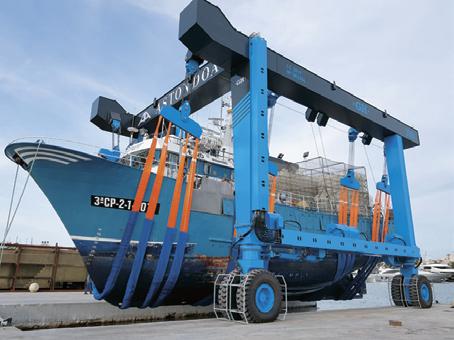

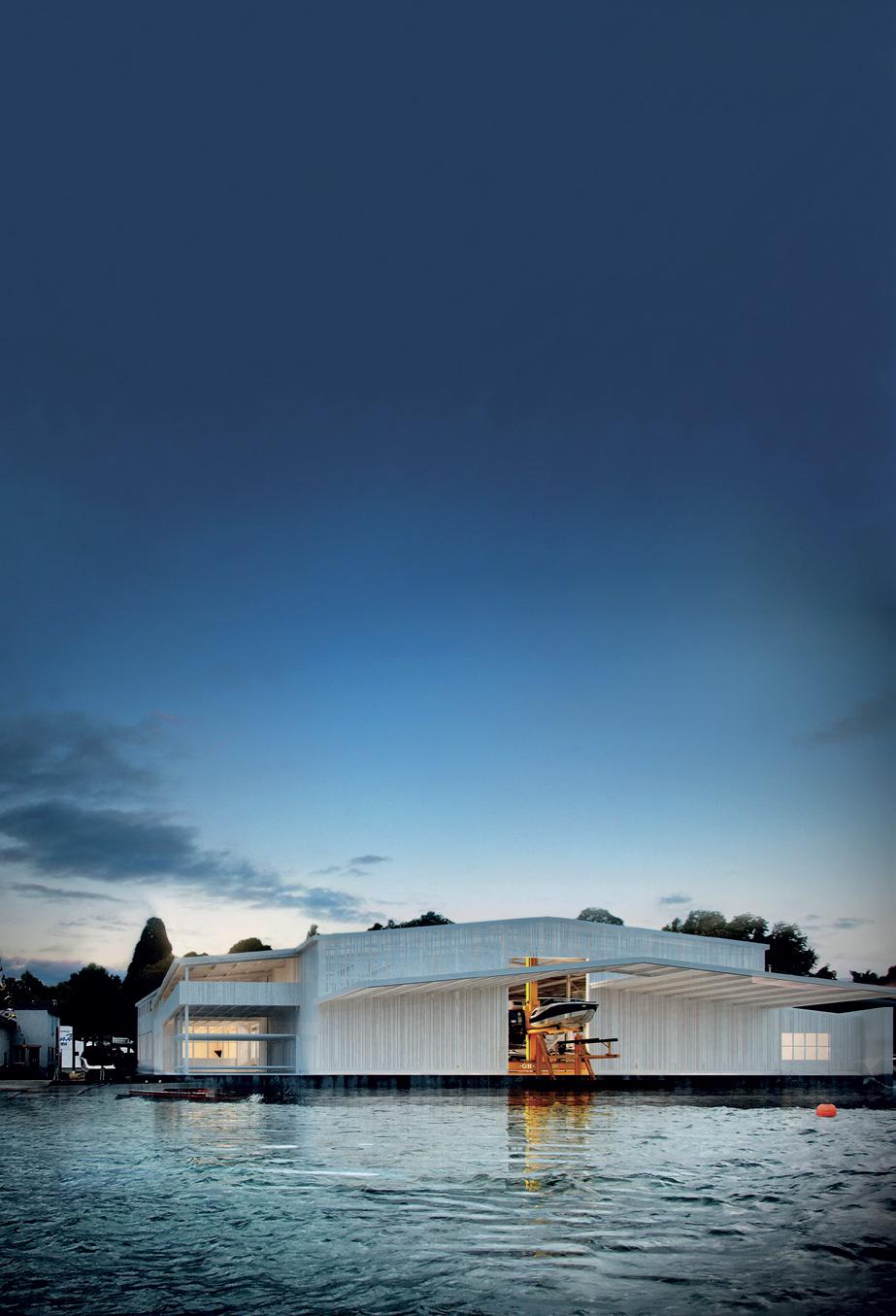
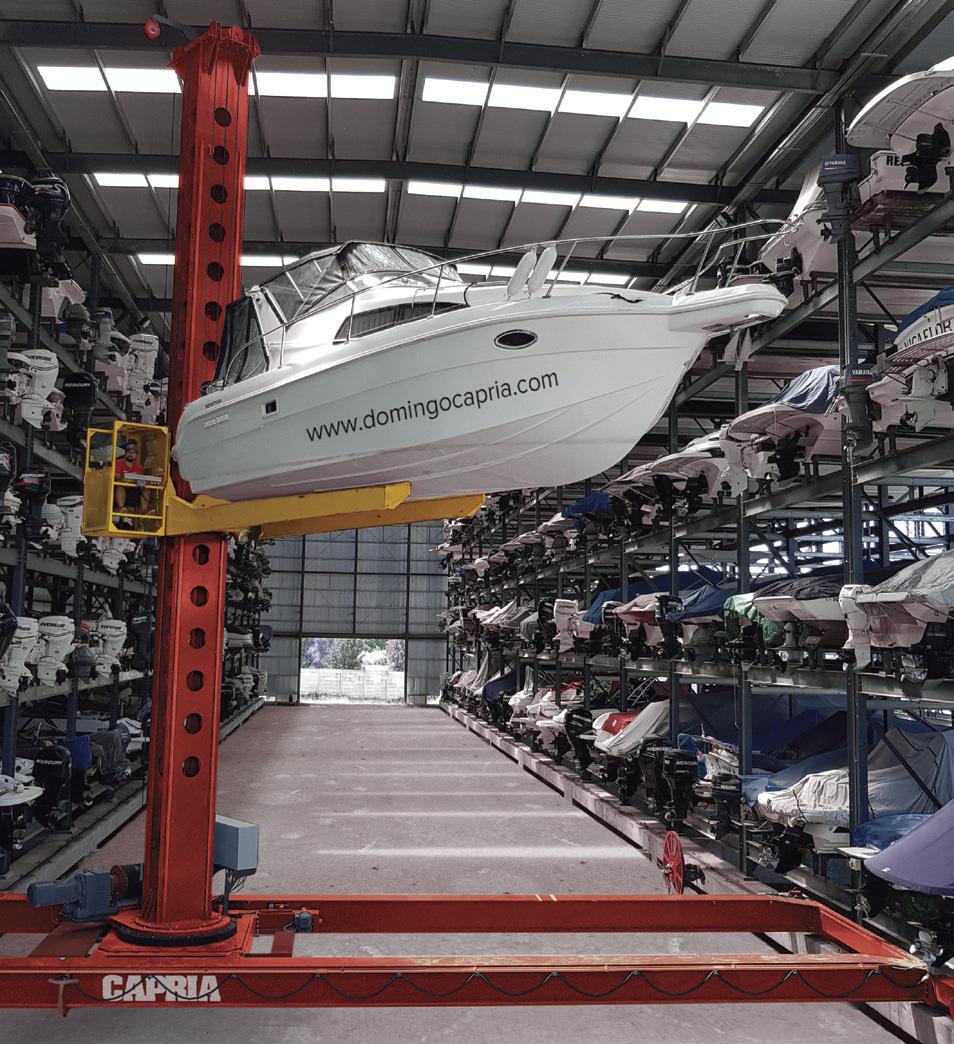




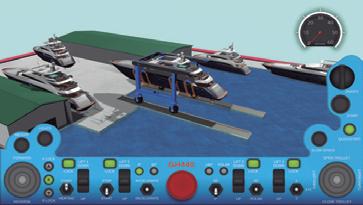


keeping the organisation’s website up-to-date on if, how and what services are still available and when or how boaters can access their boats along with regular email send-outs, are ways to keep everyone informed. Tools like Canva can help you create beautiful content for social media and mass communications (it’s also really fun!). Hosting Zoom happy hours, creating fun competitions for boaters to do from their own boats with leaderboards posted on your website, and low touch, socially distant “adventures” for kids around the marina are all options. Creative marina managers will find ways to leverage social media and other technologies to keep their communities engaged and interacting with each other.
All of these customer service components rely on good communication. Email and phone calls are a regular part of most operations and support most activities. A CRM is a software tool designed to help manage customer relationships. The software acts as a kind of phone book recording customer details, notes and usually allows you to send emails from within the system. Some marina management software systems like Swell have a built in CRM specifically designed to serve boaters offering features like group e-mailing to specific groups of boaters, automated communications to support accounts receivable and booking slips, and even includes text messaging. CRMs generally meld operational information with customer support tools designed to streamline customer service and can assist with social distancing.
The new kid on the block for a lot of organisations will be using text (SMS) messaging to communicate with boaters. The pandemic will probably accelerate the use of texting by businesses. It’s a great way to know when your food order is ready for pick-up or that the pump out has been sanitised and is ready for the next boat. For some of us who didn’t grow up with texting, it can feel like an invasive and cold way to communicate. But, especially for those under 40, texting is a preferred method of communication. There are a number of industry nonspecific group texting services available and we’re increasingly seeing drystack systems use automated texting to
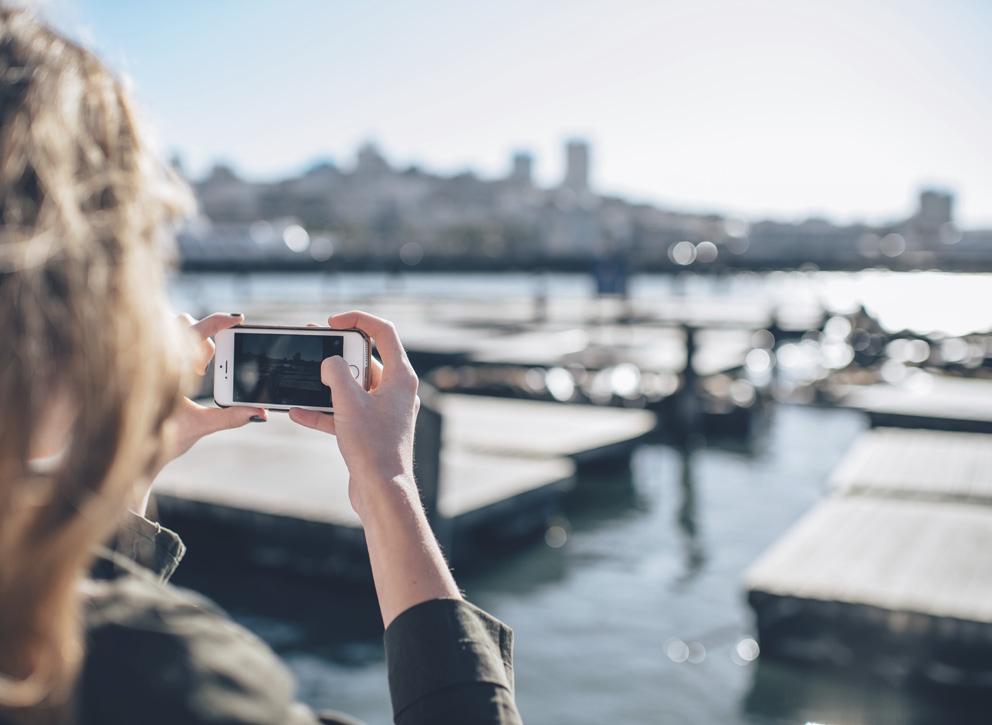
coordinate launch and haul-outs.
Marina hardware has been steadily improving with a focus on customer self-service, monitoring and wireless meter reading. A lot of these improvements can inadvertently help operators in a post-pandemic world. Companies like MarineSync have developed pedestals with various sensors and online meter reading enables services like power and water to be turned on and off remotely. These innovations can limit staff’s need to directly interact with transient boaters. Self-serve fuel pumps have been gaining popularity for a few years. Given expected new regulations and insurance policy clauses, marinas will probably have to disinfect these kinds of self-serve tools on a regular basis, as well as track when the task was completed.
There have also been a lot of improvements with remote marina monitoring through video systems and sensors that allow people to remotely monitor boats. A direct video or image capture feed to the marina’s website can give boaters’ peace of mind and reduce unnecessary trips to the marina if desired.
Deciding on what technologies to use to help your organisation in this new post-pandemic reality is going to depend on your service offering, your staff, new local regulations, any adjustments to your insurance policy and your boaters. The good and bad news is that you have a lot of
options to find just the right fit for your organisation.
Bleier, from MarineSync, thinks the pandemic is going to lead operators towards “new ways of accessing data remotely. New ways of accepting payments. New ways of communicating with clients. New ways of interacting. The new technologies and software we’re leveraging and embracing during the pandemic, will likely be adopted (in some capacity) into business architecture once this all calms down.”
One thing the experts agree on is we will see waves of the coronavirus in the coming months and years. Through all of this, people and organisations are getting a crash course on using technology – from ordering groceries online, to grandparents giving parents a break by distracting the kids on Zoom. Many people, who wouldn’t think of using digital services a few months ago, are coming out of the pandemic with a new comfort level when it comes to using technology. It will be interesting to see if and how the boating industry adapts to meet this new comfort level and boaters’ new expectations around service delivery supported by technology. If we as an industry play it right, boating might even see a resurgence as a safe, socially distant activity.
Iaian Archibald is the co-founder and CEO of Swell Advantage Ltd. Swell builds modern management software for marinas, boat clubs and mixed-use waterfronts. www.swelladvantage.com

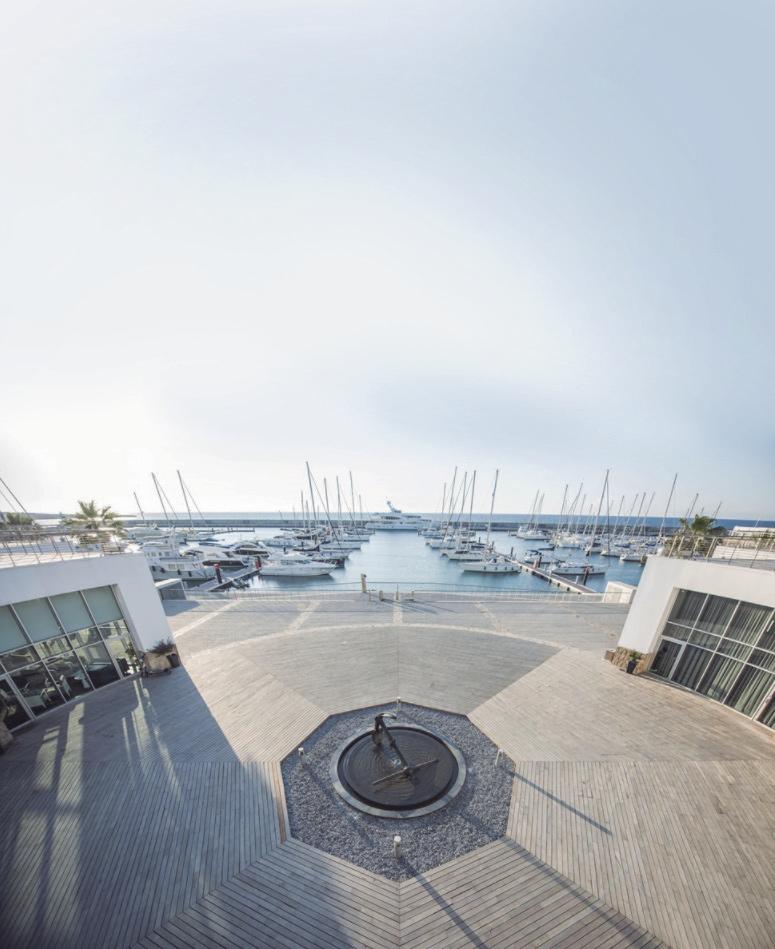

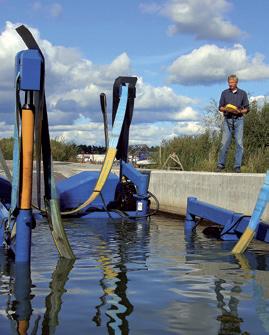
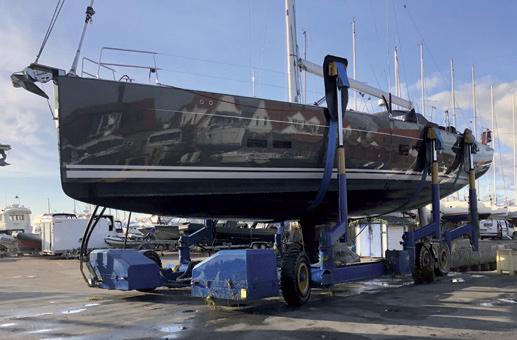



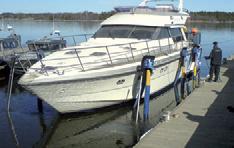

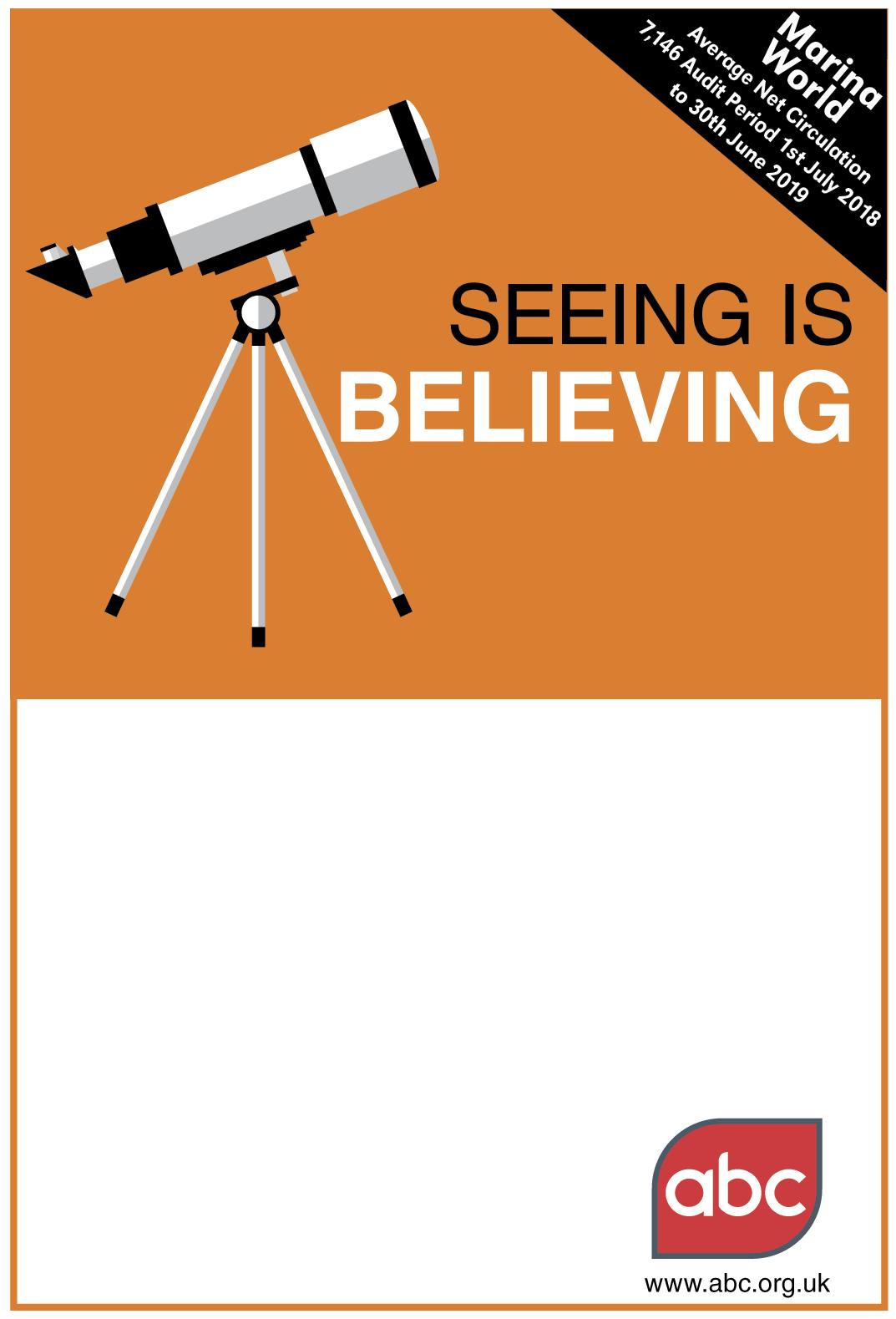
ABC.
To
by Vance Young
Reflecting on my youth, I can still hear the words of my father telling me to always work smarter rather than harder. Being the son of an engineer, it was quite common to hear such catchphrases and tips offering advice as to how to streamline the activities of one’s life. As a young child, of course, this went in one ear and out the other for all that was currently on my mind was the desire to play. As time continued and I focused on my own career path, it became quite clear that all those years of helpful advice really did stick as I focused on a life journey of producing technology to allow people to work smarter rather than harder.
There has always been a natural evolution with the use of technology to enhance daily activities. Think of how far we have come from the creation of the wheel to today’s use of computers and phones to perform our day-to-day tasks. This is particularly relevant with regard to marina operations. With so many matters needing attention within a marina, operators are constantly looking for better ways to manage smarter rather than harder. As difficult as this may be under normal conditions, the year of the COVID19 pandemic has complicated businesses exponentially.
New catchphrases and words such as “social distancing” and “contactless” have been introduced to our daily lives. While the pandemic situation is quite new to our generation and the long-term effects are unknown, one thing is quite clear: working smarter is no longer a luxury and is now a requirement for businesses to prosper.
So, what does this mean to the marina industry? In the most simplistic view, it means that the technological automation process will be accelerated beyond its current natural curve. There has always been a natural evolution of marinas adapting to new technology and processes advancing their “smarter” operations. This evolution has been consistent and steady. Now, with the age of “social distancing” and “contactless”, this trend will drastically accelerate.
One of my core beliefs is that when
difficult situations arise, we should use them as opportunities to excel. This is really just a twist on the old phrase, “when life gives you lemons, make
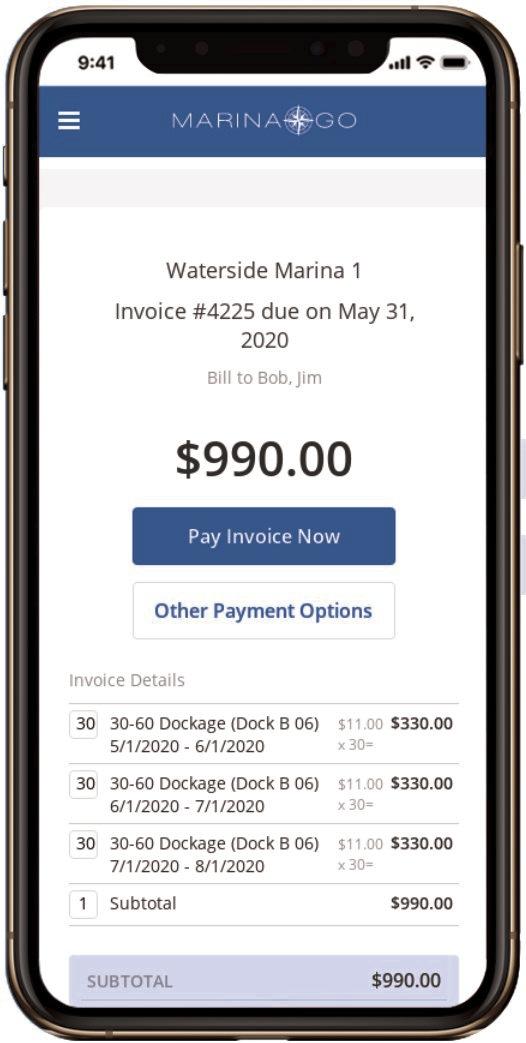
lemonade”. However, it is a very real concept understood and applied by innovators and good leaders. This is the reason why the adaptation of technology and automation will
accelerate the use of technology within marinas and allow operators to work smarter. In a time of difficult situations, such as the COVID-19 pandemic, innovators will stand and shine.
The big question now is what this innovation will look like. For the most part, it should reflect and expand on the innovation already available today. The most obvious is the use of cloud technology. The social distancing concept has caused a record number of people, including marina staff, to work from remote locations. The use of cloud technology simplifies this much more than the use of traditional clientserver or back-office technologies. Cloud systems are designed from the core to allow users to be anywhere at any time.
Other areas of innovation may include the expansion of “contactless” technology. For as long as I can remember, society has been used to receiving bills in the mail which are then paid by a mailed in cheque. This includes a lot of touching, a lot of steps and a considerable amount of time to complete. So, what is the smarter way? Innovation provides a way to send out bills by email or text thus allowing customers to pay instantly using electronic means. Not only does this drastically decrease the time it takes to fulfil a bill payment, but also reduces the physical contact and touching of objects such as envelopes and cheques.
Other areas of innovation allowing marinas to work smarter and honour social distancing will increase the means of self-service activities. There is a lot of potential in this area and it will be interesting to see how the marina self-service ideas roll out. There are many departments within today’s marina - everything from rental space management to the ship store, fuel dock and service yard – that stand to benefit from self-service.
While the level of technology continues to advance and evolve, the underlying reason and purpose remains the same and continues to be passed on from generation to generation. Life continues to present obstacles, and society continues to rise above by working smarter rather than harder.
Vance Young is director of technology at Scribble Software, Inc., based in Mechanicsville, Virginia, USA. www.scribblesoftware.com







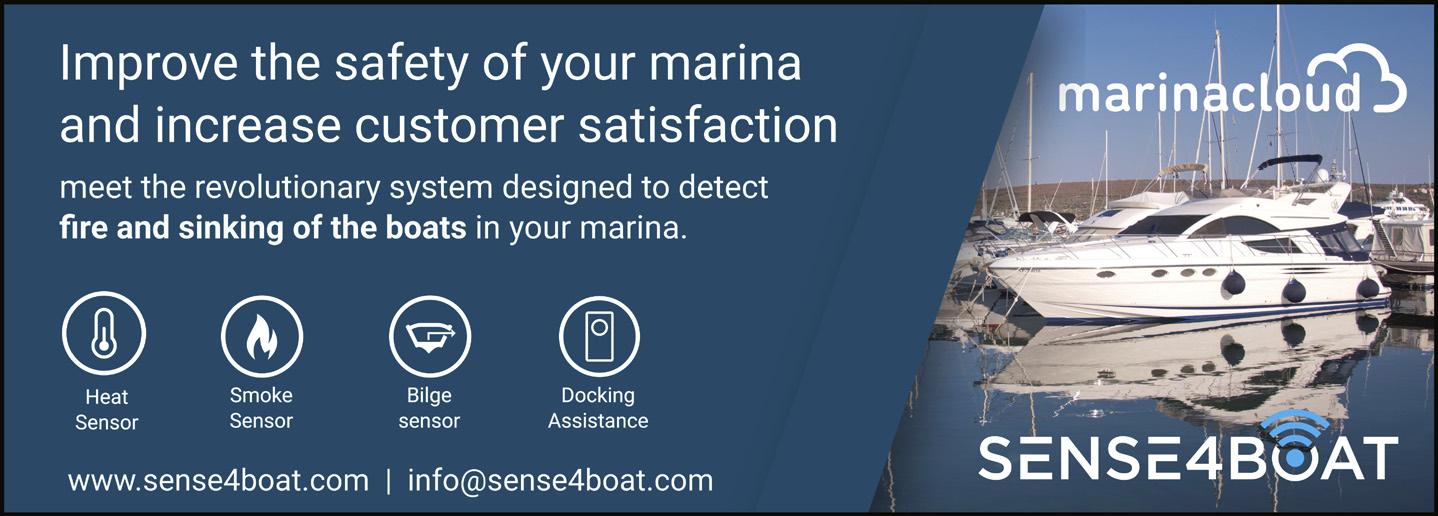

by Chris Thomas
Computer software systems, e.g. marina and boatyard management systems (MMS), like any business asset, need maintenance to deliver optimum functionality. Internal and external change can impact the operation of a business, and these changes should be reflected in your management systems to ensure your business can grow and develop in tune with the needs of the end-user.
What drives a need to change your system?
One important driver of change is managing risks to the business.
Unfortunately, in today’s business environment there is an array of bad actors and criminals with everincreasing skill sets to penetrate your business and systems to obtain data. Couple this with the need to open system access to staff, customers and the public; and with more sensitive information available in your databases - e.g. payments, credit card and personal bank details - regular updates and maintenance are critical. This creates an ever-increasing need to ensure your computer systems are updated with the latest Microsoft system software, security controls and patches. Your MMS vendor must provide new releases to support such updates.
Over time, all software develops to be able to ‘provide more functionality’, requiring more computing power to maintain system performance. Eventually, such upgrades will mean
you need faster computers. This, in turn, will mean updated system software which your existing MMS may not support.
There are many contributing factors that could become reasons for reviewing your current MMS software. One of these is ongoing MMS problems and the continual need for costly support.
Consumer behaviour has changed and, as staff and customers are becoming more familiar with technology, they have higher expectations of business anywhere, ‘do it now’ and ‘do it here’. Your business will need to provide more responsive services to your customers. MMS software vendors should be providing continual updates to meet such changes.
Increased regulatory compliance can require improvements in your MMS system. Recently we have all suffered a massive life and business change with COVID-19 forcing new business practices and new compliance issues. Internet access is becoming more extensive, and more boaties have
access from their boats and are looking for reservation and payment options remotely.
A good MMS system will have the capacity to meet and support changes in your business.
But perhaps the most important factor for change is complacency: ‘if it ain’t broke, don’t fix it’. Complacency can result in inefficient operations that could be better served by a better MMS solution and vendor. Good practice is to be constantly looking for changes to improve operations and customer service, working with your MMS vendor on ideas and reviewing new features in the vendor release to see if they can help improve your business.
Regular review and understanding of the full features and capabilities of your MMS and comparing it to a quality MMS solution is good business practice. Examples of a quality MMS solution are:
• Removing the need for manual pricing and calculations by staff
• Ability to audit and log vessel arrivals (or parts used in the boatyard etc.) and have complete confidence that all revenue is captured and passed through to your Profit & Loss and Balance Sheet
Could you be getting better information, increased staff productivity and enhanced customer services with a different MMS system vendor?
Chris Thomas is general manager of Pacsoft International. Pacsoft has been providing innovative marina-specific software solutions for over 22 years www.pacsoftmms.com.
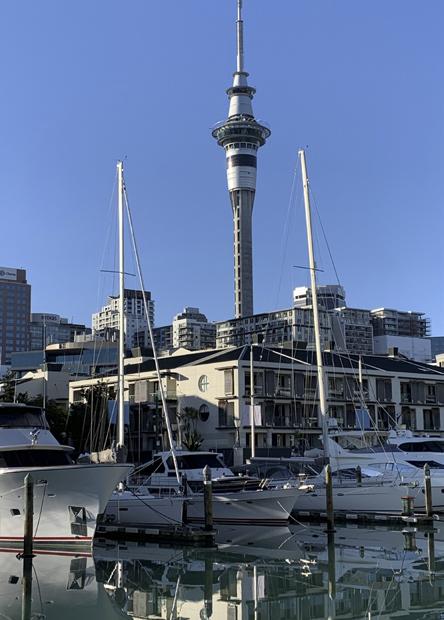
Marina Master’s intelligent systems, designed specifically for marinas, are changing the way they are operated. The company’s cloud based platforms and agile development processes are helping marinas to stay ahead of the game.
The ongoing COVID-19 pandemic has forced many marina operators to manage properties from home. Luckily, some countries and regions are already recovering as this issue of Marina World is being finalised. Marinas are already welcoming new and existing boaters while implementing all necessary social distancing precautions. Necessary changes have had a positive effect as well, as businesses have honed their operations by making use of advanced digital solutions.
all
Marina owners and managers take advantage of having complete control and management capabilities in their home office. The personalised Marina Master interface can be adapted and
plug in to shore power on their own in a Marina Master smart marina.
As these time-consuming tasks are now automated and controlled remotely, marina staff can finally tend to their main objective: taking care of customers by supplying customised services and products. This is of the utmost importance in order to gain loyal and valuable customers.

Boaters around the world have embraced a new reality by utilising mobile apps. They are eager to use personalised and automated solutions that enable them to monitor, dock on their own and review their statements on the go. Marinas are also aware that swift and regular communication between staff and customers significantly improves long term customer relationships.
Marina Master systems enable owners, managers and staff members to manage a marina from home. Boaters can use myMarina mobile app to communicate with the marina, book a berth, pay invoices and review statements anywhere and anytime. “Visiting a marina shouldn’t be just an urgent duty to find a berth, fill up fuel and water tanks, but an unforgettable holiday experience,” says Marina Master CEO Vesna Pavlovic.
customised for every marina, shipyard, boatyard and dry storage facility, enabling the user to inspect marina property in real time, manage berth occupancy, reservations, invoicing and agreements on a mobile app. By automating and streamlining the processes marinas increase productivity and income.
Marina staff benefit from having a complete real time overview of customer data, reservations, notes, alarms and task management. All communication via app, email or text message is done on a single platform and is saved on a customer’s CRM tab. Enquiries, quotes, invoicing and contract signature are processed swiftly with a few taps on a smart device. Marina surveillance and dock walks are done automatically – either by CCTV or by using dock sensors. Customers can check in and
As a result, boaters have improved boating experience through the peace of mind of knowing that their expectations will be met. They are free and flexible in ordering services from the comfort of their boat or home.
It’s all ‘app-ening’ in
Soldiers Point Marina in New South Wales was the first marina in Australia to implement Marina Master and take advantage of remote facility management. This has paid dividends in the current climate. “The Marina Master solution enabled our key office staff to work from home, keeping them safe during this difficult time while still ensuring the marina is running as normal. The software not only improves the day to day operations but is saving us thousands of dollars a year in operational costs,” says Soldiers Point marina manager Darrell Barnett CMM. Communicating and managing marina services remotely not only helps the owners but also the marina customers.
“The Marina Master platform has driven the professional perception our customers have of our business through the innovative use of technology. This has been absolutely central to our ability to operate the marina remotely and without interruption during the current COVID-19 pandemic. Everything from responding to berth enquiries to billing runs and back-end financial reporting we’ve been able to facilitate from
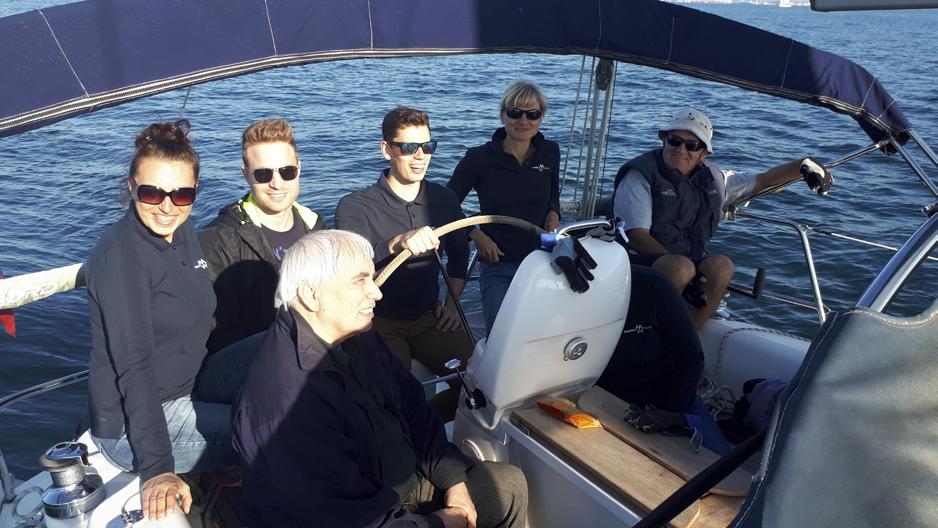
home which has been terrific for the health and freedom of our staff whilst staying engaged with our existing and prospective customers,” says Scott Marshall, general manager, Breakwater Marina, Queensland.
Moments of truth on a typical day in most marinas managed remotely start when new or existing customers visit. Marina staff essentially respond a few days before the customer is expected to arrive, adopting all necessary new social distancing measures. An auto email is sent to the customer with a myMarina registration link. The customer can view the berth on the marina map and once docked, just clicks on the check-in button. A meter is automatically assigned to the berth and notification is sent to marina staff to advise that the customer has docked and checked-in. This allows staff to click on the berth (web or app) to view a live feed of the camera that covers the specific berth to check that the customer has docked in the correct place. Staff then call the customer to welcome him and advise on where he can pick up his preprogrammed access fob. This can be located in a secure lock box near the
gate of the jetty or potentially on the pedestal next to the berth. The customer can always check information about available services in the myMarina app. Delivery orders for restaurant or chandlery items can be placed and automatically invoiced to account.
World class service provider Gold Coast City Marina & Shipyard (GCCM) has also automated the majority of its manual operational processes via Marina Master. “The Marina Master team know their business well which helps with timely updates and system developments that we can efficiently roll out to benefit the customer experience,” says general manager Luke McCaul.
Marina Master has also made a breakthrough on the other side of the Pacific Ocean – in North America.
Ocean Havens, a group of marinas in the New England area, has taken charge of implementing the latest state of the art modules to manage marinas remotely. The marina group is forwardthinking and its main objective was to automate reservations management, eliminate dependence upon individuals and to provide all functionalities on mobile devices. “We wanted that the
Out on the water: the Marina Master team has 28 years of experience in developing marina management software and shares a love of the open sea.
system could be as “future proof” and flexible as possible and the Marina Master program has exceeded in all our expectations,” says regional manager Kevin Lussier CMM.
It’s also all ‘app-ening’ in Europe where Marina Master is helping to boost marina management intelligent solutions at D-Marin Portonovi Marina, Montenegro. “We implemented Marina Master [just a short] while ago but already see its huge advantages. The reliability and Smart specifications are making remote controlling very simple. Everything is just a click away and very easy to access. This software gives us an opportunity to interact with customers through CRM, and to refine internal communications,’’ says manager Nikola Banovic, CMM.
Consulting approach
Marina Master’s agile support and development team is guided by professionalism and expert knowledge. Benefiting from 28 years of experience in providing advanced marina management software solutions worldwide, the team sees consulting as an important part of implementation and support. “We always listen to each customer’s need and utilise requests to create a custom-tailored solution,” Pavlovic confirms. Consulting on best practices in marinas worldwide is also undertaken via the Marina Master Academy, which is currently conducting a free webinar series on ‘How to Manage a Marina from Home’.
“Every experience with our customer is a goldmine for our strategy,” says Marina Master president and owner, Tone Britovsek.
www.marina-master.com
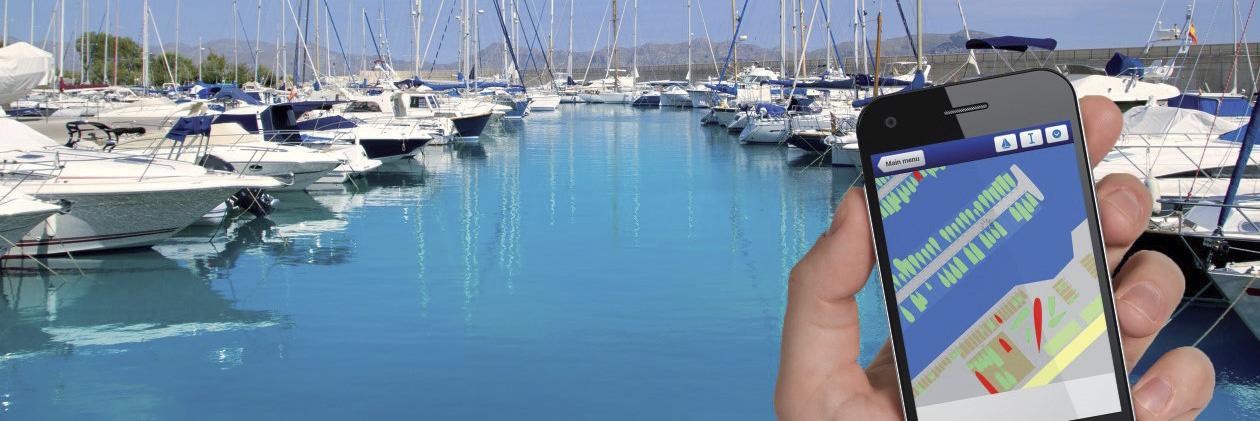
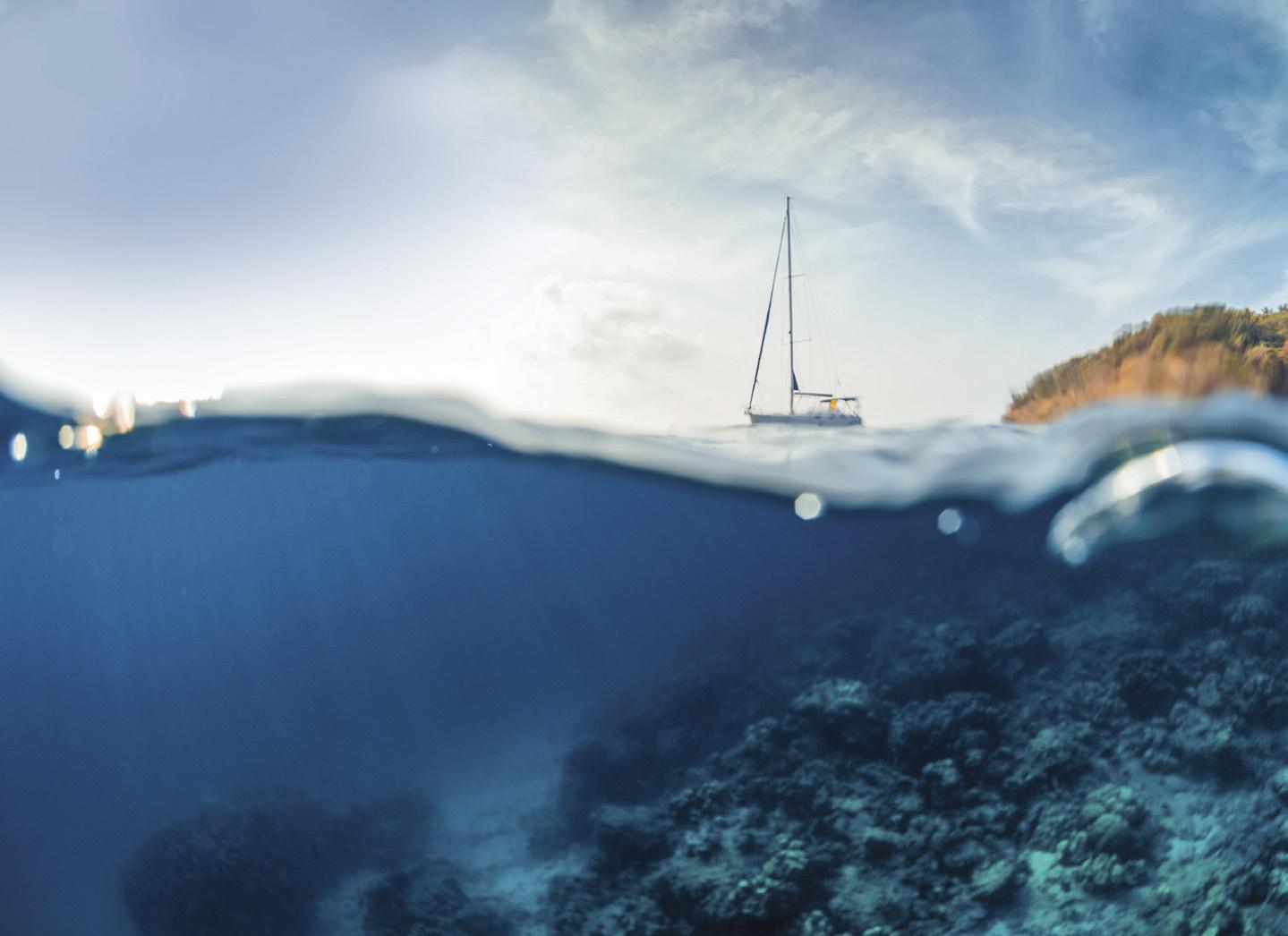

by Kresimir Zic
Most safety-related incidents regarding boats in marinas can be prevented (except for natural disasters of course). These incidents can result from simple and well-understood physical phenomena such as galvanic currents, corrosion, fatigue of materials and many others, which in a highly complex structure like a modern boat may lead to a catastrophic event if not handled properly. In some cases, those incidents may also come from a deliberate human act like vandalism and theft. Although the liability of the marina is usually very well defined, we all know how difficult it is to handle an angry customer who expects to find his boat in the same state in which it was left.
In this article we will present a few different techniques which have proven successful in improving boat safety in a marina.
Daily dock walk: most marinas perform a periodic check of the berths and boats in the marina. With all the technology available today, our approach was to develop a mobile application to capture all the information about the boats during these dock walks. Whenever anything
relevant is observed, the dockhand logs it in the mobile app using images and a description of the event. After the information has been verified by the dockmaster, the customer is immediately notified via email, or even better via the mobile app for the boat owners, of course with attached images and a detailed description of the event.
Smart boat: whereas the daily dock walk gives us valuable information from the outside of the boat, the most important safety threats come from inside the boat. It might be a corroded valve or damaged seal; the bilge might be full of stale water and mould for months before the owner comes. Or even worse; the batteries can overheat with every charging, which will eventually lead to a fire in the marina. All those incidents can be easily prevented using the smart Sense4Boat Internetof-Things sensors. The smart Sense4Boat sensors detect
the most common safety threats in the boat such as water intrusion, fire and damaged batteries. All sensors are directly connected to the marina, so whenever an incident occurs, the marina and the owner are immediately notified via voice call, SMS, email and mobile app. Each sensor is powered by an internal battery and is completely autonomous; it directly connects to the Internet without any central unit on the boat. The legal framework is well defined so that using the system does not affect the marina liability in any way.
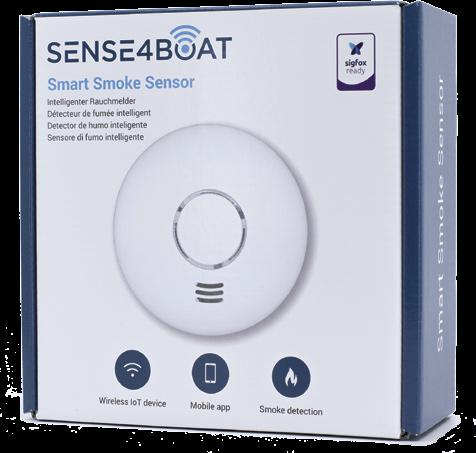
Advanced video surveillance with image processing and recognition is a technology with a lot of potential in the marina industry. Traditional video surveillance systems rely on the human eye and deliver very limited results. Nowadays with the development of artificial intelligence and machine learning, computers are able to interpret the information from the provided context. Having intelligent cameras able to detect safety threats while simultaneously streaming video content to the satisfied boat owners will become an essential component of the marina service.
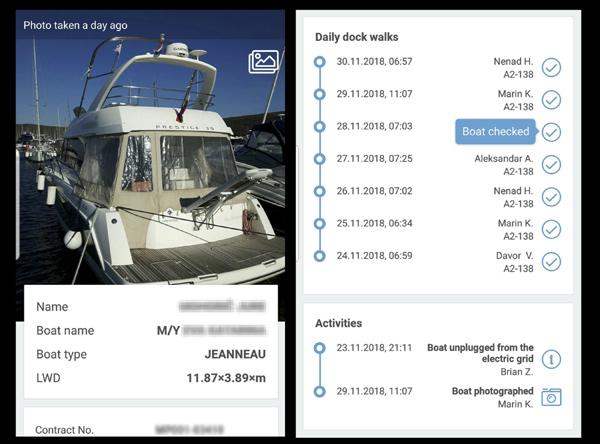
The marina industry is predominantly a very competitive market and it has become very difficult to retain existing customers and attract new ones. Although individual marinas will always have different business strategies, focusing on the safety of the boat is a proven winning strategy for many marinas. We have been successfully applying this concept in Marina Punat in Croatia and in many other marinas over the past few years with great results.
Kresimir Zic helped develop the Marina Cloud software solution; a management system designed by marina managers. www.marinacloud.net

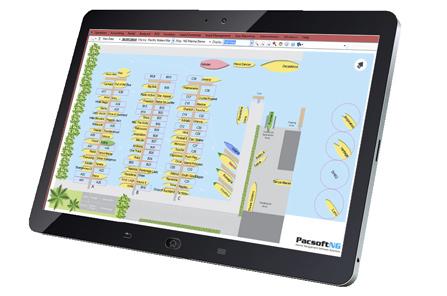
www.pacsoftmms.com





























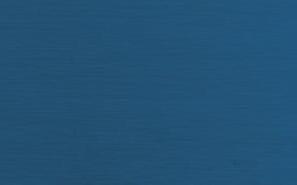


by Nick Gill
To be successful, marina management software must deliver for both the marina and its customers. Marina professionals know what they need to run operations - berth allocation and occupancy, reservations, asset management, maintenance scheduling, invoicing and payment, plus accessible reporting. Control over processes and access to information that delivers smooth and stress-free site management.
What do customers want?
It is clear that while boat owners want what they’ve always wanted - more time afloat - they’re also demanding transparency, flexibility and control. They’re used to internet shopping and managing their financial transactions online and expect the same seamless service from their marina.
This is good news. Customer portals and other selfservice access points give customers the flexibility they desire without an impact on staffing. Mike Braidley, director of Castle Marinas says: “Having a portal means those customers who don’t want to talk to us don’t need to, freeing us to spend more time with the customers who do.”
online access to view and drill down into transactions provides the transparency they desire and gives control (even if illusory) over how and when to pay.
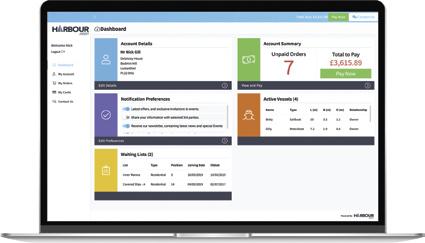
Cut barriers to action with a ‘pay now’ button with a link through to a secure payment gateway and vaulted card facility. The experience at South West Lakes Trust bears this out: “With the portal, more customers are naturally switching to payment in full,” comments director James Platts. “This means we get income earlier in the year and fewer contract drop-outs. It is easier to keep on top of potential debtors.”
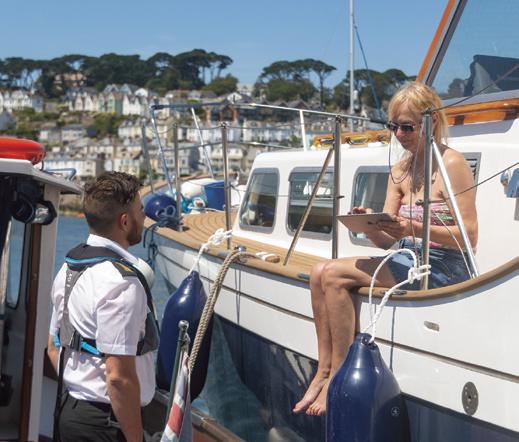
picture of the customer relationship. What is the future for marina IT?
Recent events have changed marina operations, whether for a limited period of home working or an extended shutdown. These experiences will influence planning, investment and staffing decisions.
Reduce the churn Research shows that over 80% of customers expect a reply to an email within an hour, and a third expect an answer in 15 minutes. These are tall asks for most busy marina offices, so educating customers to self-serve online has to be a sensible move, indeed vital with current and future COVID-19 restrictions on marina operations and staffing.
A portal that gives customers direct access to their account information, such as financial transactions, contact details, marketing choices and reservations removes many of the dayto-day phone calls and emails.
Technology is not a barrier for most customers. Marinas using Harbour Assist transacted a third more online payments in the first three months of 2020 compared to 2019. In April 2020 the value jumped by 14% compared to the previous year.
A lot of customer contact revolves around money – querying invoices and chasing payment. Giving customers
Reduce the churn of daily activity with self-service, and marinas can spend more time building quality relationships with customers. Who wants to chase debt when you can be having conversations that build deeper relationships with customers?
Integrated CRM enables managers to send personalised emails, HTML newsletters, letters or SMS to targeted groups of customers. “During the coronavirus shut down, it’s been vital to communicate regularly with customers,” says Alison Wakelin at Emsworth Yacht Harbour. “Using smart lists to select customers in the boatyard or marina and to separate contracted and casual customers for tailored messages is invaluable.”
A Microsoft survey showed that over three-quarters of people expect all customer-facing staff to know their service history, making complete customer records a priority. Alongside free-text notes fields and storing outgoing correspondence, a quality marina management system will track email ‘opens’ and automatically file email responses to provide a complete
Many operators are considering how to reduce face-to-face interactions with customers and suppliers, and even between team members, how to effectively administer the marina remotely and to deploy staff from home.
Marinas are complex environments and will always need hands-on intervention to keep them safe and enjoyable places to work and visit. However, technology can play a more active part, for example in remote monitoring and control of electricity and water supply. Meter readings automatically fed into the marina management system to automate billing, or pre-pay systems controlled by the boat owner. Smart guardinage systems with onboard sensors sending push notifications to the marina office and boat owner if battery levels drop, bilge pumps activate, or cabin temperatures increase.
This is about allowing customers into part of the marina management system. To blur the line between the customer and the marina by using the technology to deliver the transparency, flexibility and control that both parties need.
Nick Gill is the co-founder and commercial director of marina software company Harbour Assist. www.harbourassist.com





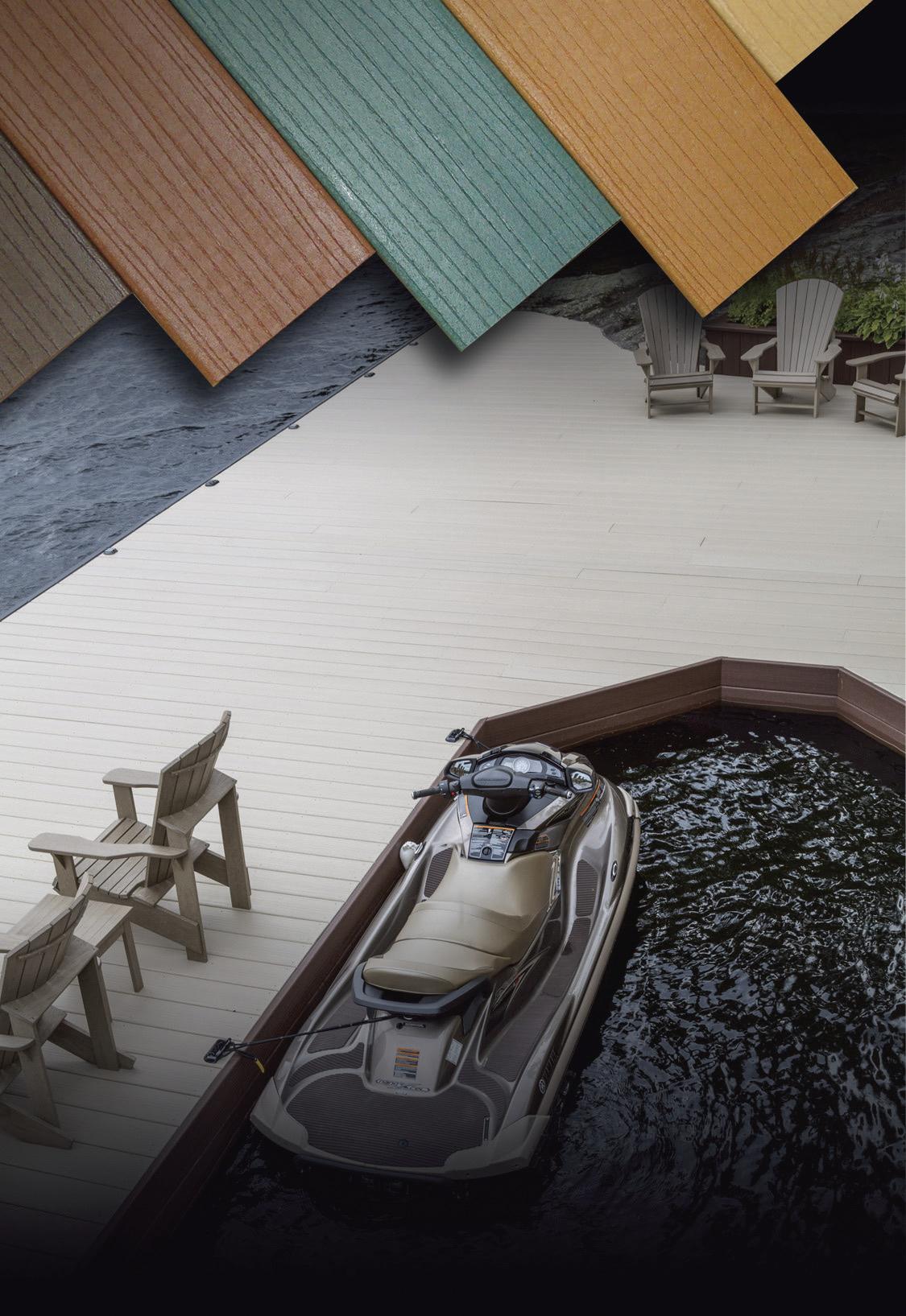

by Idan Cohen
Let’s start with a quick question: is COVID-19 the catalyst in driving the biggest digital transformation in marine history?
Most marinas are now facing the same needs and challenges and are asking themselves the tough questions: how do we continue to operate, provide exceptional customer experience, generate revenue and enable our marina to operate during and after the current global crisis?
The new environment which materialised out of the COVID-19 pandemic generates a new set of needs. As of the beginning of May 2020, recreational boating activity is still kept on suspension, being perceived by the majority of the regulating institutions as non-essential travel. As such, it is not expected to be among the first sectors to be restored to full operational capacity. Moreover, the new reality creates new challenges for the gates of entry to the countries. As one of the measures to contain the spread of the pandemic is to monitor the entrances to the country and trace the route of potential infectors, the need that may arise in reopening the borders will be thorough documentation of the travellers’ history, health conditions and plans at the destination.
The technology and solutions that seemed like a futuristic endeavour that would take years to design and implement are now essential to cope with the existing crisis and with the day after.
International travel will involve extensive reporting and testing protocols, requiring both the points of
numerous standards of information sharing, visitor monitoring, data collection and coordination with multiple fellow destinations of origin. If the industry aspires to be among the sectors that are trusted to operate, it must prove that it possesses the capacity to monitor itself. As governments are not rushing to release sectors that are not seen as essential, in the fear of a second wave of outbreak, the recreational boating industry will have to prove that the balance between the health concerns and the economic implications of the lockdown will be tipped in the right direction through risk mitigation.
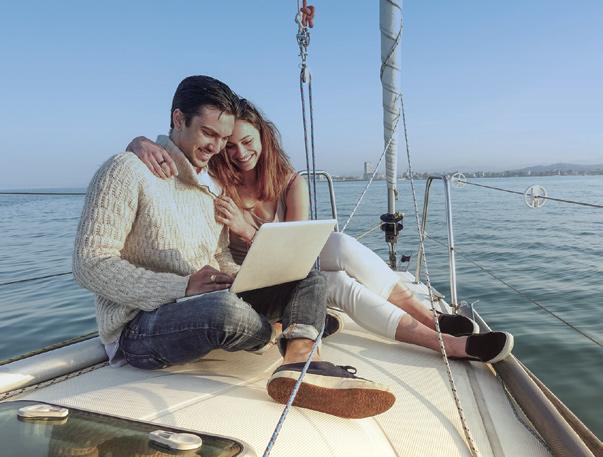
Marinas that are currently servicing residents and visitors in lock-down are faced with a new reality. The communication and interaction with them have changed significantly, as have the number of necessary facilities and essential services.
As Martinho Fortunato, CEO of Marlagos Marina and vice chairman of the Portuguese Marina Association, puts it, “We have to keep the operations going. We have close to 90% occupancy right now and have changed the way we are working. The relationship between the marina, the clients and how the information is spread is changing. We need to inform residents with updates every day. In the future, we will have platforms where at all times residents will have all the information. We are working to get there.”
origin and of destination to communicate and coordinate information with each other. Passengers may even need to go through instant testing procedures at the gateways, just like the events of 9/11 created entire new protocols for international travel security. National governments from their side would like to know, above any doubt, that anyone they are letting in will not provoke another infection outbreak which, as was witnessed, can send entire cities into lockdowns. Thus, they will impose strict regulations and inspections on any traffic entering their borders, by all means - air, land and sea. Any gateway which does not comply with the strict requirements may not be approved for operation or reopening. The pandemic forces every country to close or restrict access to its borders and define regulations that reflect the unique habits, limitations and cultures of its citizens.
Marinas that wish to operate will be required to carefully monitor the recreational boating traffic that passes through and will have to comply with
The outdated practices in the recreational boating sector, along with the expanding needs discussed here, create both a challenge and an opportunity. The wide array of estimated requirements can serve as a crucial catalyzer for the entire industry to evolve and go through longoverdue processes. Recently the concern of public health in many places is starting to give way to the concern for the economic future of the countries. Governments start to feel the pain of the continuous lockdown and the paralysis of economies. In many countries, the curve of the pandemic is flattening and governments must start concentrating on ways to rescue collapsing sectors while also going long distances to survive a sharp recession.
This current state of emergency can lead to necessary reforms, killing two birds with one stone. The modernisation process will both address government limitations on international travel and optimise the way boating and marinas are managed and supervised.
When the world is weathering a significant economic blow and facing a severe recession, optimisation of industries and resources is not only recommended, it is essential. This can be done only through innovation, collaboration and communication. Our industry must work together to return to operate quickly in a safe, healthy, economical and secure way.
Let’s start now.
Idan Cohen is chairman of the Marine Innovation Association, a full member at ICOMIA, and CEO of Pick a Pier, an innovative technology company that is creating a global standard for service-oriented and sustainable recreational maritime travel. www.pickapier.com
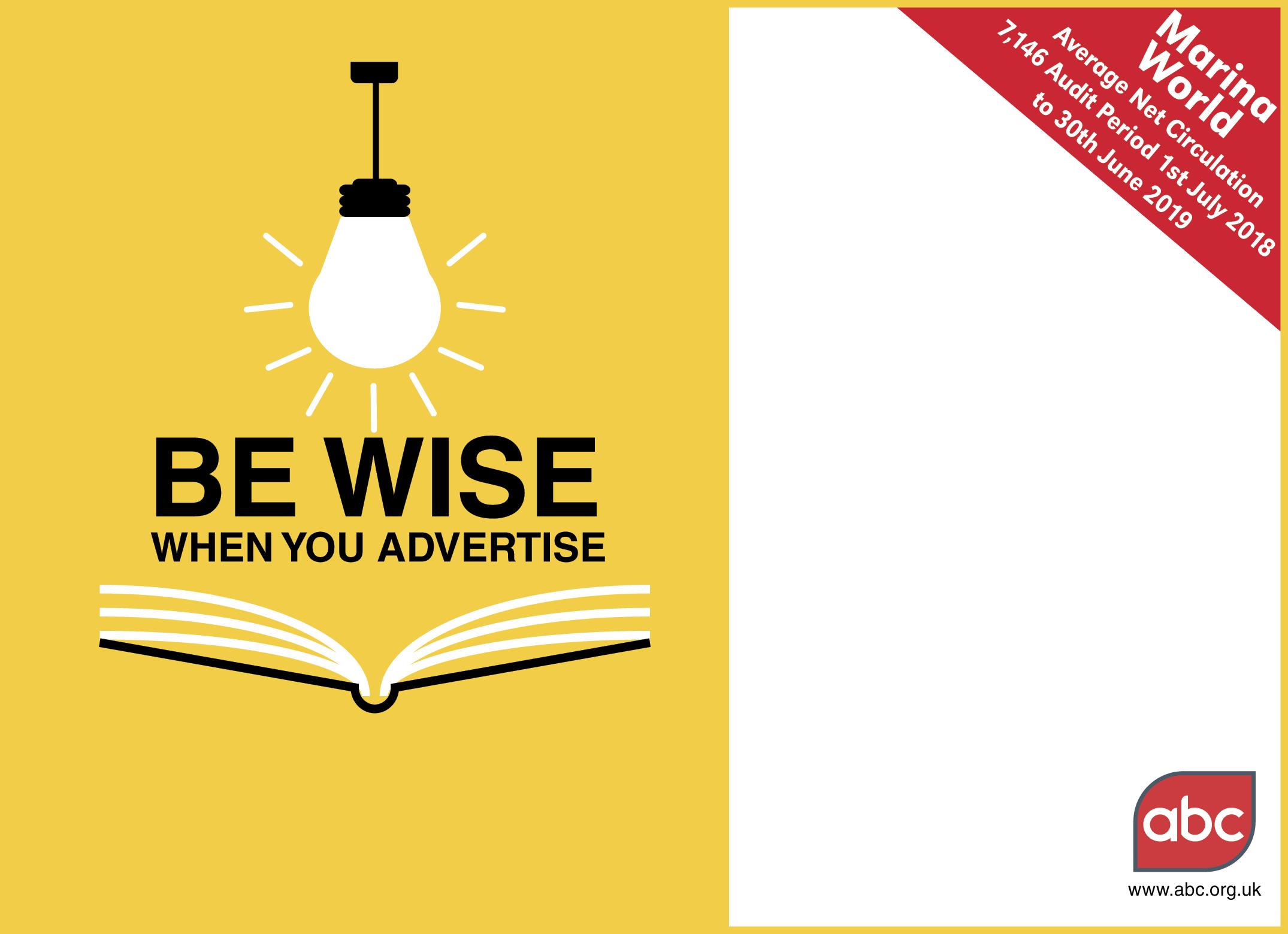






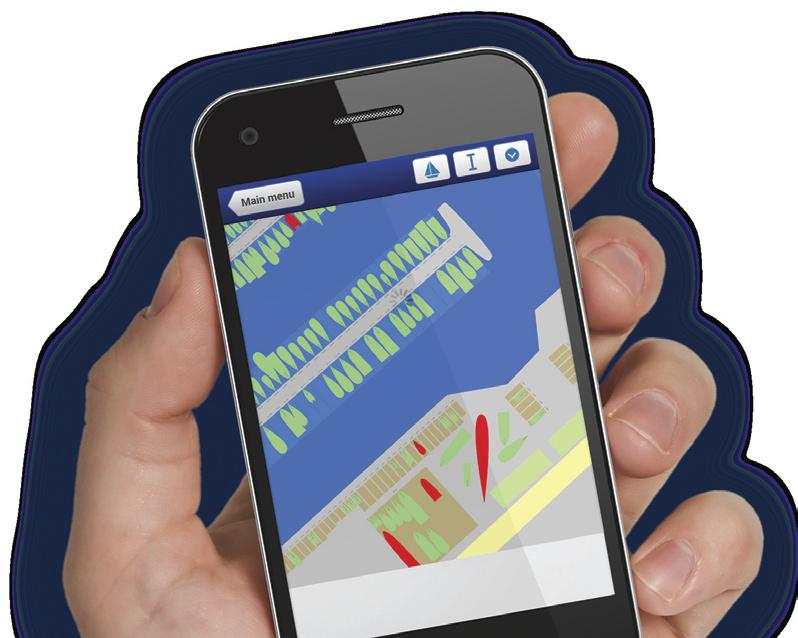
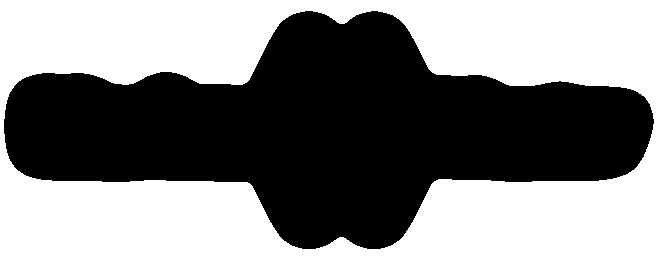




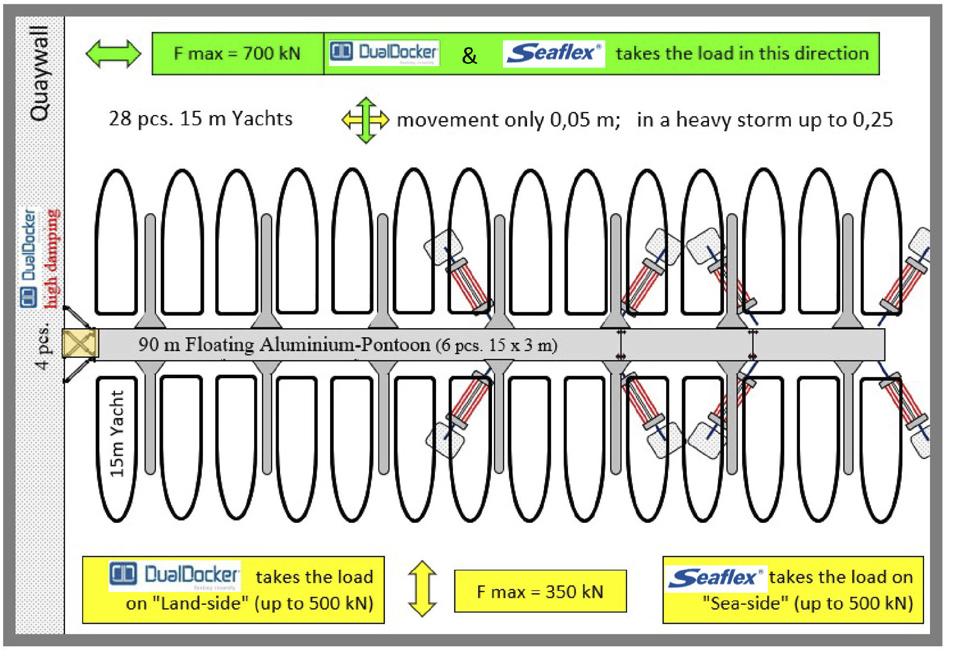
The DualDocker mooring system was developed to make mooring up in a marina berth an easier and infinitely more stable experience for boat owners who felt this part of boating to be particularly challenging. The concept has since been further engineered as a heavy duty mooring system capable of keeping floating homes, floating pontoons and any other water-based structures secure.
In principle, DualDocker is an alternative solution to traditional methods such as chains and piles. Its main strength is its ability to absorb the forces that impact on a floating pontoon - unlike a pile, for example, which has virtually no damping capacity. DualDocker completely avoids the build up of kinetic energy caused by wind, waves or current, and any wake energy from the docking of ships and yachts. It is a highly damped mooring solution without play.
Manufactured in Austria using top quality materials and available to ship worldwide, the system is extremely environmentally friendly as nothing is secured to the seabed or drags across the seafloor.
New heavy-duty systems can be used to secure aluminium, steel and concrete pontoons and gangways in a manner that is safe, has no visual impact and requires very little
maintenance. It can be used to solve problems in challenging shaped sites or where sea levels significantly vary.
Arrangements ideal for floating pontoons include the TriDocker and the V-Setup. TriDocker incorporates a
docking arm at each end of the pontoon and one in the centre along either the length of a pier (for alongside mooring) or at the quay wall end of a stern-to mooring.
The V-Setup replaces each of the arms with a V-shaped docking arm. This arrangement can also be installed on piles or on concrete mounts on the quay wall.
In tandem with Swedish company Seaflex, DualDocker has also developed the 90m (295ft) floating pontoon concept (left). This moors a 90m aluminium pontoon comprising six 15 x 3m (49 x 10ft) sections. The result accommodates up to 30 boats of up to 15m (49ft) in length and is moored by DualDocker at ‘landside’ and Seaflex ‘seaside’. The system absorbs up to 500kN, and pontoon movement is just 0.05m (2in) in normal conditions and up to 0.25m (10in) in a heavy storm.
Pontoon mooring installations to date range from heavy 5,000 ton floating structures in the UAE and a floating pier for heavy tug boats in Tangier, Morocco (12 DualDocker arms) to medium and smaller sized floating pontoons in marinas around the world, and numerous recreational pontoons and large, heavy floating homes worldwide.
In addition to the significant benefits of high and instant damping capacity and the lack of mechanical parts requiring maintenance (no hydraulics, oil, gas or pneumatics), DualDocker is available in a choice of materials that offer great durability. The anodised aluminium alloy version is fully resistant to salt water and UV rays.
www.dualdocker.com
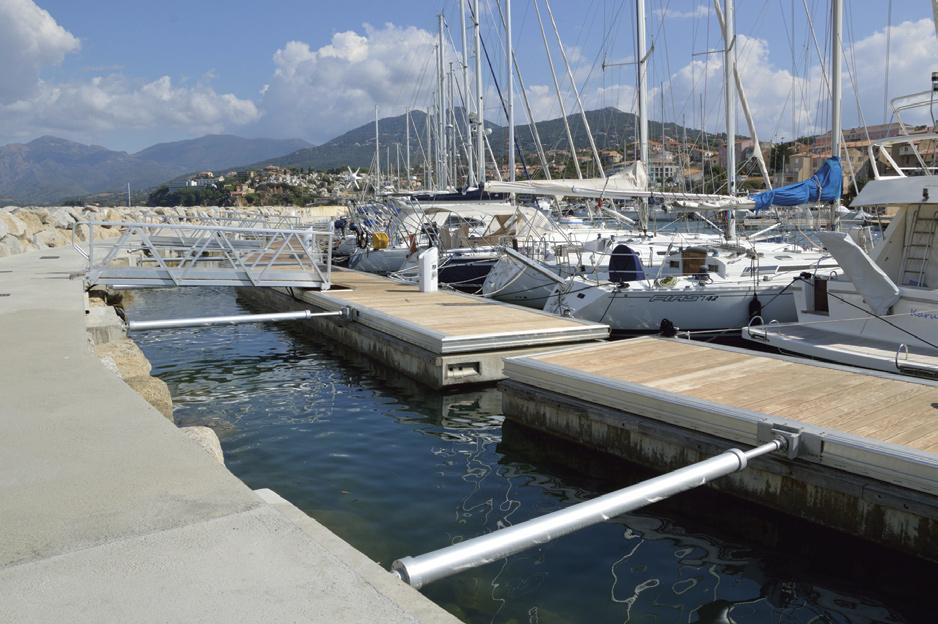
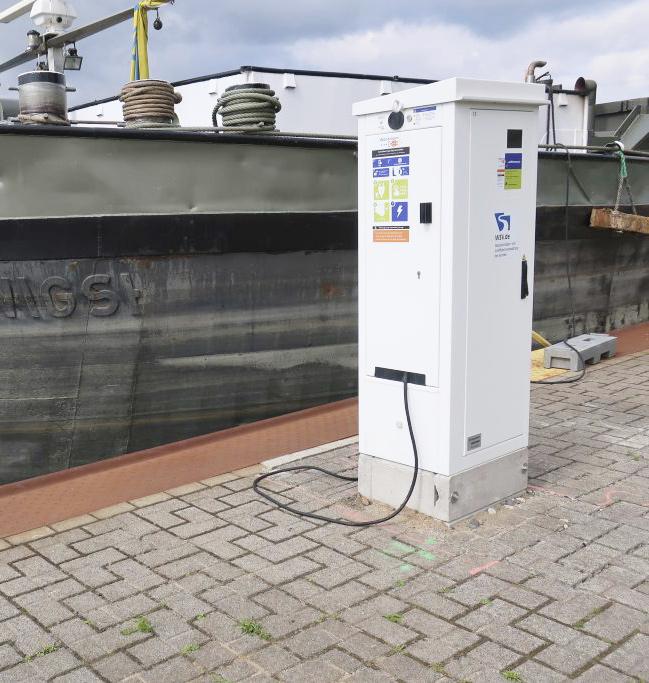
Dutch company Seijsener has become the first manufacturing company in Europe to be granted a type examination certificate by the German National Metrology Institute (PTB) for its shore power cabinets.
This means that any user plugging in to obtain power will benefit from a fair, transparent and traceable transaction.
“We are quite pleased and very proud to be Eichrecht certified,” says Seijsener director Bas Durieux. “This is an important step to further strengthen our position in the German market for shore power facilities.”
“Currently, following an awarded tender, the Seijsener-Involtum consortium is installing more than 120 shore power facilities along the canals and rivers in North Rhine Westphalia. The cabinets are the first in Europe to comply with German calibration law. This underlines our dedication and drive to serve markets across Europe while respecting local regulations,” he continues.
Many paddlers find the act of getting into and out of a kayak nerve-racking, especially with onlookers. Even the most stable solo or tandem boat will wobble and slip.
Golden Boat Lifts has taken this concern into account with a completely redesigned and innovative kayak launch, which can safely and easily launch and recover the craft in under 90 seconds, even from high docks and seawalls and areas with tidal fluctuation. Using the Golden Kayak Launch couldn’t be easier. The user slides the kayak or canoe onto the twin bunks and lowers it into the water using the crank. Paddlers descend the stair tread ladder and enter the boat, using the grab rail on the opposite side to steady themselves. The launch’s stable platform minimises the awkward movement common
with boarding. Boaters then slide their vessels out into the open water. Upon return, the steps are simply reversed.
In a change from previous models, the new launch is now made from fullywelded square marine grade aluminium tubing and receiver pockets for maximum rigidity and strength. Nylatron rollers and a stainless steel brake winch and cable have been added to ensure moving parts will operate smoothly for years to come with very little maintenance.
Craft up to 249lb (113kg) can be supported, and two models are offered with fiveand seven-step ladders.
www.goldenboatlifts.com
Seijsener will now be able to supply shore power cabinets throughout Europe that will give users complete confidence that they are paying the correct amount for their energy and, if desired, the technology can be applied to car charging stations etc.
www.seijsener.nl
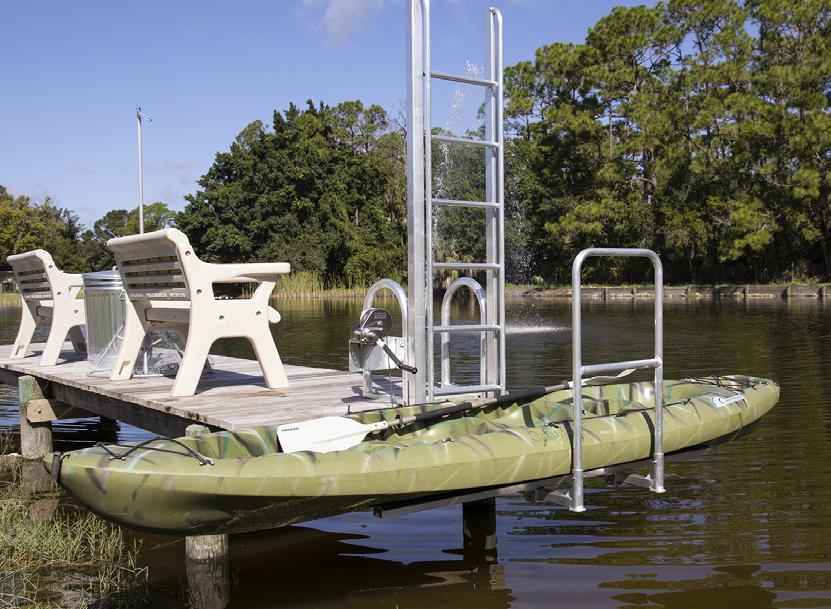
The Marina Industries Association (MIA) has ramped up its online learning for the marina industries amid the COVID-19 pandemic. The MIA’s online offering has increased from two to six types of online programmes and the association expects to deliver a minimum of 17 online educational activities.
MIA president Andrew Chapman said momentum for online learning was already growing before the COVID-19 crisis. “Twelve months ago we launched the Club Marina Extreme Weather Preparedness course online. While initial take-up was slow, there has been a 60% increase in course enrolments from nine countries this year.”
In July, the MIA will conduct its first ever online Intermediate Marina Management (IMM) course. Traditionally face-to-face and conducted over 4.5 days, the online IMM will take place over a period of four weeks.
MIA’s industry education officer, Vijaya Selvaraj, said studying online

has practical advantages not just during COVID-19. “Shorter, more intensive and self-directed online learning gives our members greater flexibility to choose when, where and how they study. Members can participate from anywhere in the world and experts can be brought in via recorded interviews or live webinars.”

“MIA’s Extreme Weather Course is self-paced and the materials can be accessed 24 hours a day, seven days a week – and participants are given 30 days to complete the course,” she added. “We are also rolling out a course focused on marina boat fire prevention, which will be a blended online course.”



MIA CEO, Colin Bransgrove, said: “Face to face learning will always be a core part of MIA’s education offering in normal times. The use of online learning, however, is suited to the MIA membership that is scattered across many countries from the Middle East to New Zealand. With 300 plus members across such a vast area of the globe, it is inevitable online learning will become an increasingly important component of MIA activity to support the sustainable growth of the marina industries.”
www.marinas.net.au/training/coursetimetable


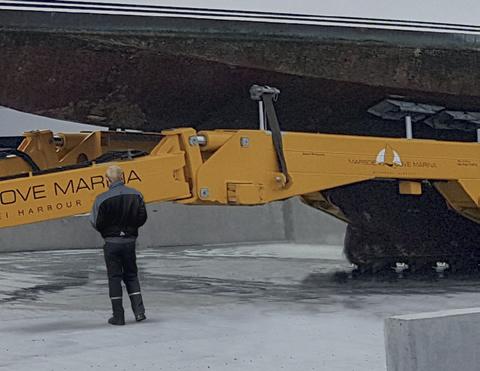
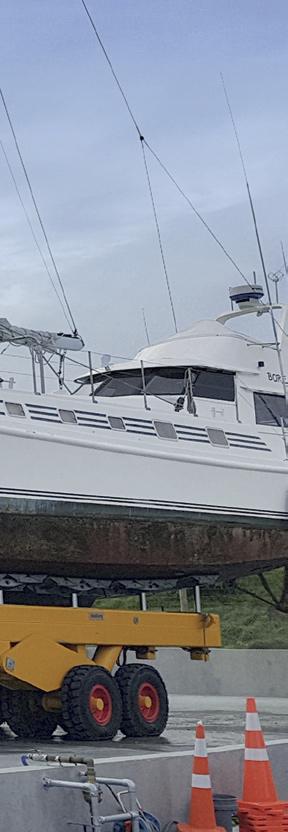
UK marina managers are seeing the benefit of having a lightweight Reach and Rescue pole to hand to ensure safety. MDL Marinas has supplied every marina manager at each of its 20 marinas across the UK and Europe with a pole, and Bangor Marina, part of the Quay Marinas group, has recently added one to its emergency equipment inventory.
The telescopic rescue pole is a multi-award winning, compact, lightweight design that can be extended to 20m (66ft) within seconds, saving valuable time in an urgent rescue situation. Its simple, quick-release clasps with a range of interchangeable water rescue attachments ensure the pole can be operated efficiently, accurately and with minimal training.
The team at MDL’s Shamrock Quay marina in Southampton was the first to recognise the need for a
recover persons who have accidentally fallen in the water,” said marina supervisor Barry Radband.
Elsewhere, marina manager Kevin Baird and his team at Bangor Marina have also positioned a Reach and Rescue pole inside a water rescue system, dubbed the ‘Emergency Point’, which is available to fishermen working on the busy pier.
“Fishermen do fall in the marina,” Baird said and, while typical water safety equipment such as life rings are already in place on the
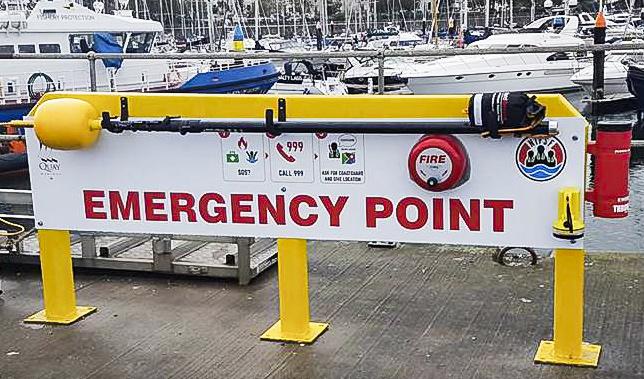
swift and accurate method to recover any person in the water without needing to get into the water themselves.
The pole was called into action almost immediately –three lives have been saved at the marina since it was installed.
“We have used the equipment on three occasions to successfully
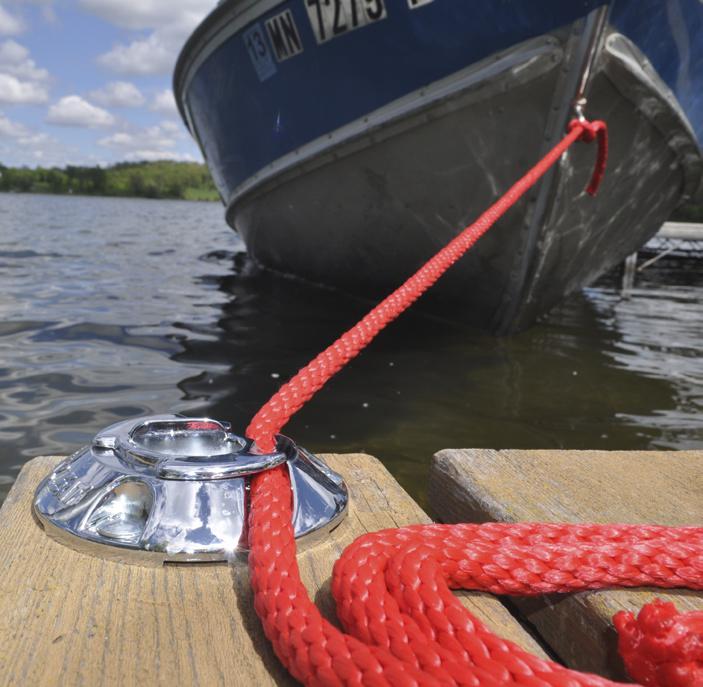
UK marine equipment manufacturer Barton Marine has introduced a range of Quick Cleat mooring solutions – an alternative to tying knots to secure items on pontoons and around marinas by simply twisting open a locking mechanism, dropping in a line and releasing.
pier, “a life ring is no use if you fall between the boat and the quay.”
To date, the long-reach Reach and Rescue pole has prevented the deaths of more than 50 people during potentially life-threatening situations, including rescuing people from man overboard situations. www.reachandrescue.com
With a low profile and unobtrusive design, Quick Cleat is ideal for mounting to pontoon decks, providing a fast secure mooring point with a considerably lower trip risk in comparison to traditional open cleats. It is particularly useful for those looking to secure vessels that are in frequent use, or on short-term moorings such as fuel pontoons or visitor berths. Lines are held tight in one direction while being fully adjustable in the other and totally secure.
Quick Cleats can also be used for hanging or storing fenders, securing tenders, SUPs, kayaks or other watercraft, without any knot tying knowledge.
The range includes:
• Quick Cleat 60040: a 316 marine grade stainless steel version, which securely holds lines from 6-10mm (0.3-0.4in) and loads up to 540kg (1,190lbs).
• Quick Cleat 60030: a versatile, tough construction of heavy duty nylon Zytel from DuPont, which holds lines from 6-10mm (0.3-0.4in) and loads up to 70kg (154lbs).
• Quick Cleat 60020: a smaller version constructed of DuPont’s heavy duty nylon Zytel, which holds lines up to 6mm (0.3in) and loads up to 30kg (66lbs).
www.bartonmarine.com
Italian pedestal manufacturer Plus International is offering a wide range of floor-standing hygiene dispensers for marinas.
The product launch came in time to meet new regulations for sanitiser to

be made available on marina pontoons in Italy (see article p. 29) and the likelihood that similar rulings may be
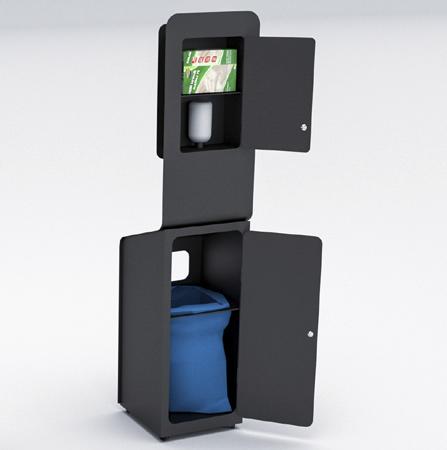
introduced in other countries.
Most models are customisable with marina logo and come in a choice of colour, design and material. Larger dispensers offer space for hand sanitiser, gloves, face masks and a waste bin. The smallest free-standing model (right) is a functional but stylish hand sanitiser pole which takes up little space and is ideal for marinas looking to provide a solution alongside each berth.
Other options include a wheeled unit that can be moved between busy areas and a tabletop version with room for hand sanitiser and gloves.
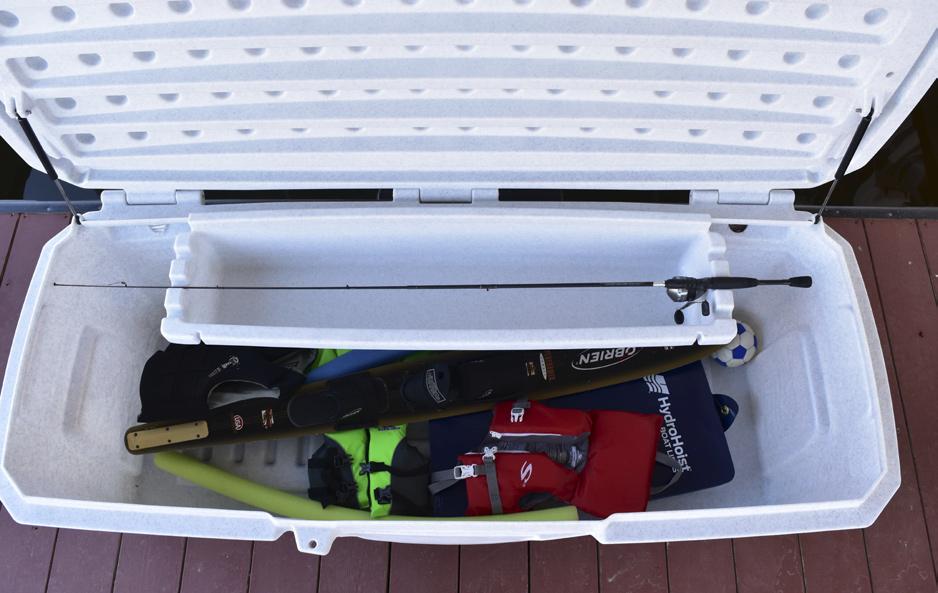
US-based HydroHoist Boat Lifts has released a new solution for dockside storage – the 78-inch (198cm) Rectangular HydroLocker.
The HydroLocker series now offers two designs built to withstand harsh marine environments and manufactured using tough, UV-stabilised polyethylene, which is more resistant to cracking and longer lasting than glass fibre. The rotomoulded HydroLockers are impactresistant and virtually maintenancefree, accepting standard padlocks to securely store items inside.
The new Rectangular version boasts 25ft³ (7,800cm³) of storage capacity. The tongue and groove lid resists water penetration and the ribbed bottom of the locker provides better structural support, increases airflow and doesn’t trap water between the locker and dock, thus reducing wood rot and mould. It has a removable tray to accommodate smaller items or fishing rods. The unit can also be purchased with optional
accessories like the Gas Shock Assist and Off Dock Mounting Bracket kits.
The 50-inch Triangular version offers 14ft³ (396,000cm³) of storage capacity, accommodating a water riser and hose storage. It integrates with a HyPower EnergyMate power supply for an allin-one water and power organisational tool.
“We are proud to produce the most practical, durable and well-thoughtout products on the market,” said Mick Webber, HydroHoist CEO. “Our Triangular HydroLockers have been a huge success over the years, however we have seen increased demand for polyethylene dock lockers in additional sizes. The material is very popular due to the product being virtually maintenance free and they don’t get a chalk film or crack like fiberglass dock lockers. The new 78-inch Rectangular HydroLocker should be a necessary purchase for any boat owner.”
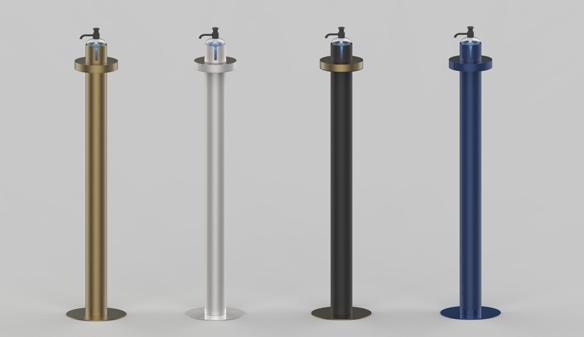
www.boatlift.com
Products are available via Marina Planet, which represents a network of companies manufacturing marina- and yard-specific goods.
www.marinaplanet.it
ASAR/GCM Safe
Harbour Drystacks, USA 33
Bellingham Marine, USA 7, 9 &11
Bluewater Marine & Dock Specialities, USA 24
Capria, Argentina 38
Conolift by Kropf Industrial, Canada 28
Dual Docker, Austria 48
Dura Composites, UK 28
Eaton Marina Power & Lighting, USA 24
Flovac, Spain 32
GH Cranes & Components, Spain 38
Gigieffe, Italy 16
Golden Manufacturing, USA 59
HydroHoist, USA 42
Ingemar, Italy 12
Inland & Coastal Marinas, Ireland 16
Lindley, Portugal 52
Livart Marine, China 50
Lumberock Premium Decking, USA 50
MYP at IBEX, USA 31
Marex, Croatia 38
Maricer, UK 26
Marina Cloud, Croatia 42
Marina Master by IRM, Slovenia 52
Marina Projects, UK 19
MarinaGo by Scribble Software, USA 50
Marinetek, Finland 4
Martini Alfredo, Italy 35
Metstrade 2020, Netherlands 20
Pacsoft, New Zealand 48
Pick a Pier, Israel 46
Rolec Services, UK 6
Ronautica, Spain 40
Roodberg - a brand of Frisian Industries, Netherlands 55
SF Marina System, Sweden 2
Seaflex, Sweden 8
Sunwalk Superior Surfaces, USA 46
Swedeship Sublift, Sweden 40
TIVA Building Products, Canada 48
Twinwood by Soprefa, Portugal 32
Walcon Marine, UK 26
Wiggins Lift Co, USA 60

Jean-Pierre Carminati, director of Poralu Marine, passed away on 6th May at the age of 63 following a long battle with illness.
Together with his brother Philippe, Jean-Pierre developed Poralu’s ‘pontoons’ division in the 1980s and over 30 years of entrepreneurial initiatives and adventures followed.
Léa Carminati, his niece, joined the company a few years ago and, alongside company president Laurent Gasiglia, strives to carry on his legacy within Poralu Marine.
Jean-Pierre was also committed to helping his community and served as mayor of Nantua in 2008.
His loss leaves a great void and all 150 Poralu employees feel deep sadness.
Our sincere sympathy goes out to the Carminati family.
Suzanne Davies (below right) is to become CEO of the Australia-based Marina Industries Association (MIA) on 1st October. She takes over from Colin Bransgrove who has headed up the association for 13 years.
MIA chairman Andrew Chapman (below left) said he and the MIA board were delighted to welcome her. “Suzanne has all the attributes we could wish for in a CEO. Additionally, she has an intimate understanding of the MIA and the needs of our members that comes with being an active MIA member and MIA director since 2012.”
Davies’s most recent position was as CEO of d’Albora Marinas and previously as general manager of Royal Prince Alfred Yacht Club in Sydney for 12 years. Prior to that she held a range of senior positions, particularly in sales and marketing in the hotel accommodation sector. She is a current director of Australian Sailing.

Composite materials firm Dura Composites has scooped a second Queen’s Award for Enterprise, this time in the Innovation category, for its pioneering rapid-deployment train station platform solution known as Dura Platform.
The Queen’s Awards are a royal seal of approval for the UK’s most outstanding businesses and Dura’s 2020 award follows the Queen’s Award for Enterprise in International Trade, which was presented to the company in 2017.
Dura Platform - a height-adjustable composite train station platform that reduces gaps between train and platform edge to enhance passenger safety, is rapidly installed and therefore reduces passenger disruption. www.duracomposites.com

floating dock systems in 146 countries.





